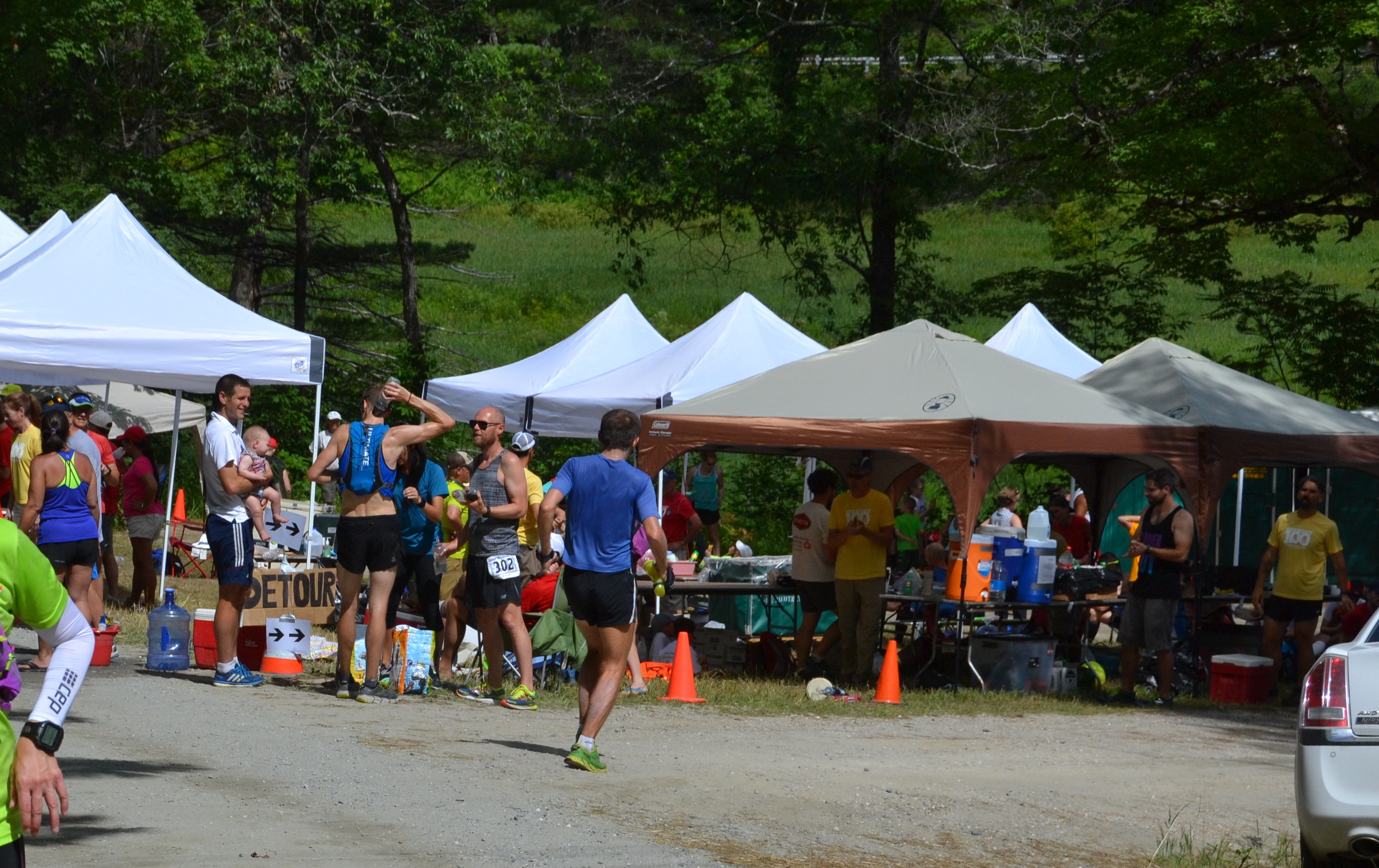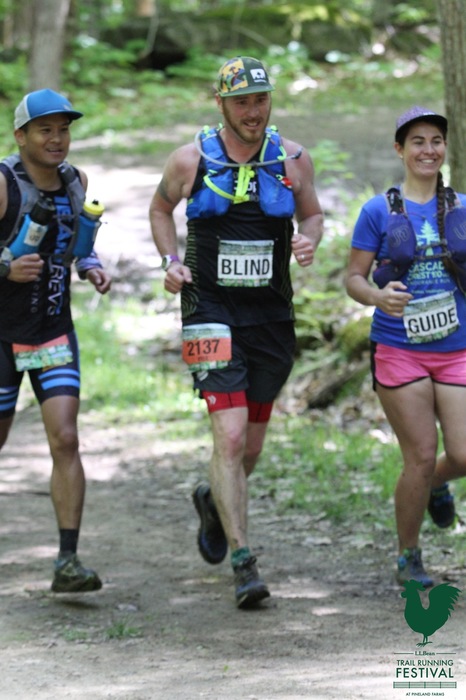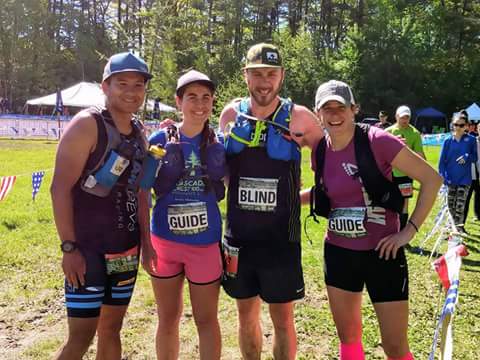Fueling for VT100 Success
Post provided by Anne Rollins for QT2 Systems
Once we enter the magical land of ultra, fueling takes on a new meaning with new parameters. Typically, fueling a marathon has a framework formula that is relatively predictable, but part of the draw of the ultra, the uniqueness of the course and experience, can create a fueling challenge for even the most experienced.
Sports fueling may often be overlooked by the novice, but by the time you have enough experience to get to an ultra-distance event like the Vermont 100, you likely recognize the importance of nutrition and the impact proper fueling can have on your well trained for event. All the training will not be accessible without proper fueling, so let’s review some tips to make sure your Suburu has gas in the tank and make sure you have the best possible experience throughout your epic journey!
Our main considerations of energy and electrolytes remain constant. However, the intrigue of ultras can be the variation in locations, terrain, distance, discipline of sport and more, and The Vermont 100M/100K offer all of this and then some!
You’ll start the weekend with loads of excitement and anticipation and head to check-in and race meetings on Friday. Vermont is a rural place, and weather can create last minute changes to travel. Plan to have snacks and fluids readily available to you for check in and the meeting. If you choose to have dinner provided by the race venue, you’ll load up beginning at 5pm. Some runners are very routine about meals and may bring their own, while others may enjoy the full experience and simplicity of race provisions.
Elusive sleep can be part of the journey, but whether you’ve counted sheep or sawed logs, you’ll be up early for the 100M. (100K gets a few extra hours to sleep in).
Getting some last carbs in the tank about 3 hours pre-race is beneficial. For the 100M, this will mean a wake up around 1am. Make a decision. If you expect to sleep lightly in anticipation, you may choose to get some carbs at around 1am and let the carb coma lull you back to sleep for a few hours. If you think getting up to eat at 1am may keep you awake and rob you of precious sleep, maybe consider getting up on the earlier side for check in that begins at 3am and get in some fuel then.
100M’ers, take in some last carbs about 30 minutes prior to start at 4am, as you move away from the hopefully slumbering 100K’ers.
100K’ers, follow the same guidance, just a few hours later.
For the duration of the race, you want to try to mimic as close to what has worked for you in your rehearsals. The ‘fun’ part is seeing the trails, the weather and making any adjustments as needed.
There are specific crew meet ups/aid stations and all of these are manned, have handler access, bag drops and porta potties. You are allowed one pacer, but there is no ‘muling’ allowed. Your pacer cannot carry food or drink for you, or run ahead to fill your bottles. Should you forego a crew, you can have your bags dropped with your supplies at these stations. Whether you use a crew or drop bags, creating a list of what you specifically anticipate needing for each aid station will be most helpful.
PRO TIP: Race directors reserve the right to make adjustments, so pay attention at the athlete meeting and any emails or guides provided to you for the most up to date information.
THE NUTS AND BOLTS
Calories – Competing in an ultra requires a significant amount of calories, and while carbohydrates are important, an ultra distance will require a specific amount of protein and fat calories and electrolyte repletion. Too much protein and fat and you may risk GI upset; too little and you’re under fueled. Train not only your legs and mind, but your gut.
Hydration – Staying hydrated not only replaces electrolytes that we lose through sweat but also helps us to maintain temperature regulation which is more important during ultras as we expect a temperature shift from night to full sun, elevation changes, and then just actual weather. Use products that offer electrolytes, such as Base Salts. Monitor your fluids in and fluids out through urination. Lack of urination can be a sign of dehydration.
Create an aid station list. For The Vermont 100M, aid stations are at miles 21.2, 30.5, 47.4, 58.7, 69.4, 76.5, 88.2, 94.5. Think logically about what you will need at each and organize accordingly. This is most critical if you are dropping bags, but organization in your crew van can make a difference. Remember, you may not always be clear headed or in a good mood, and moving a t-shirt may seem like an insurmountable task. (The aid stations are the same stations for the 100K but fall at different mile markers on that course.)
PRE-RACE
Two days before race (Thursday)
● Eliminate excessive fiber and hard to digest foods.
● Focus on hydration.
● Pack in carbohydrates.
Day before race (Friday)
● Have a very large, carbohydrate heavy breakfast.
● Focus on easy fats and proteins throughout the day – peanut butter, coconut, granola bars.
● Don’t stuff yourself, but almost.
RACE DAY
Race day (Saturday)
● Top off the tank 1am or 2:45am – sleep choice, dependent.
● 30 minutes pre-race – 25g carbs
● During the race – the amount of carbs you require will be dependent on your size, previous carb consumption during training, and the terrain. Most athletes will fall in the 40-60g of well-balanced carbohydrates per hour (meaning a balance of sports drink, semi-solids and solids)
WHEN THINGS GO WRONG
The best laid plans can get away from you in an ultra, and nausea, vomiting and diarrhea are an unfortunate not uncommon result. While nausea may prohibit you from taking in vital nutrients, vomiting and diarrhea will leave you with even less. Clearly something to avoid, but if it happens, don’t panic. Take a beat, lower your heart rate (it’s probably already lowered if you are vomiting) and work to slowly replete your fluids and calories.
POST RACE
Post-race (Sunday)
● Celebrate! But, before you celebrate too much, get in a few items to help recovery.
● A good recovery drink can help decrease (not eliminate!) fatigue and muscle soreness. A 4:1 carbohydrate:protein ratio is a good general choice.
● Glutamine and Vitamin C have likely been depleted so grab a supplement. Adding these to your recovery drink can help minimize what you need to remember in a post ultra haze.
● Looks for some easily digestible carbs and electrolyte repletion.
● Don’t be tempted by the double cheeseburgers (or your favorite vegan splurge) right away. Your brain may get really excited, but your body and digestive system may not be up to the task. Choose easily digestible foods in small amounts before giving into the bacon, egg and cheese chili burrito.
Enjoy your accomplishments while sipping a celebratory Athletic Brewing Company beverage and relish in your well fueled event!
Anne Rollins CSSD MS RD LDN is a dietitian with The Core Diet/QT2Systems brands and an ultra athlete.

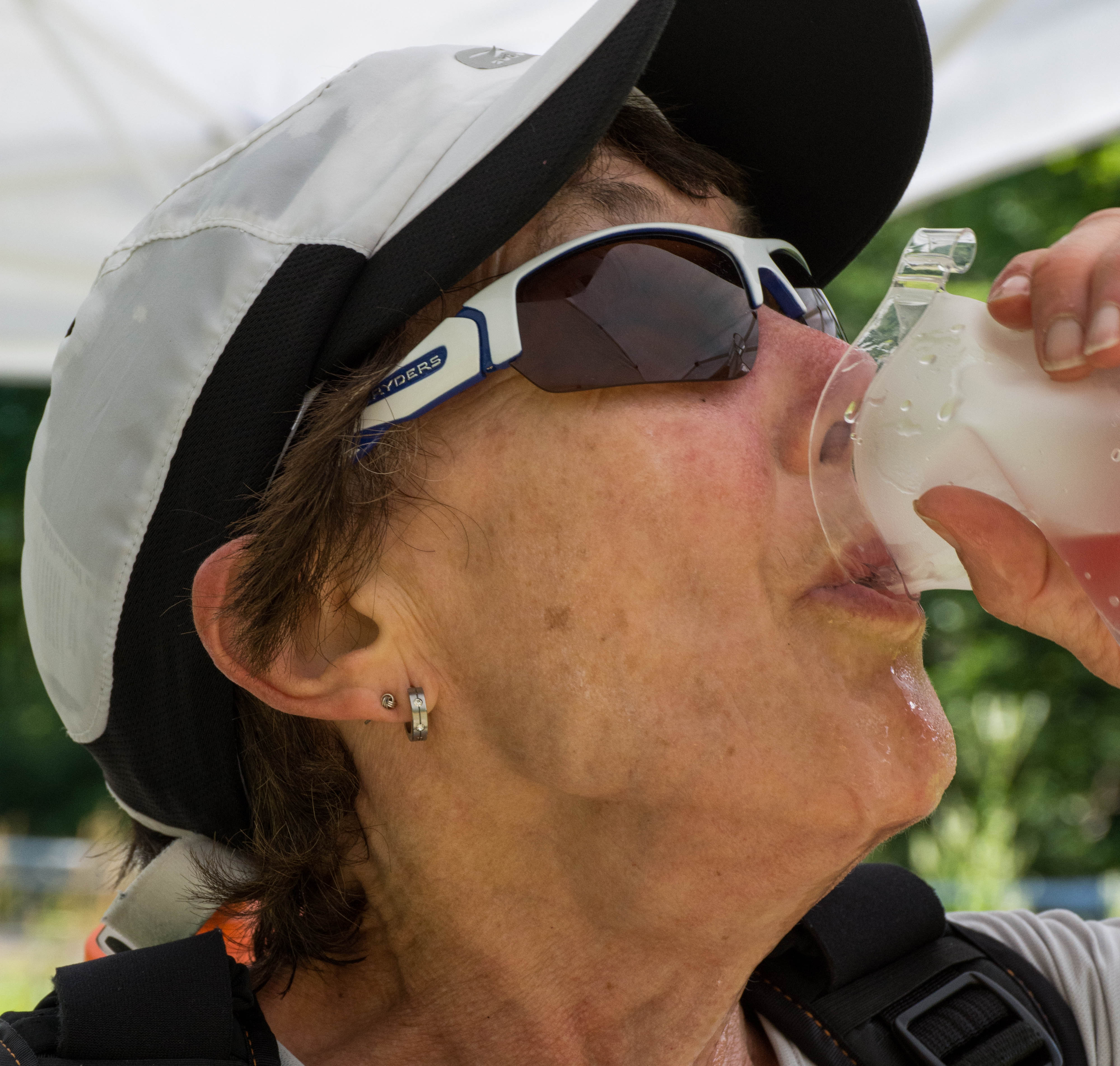

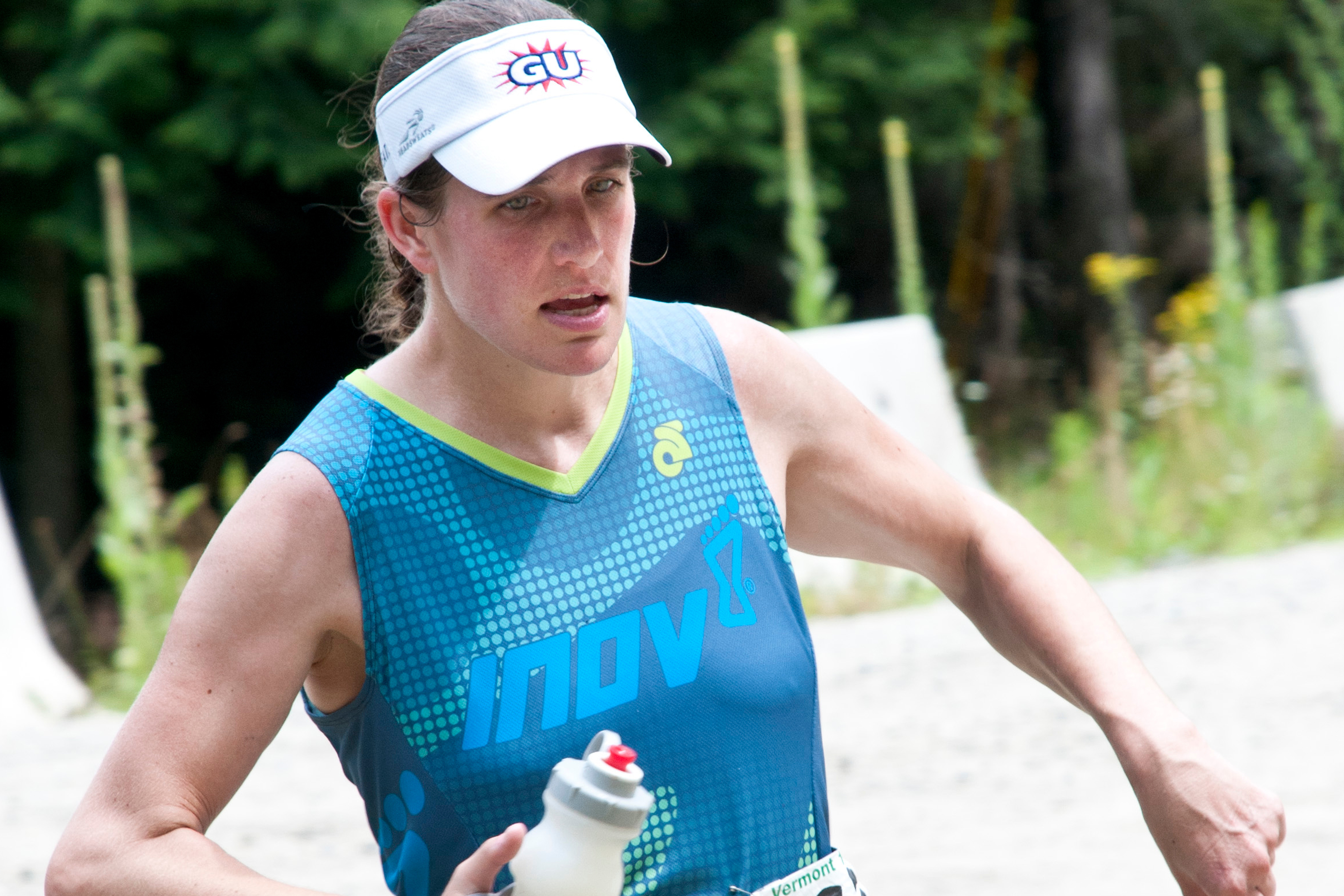
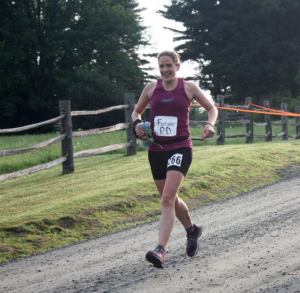

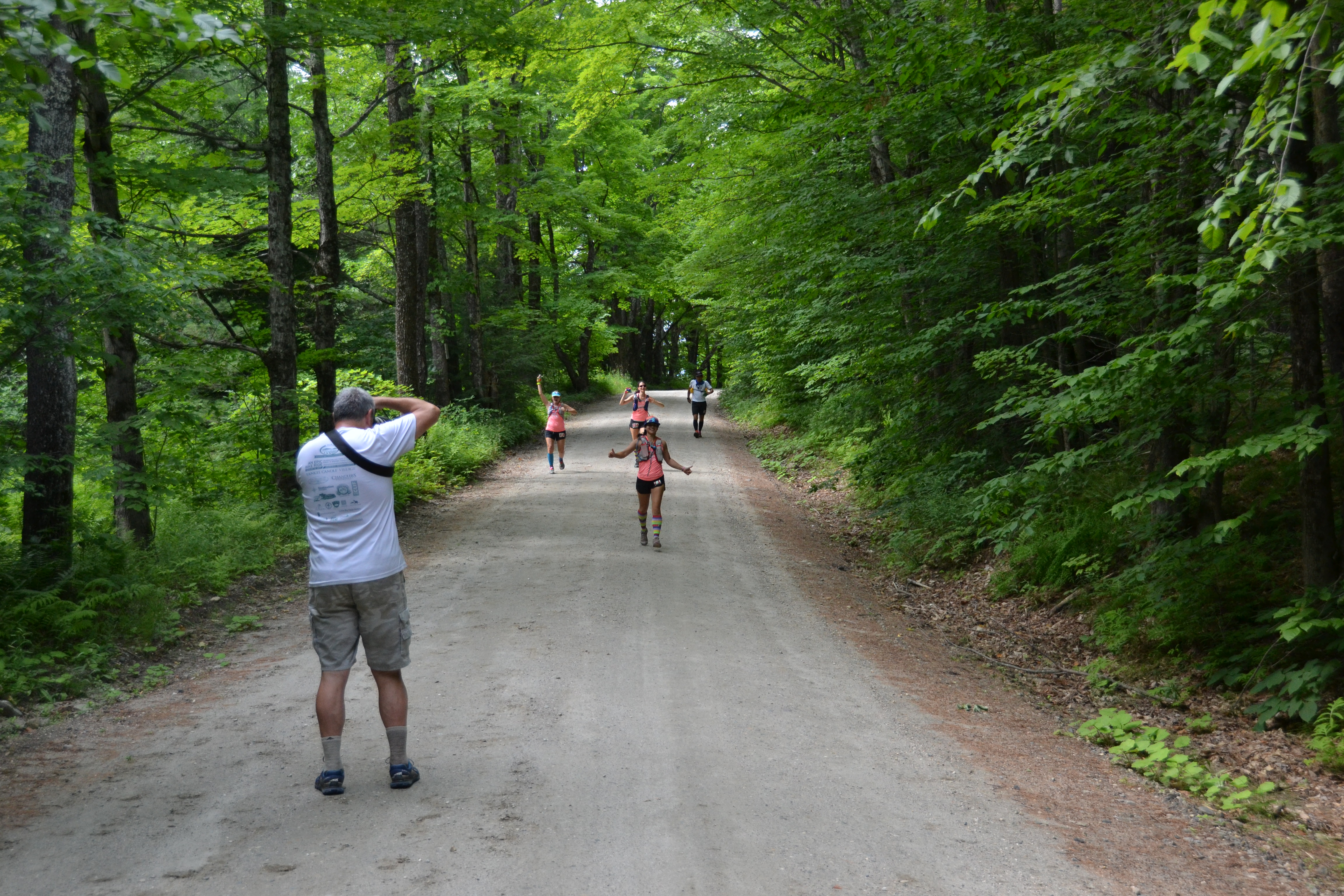
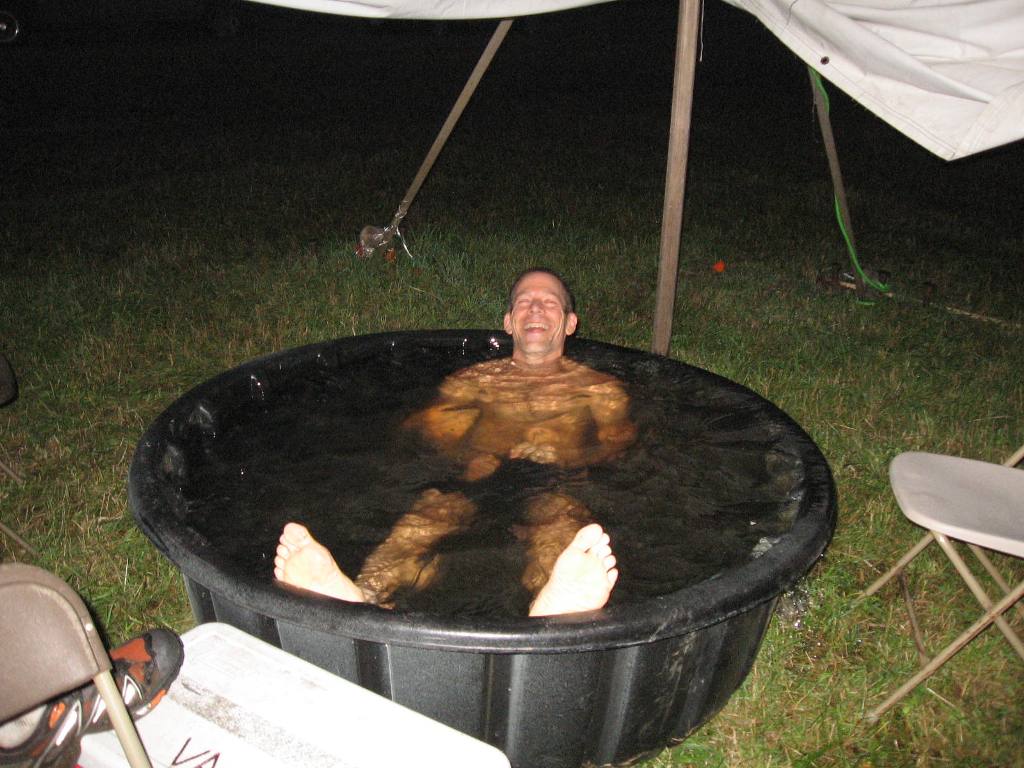
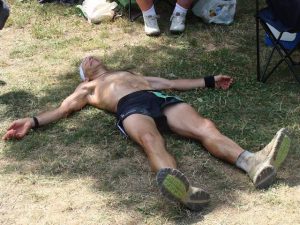
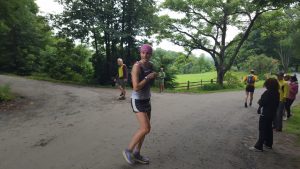
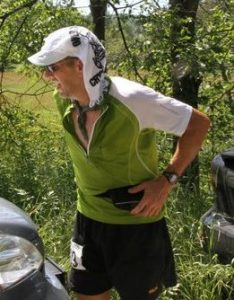
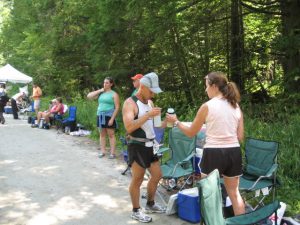
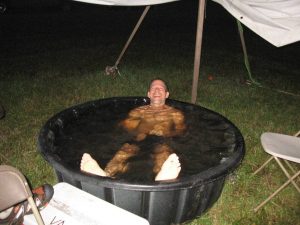
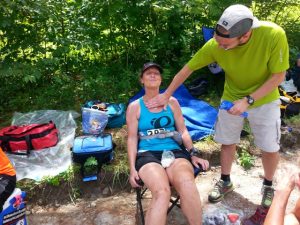
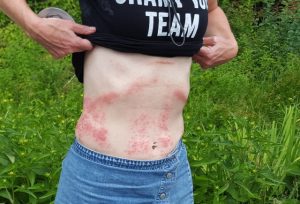
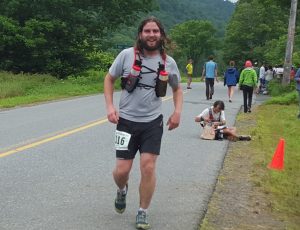
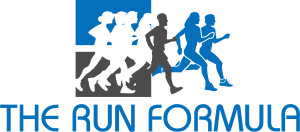
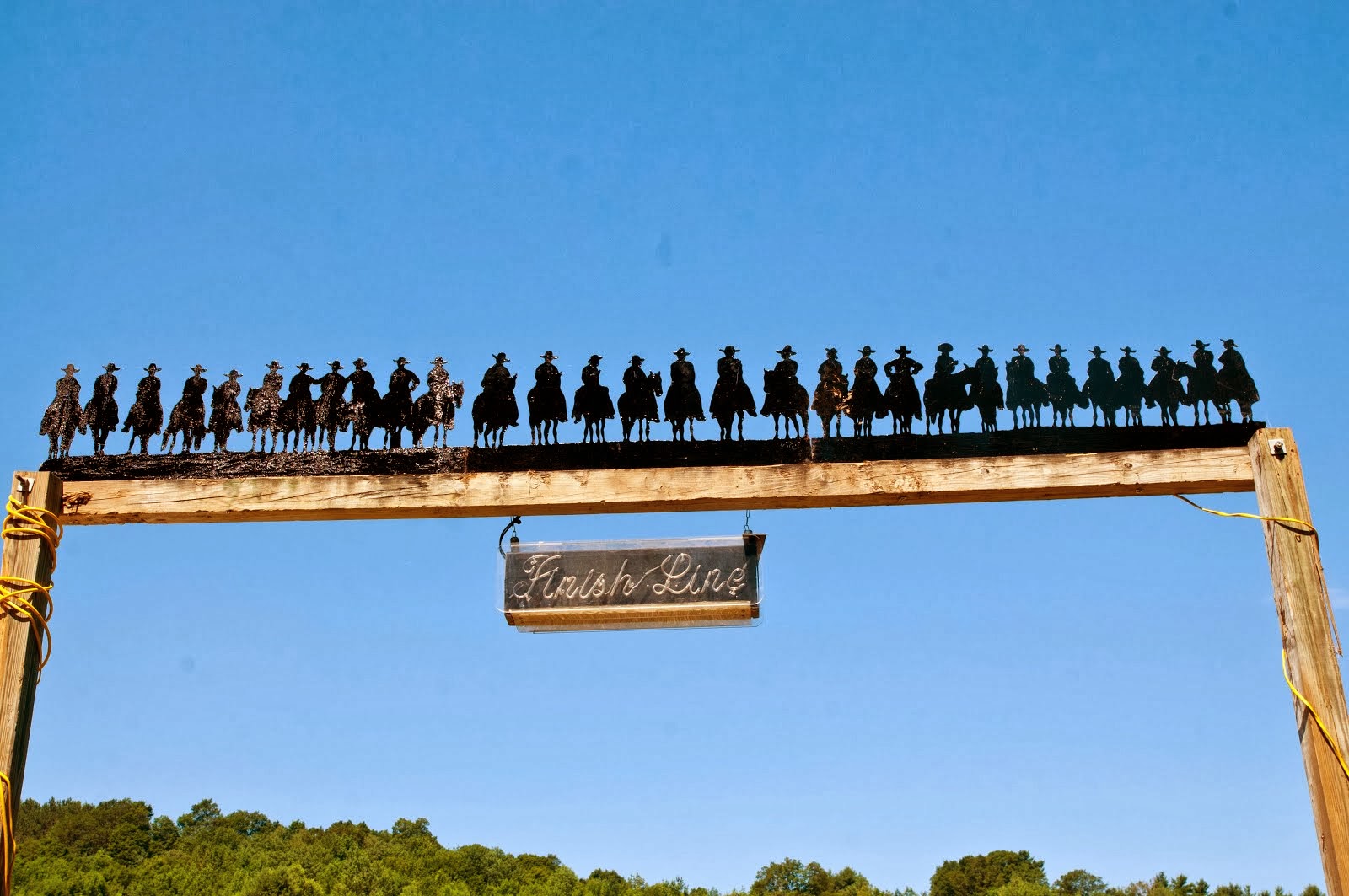
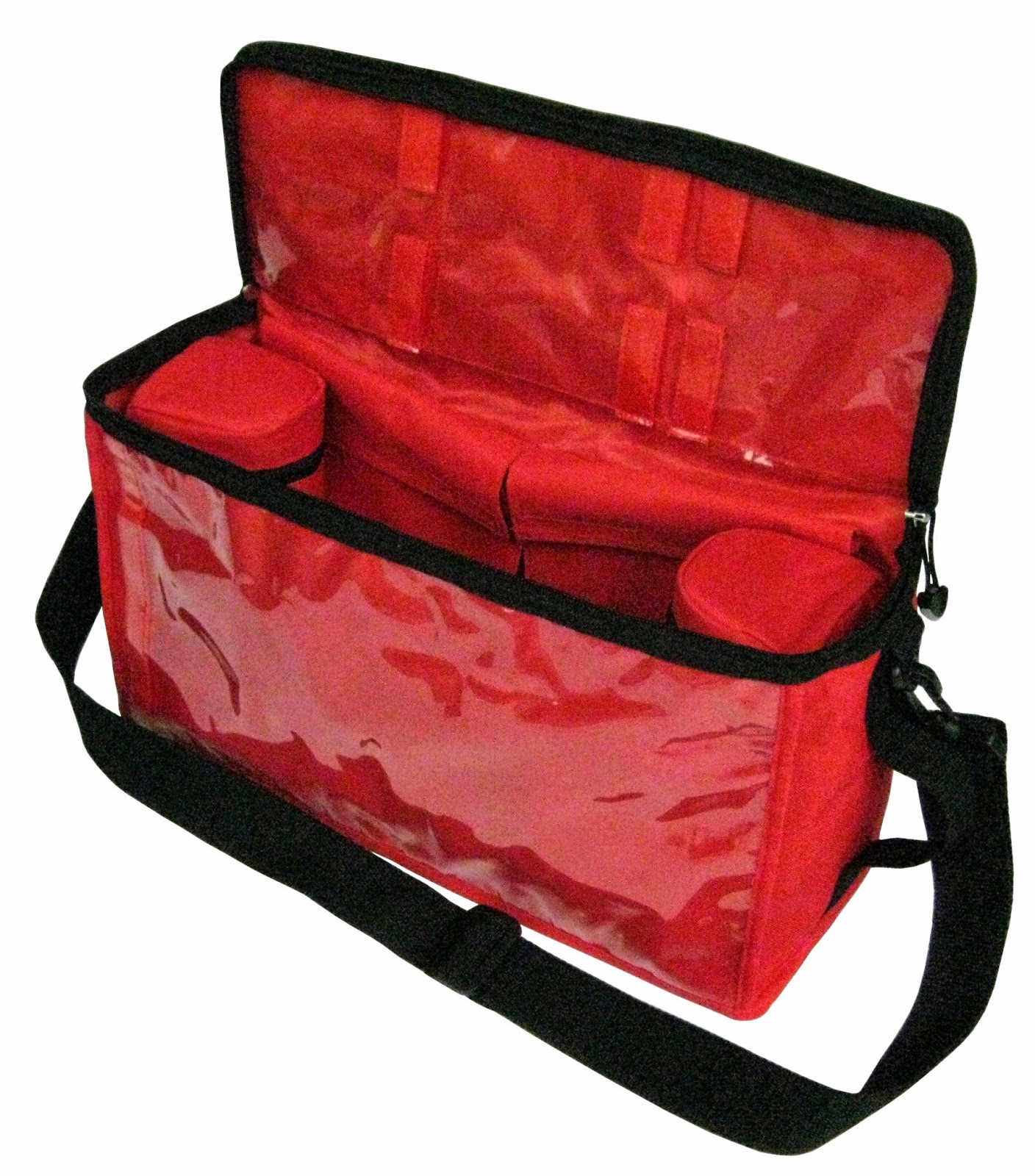
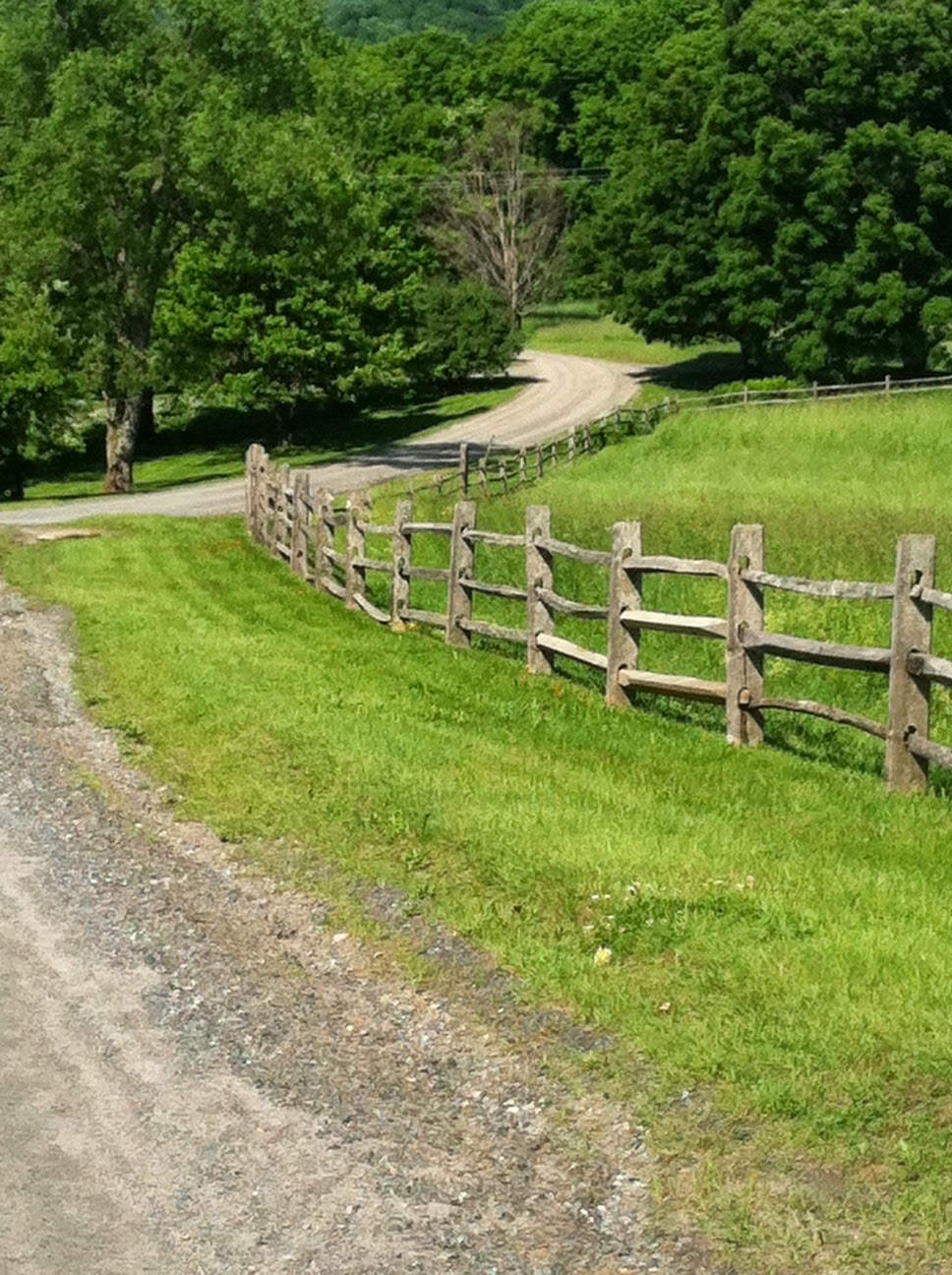 mile. For the Pretty House aid station at mile 21.1, multiply 16.8 min. x 21.1 mi. = 354 min. divided by 60 min./hr. = 5.91 hrs. or 5:54. Since the race starts at 4:00 a.m., you’ll get to Pretty House at about 9:54 a.m. You can do the same for any aid station, and I suggest especially for those you’ll be reaching in the evening, in order to figure where to place your night gear so that you have it at least a half hour before the sun sets at 8:25pm. When I have a crew, I make a table of expected arrival time at aid stations where they’ll be meeting me, based on a range of finish times. I might choose 26 hrs., 28 hrs. & 30 hrs. I’d do the first one for Pretty House, since that’s the first place that my crew can meet me. If I arrive at 9:45, we can all see that I’m just a bit ahead of a 28 hour finish pace, so they should plan on meeting me at Stage Road, the next Handler Station, about 20 minutes earlier than what the sheet says for 28 hour pace. As the day goes on, you and they can develop a good feel for what kind of pace you’re maintaining.
mile. For the Pretty House aid station at mile 21.1, multiply 16.8 min. x 21.1 mi. = 354 min. divided by 60 min./hr. = 5.91 hrs. or 5:54. Since the race starts at 4:00 a.m., you’ll get to Pretty House at about 9:54 a.m. You can do the same for any aid station, and I suggest especially for those you’ll be reaching in the evening, in order to figure where to place your night gear so that you have it at least a half hour before the sun sets at 8:25pm. When I have a crew, I make a table of expected arrival time at aid stations where they’ll be meeting me, based on a range of finish times. I might choose 26 hrs., 28 hrs. & 30 hrs. I’d do the first one for Pretty House, since that’s the first place that my crew can meet me. If I arrive at 9:45, we can all see that I’m just a bit ahead of a 28 hour finish pace, so they should plan on meeting me at Stage Road, the next Handler Station, about 20 minutes earlier than what the sheet says for 28 hour pace. As the day goes on, you and they can develop a good feel for what kind of pace you’re maintaining.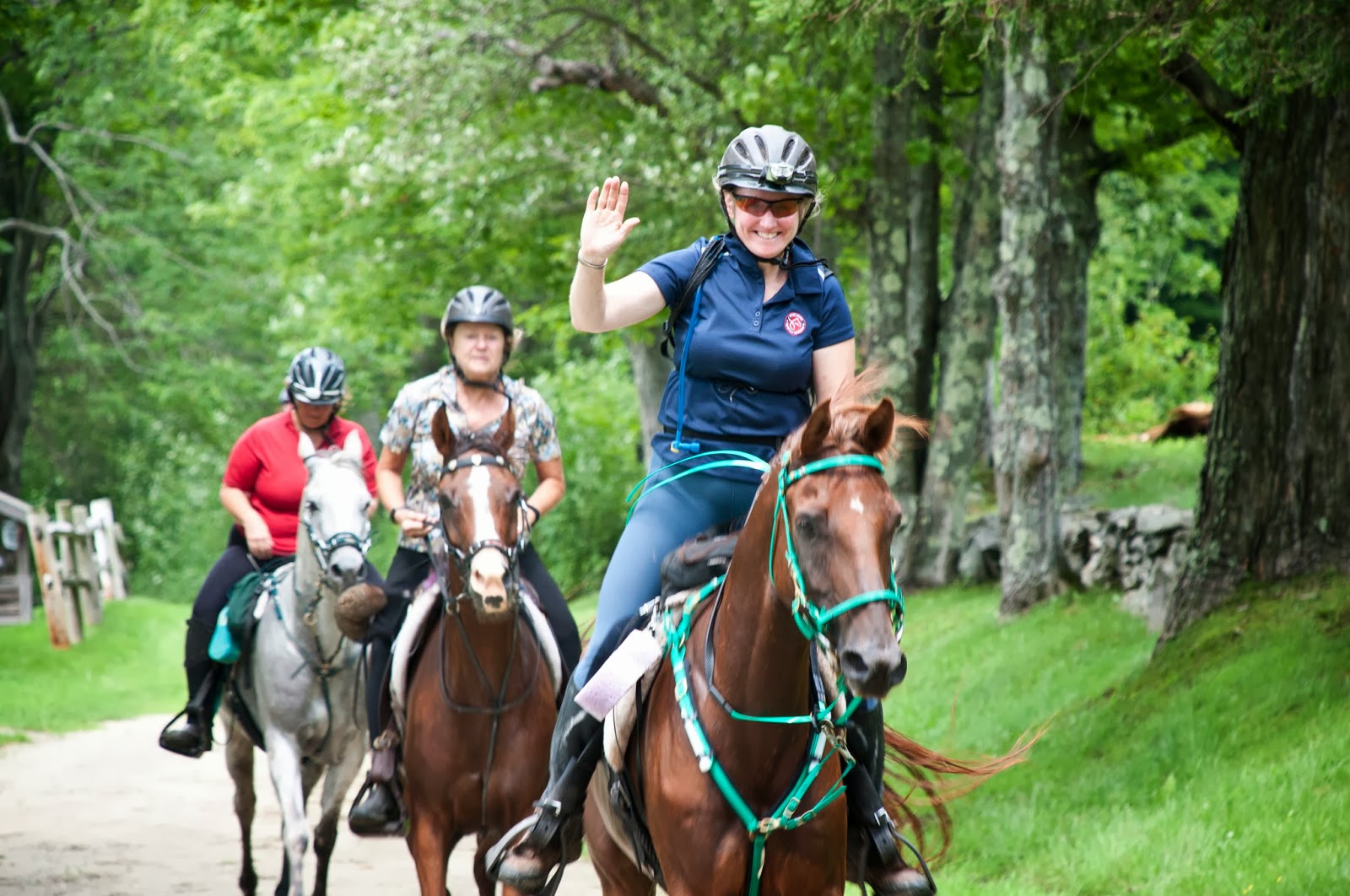 provided some distraction and made the event that much more special.Will they run over you? The answer is no. On the contrary, they want to slow down to your pace, though their riders may not like it.Horses love people and really ‘respect’ humans who run. (In most instances their owners don’t run) On running with horses, there’s one simple word to keep in mind: Communicate. When a horse can’t see you (i.e. you coming up from behind or at night), it doesn’t know you’re a person until you say something. Then, the steed immediately calms down. This is doubly important after dark, when the horse senses your presence well before the rider does. Regardless of the time of day, start chatting with the rider as soon as you’re within voice range. You’ll find that the riders are most friendly, and basically in awe of you because you’re doing 100 miles ON FOOT! If they want to pass you on the road, they’ll say so. If you want to pass them, usually on a trail section where they’re moving slowly and carefully, converse with the rider and ask if you can pass. They’ll tell you when you can do so
provided some distraction and made the event that much more special.Will they run over you? The answer is no. On the contrary, they want to slow down to your pace, though their riders may not like it.Horses love people and really ‘respect’ humans who run. (In most instances their owners don’t run) On running with horses, there’s one simple word to keep in mind: Communicate. When a horse can’t see you (i.e. you coming up from behind or at night), it doesn’t know you’re a person until you say something. Then, the steed immediately calms down. This is doubly important after dark, when the horse senses your presence well before the rider does. Regardless of the time of day, start chatting with the rider as soon as you’re within voice range. You’ll find that the riders are most friendly, and basically in awe of you because you’re doing 100 miles ON FOOT! If they want to pass you on the road, they’ll say so. If you want to pass them, usually on a trail section where they’re moving slowly and carefully, converse with the rider and ask if you can pass. They’ll tell you when you can do so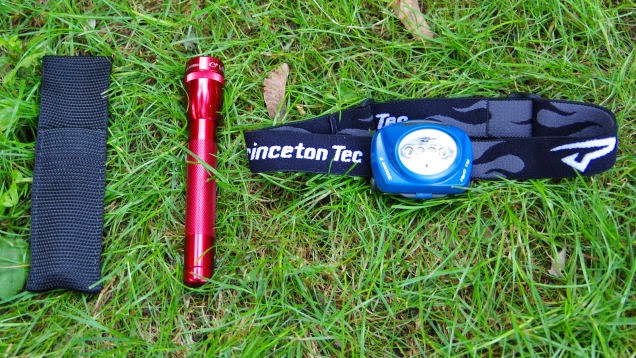 and includes some trail miles. It’s a small price to pay to ensure that you don’t trip early and mess up the whole race. Trying to ‘parasite’ off of others’ lights is inviting trouble. If you wear a headlamp, and plan on keeping it, keep in mind that the first place you can stash it isn’t until Pretty House at 21.1 miles.
and includes some trail miles. It’s a small price to pay to ensure that you don’t trip early and mess up the whole race. Trying to ‘parasite’ off of others’ lights is inviting trouble. If you wear a headlamp, and plan on keeping it, keep in mind that the first place you can stash it isn’t until Pretty House at 21.1 miles. 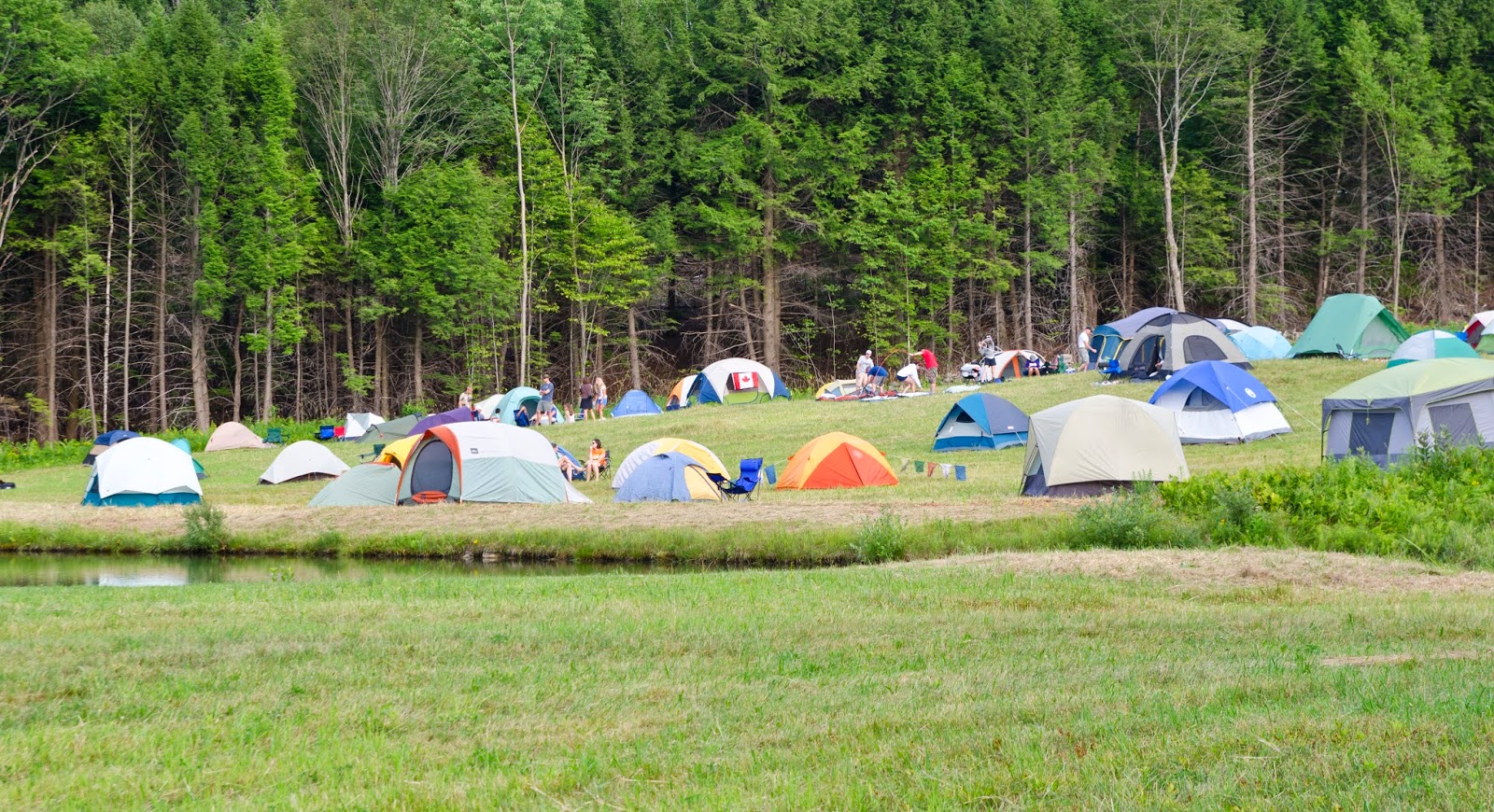 Pin your bib on now, because that’s one of the most nerve-racking tasks if you wait until the morning just before you run. I suggest on your shorts, rather than your shirt, because you’re less likely to be changing shorts, and may be wearing a second layer on top when and if it gets cool. You may not sleep well, or much at all or for many hours (The 4:00 a.m. start means getting up rather early, the 100k start at 9am can seem early to some), but do your best to relax and remember that it’s the rest you got on Wednesday and Thursday nights that’s much more important. Even if you hardly sleep (that happened to me one time), just relax and know that your body is getting rest from the fact that you’re reclining.
Pin your bib on now, because that’s one of the most nerve-racking tasks if you wait until the morning just before you run. I suggest on your shorts, rather than your shirt, because you’re less likely to be changing shorts, and may be wearing a second layer on top when and if it gets cool. You may not sleep well, or much at all or for many hours (The 4:00 a.m. start means getting up rather early, the 100k start at 9am can seem early to some), but do your best to relax and remember that it’s the rest you got on Wednesday and Thursday nights that’s much more important. Even if you hardly sleep (that happened to me one time), just relax and know that your body is getting rest from the fact that you’re reclining.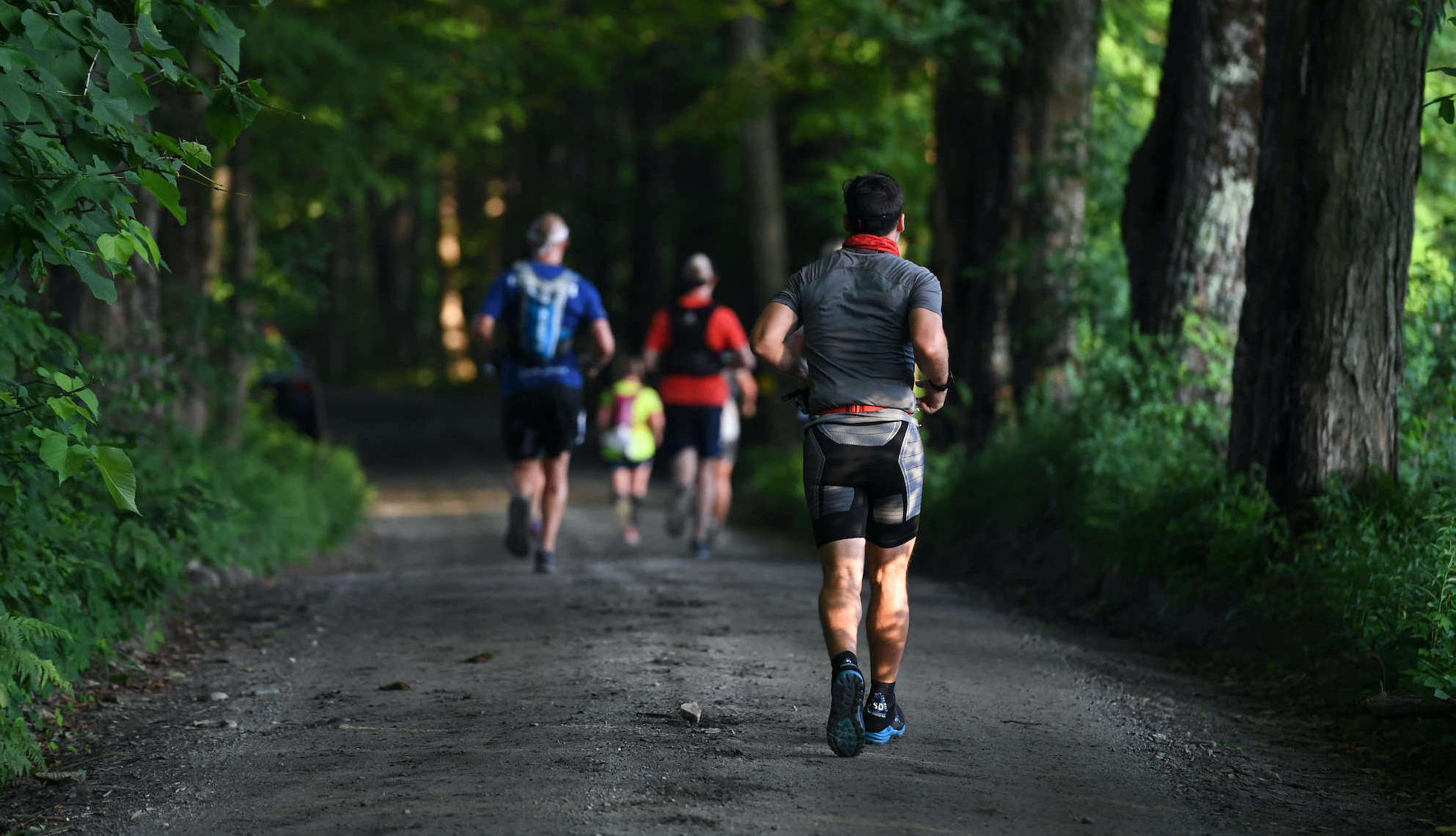

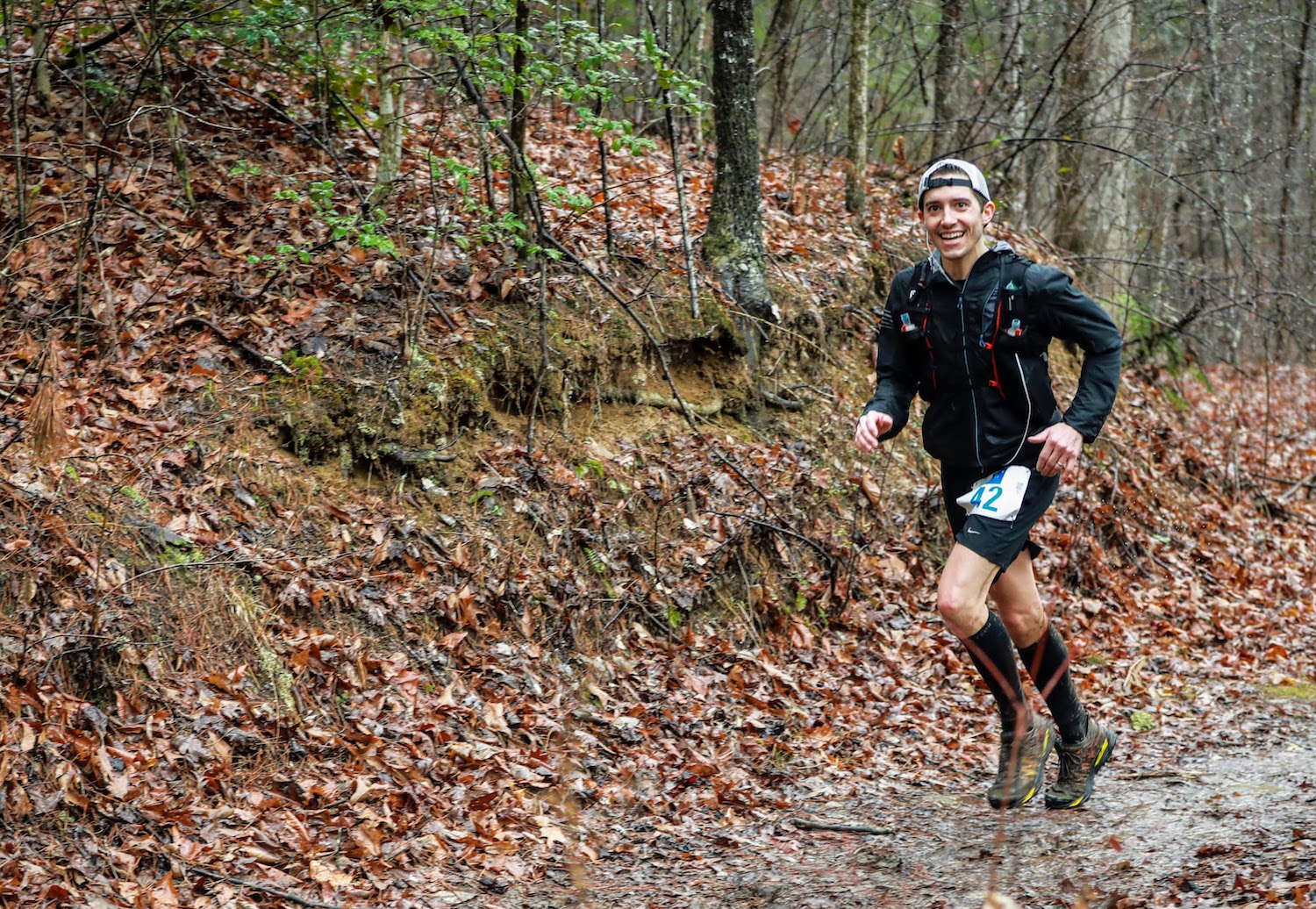
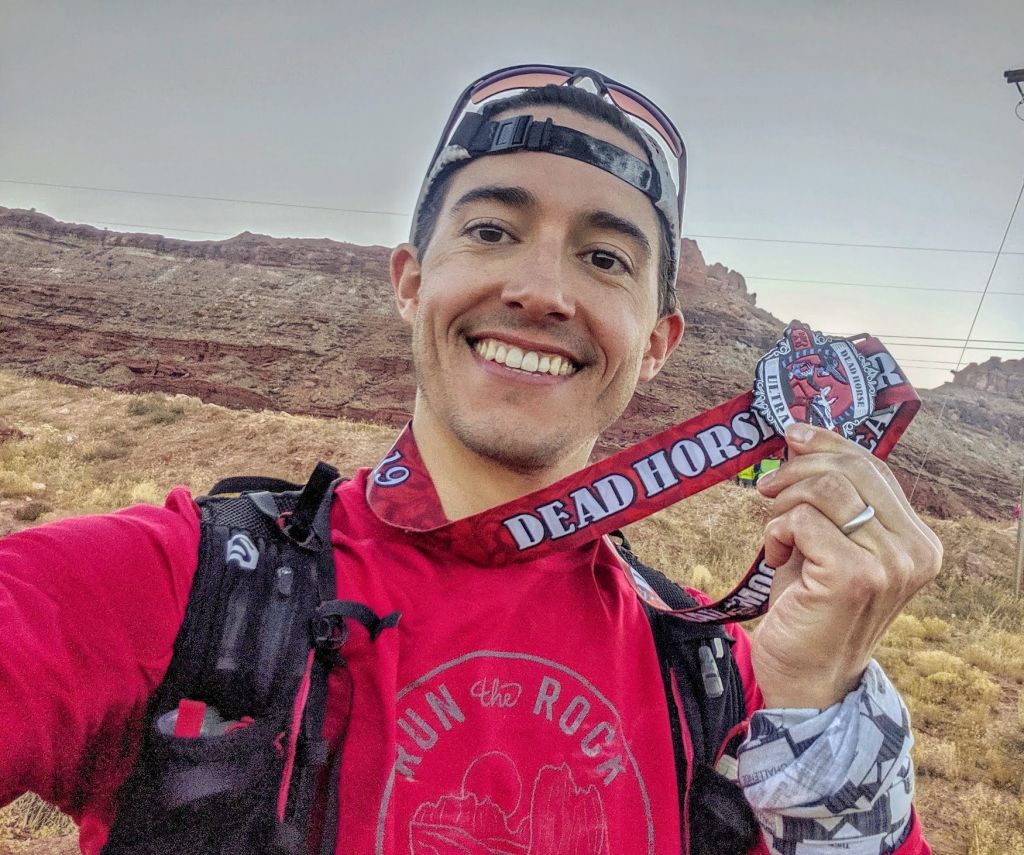
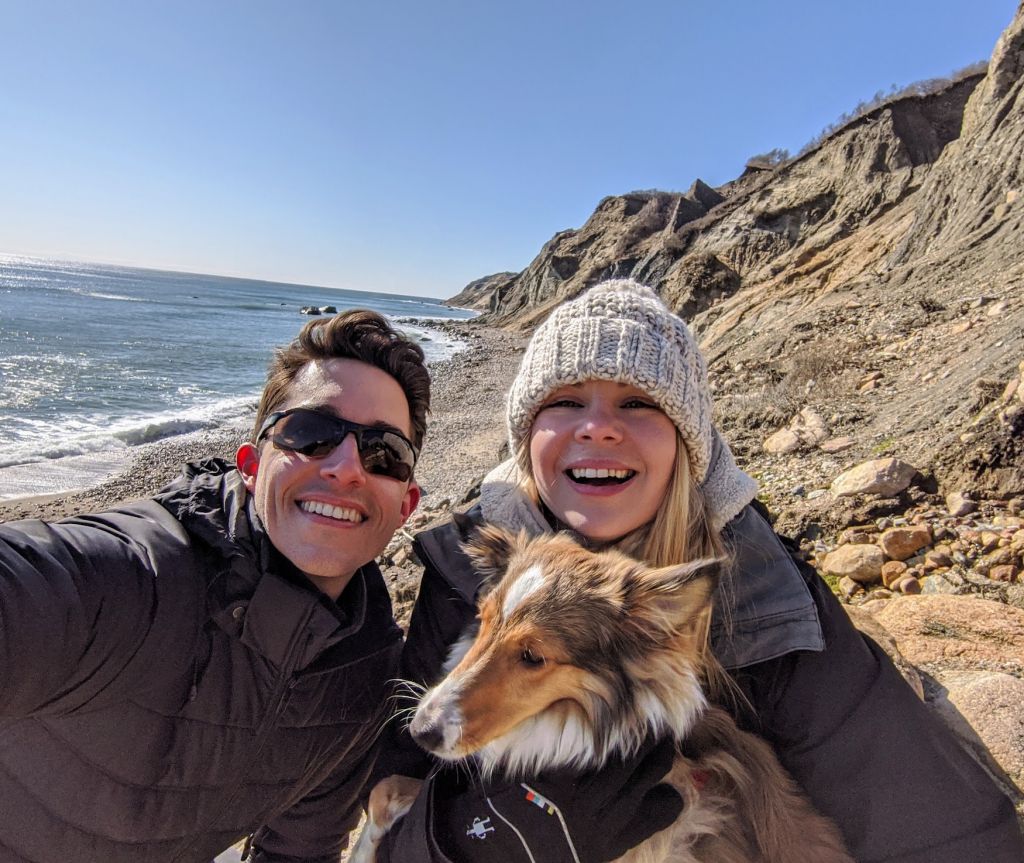
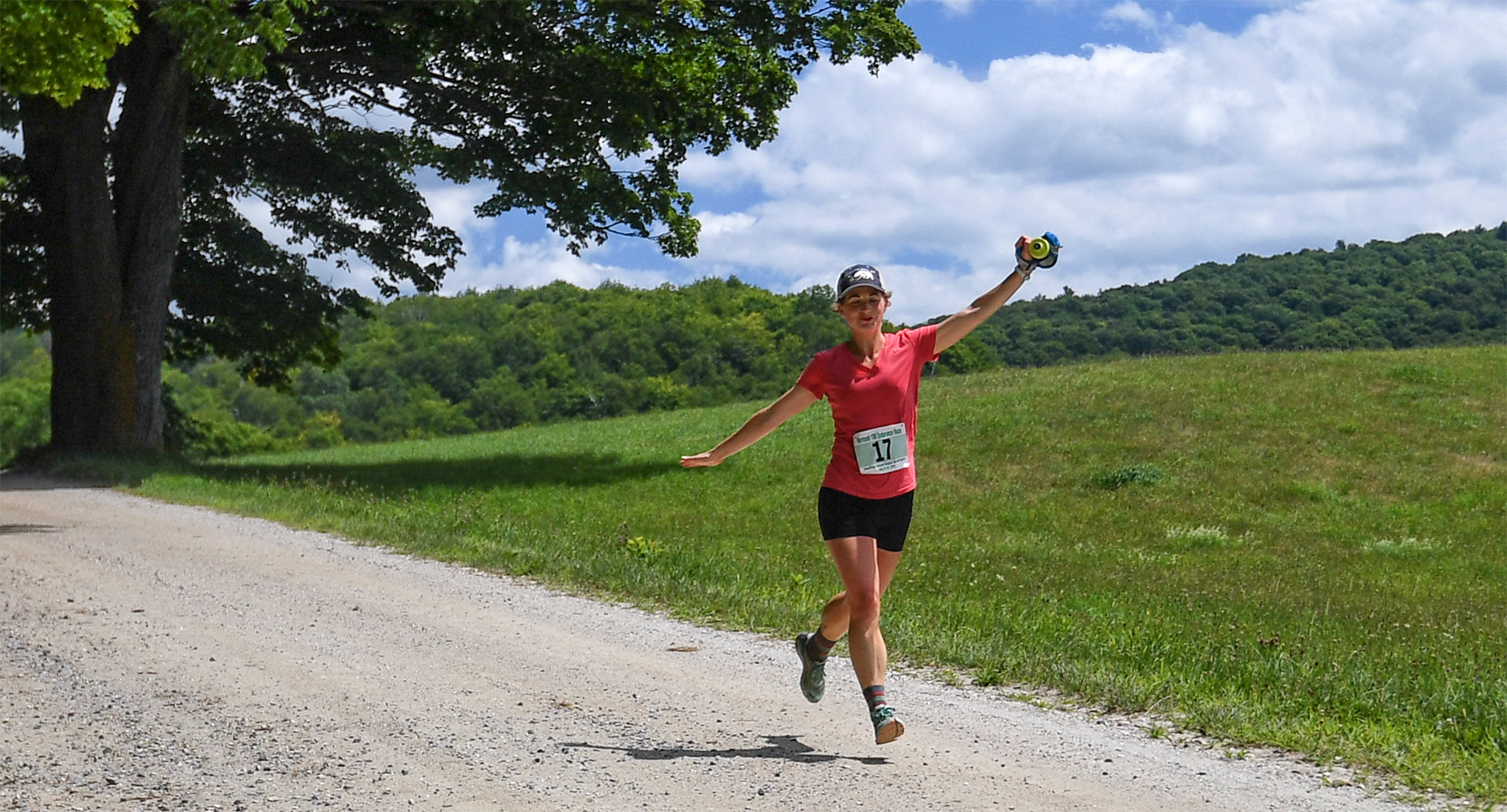
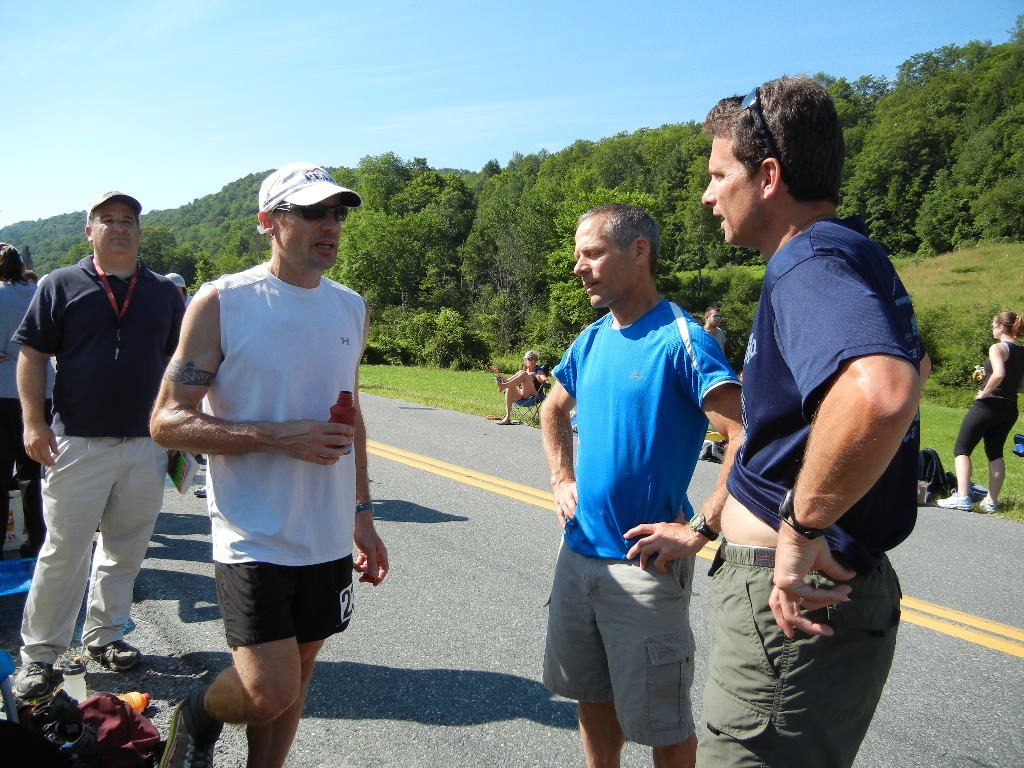
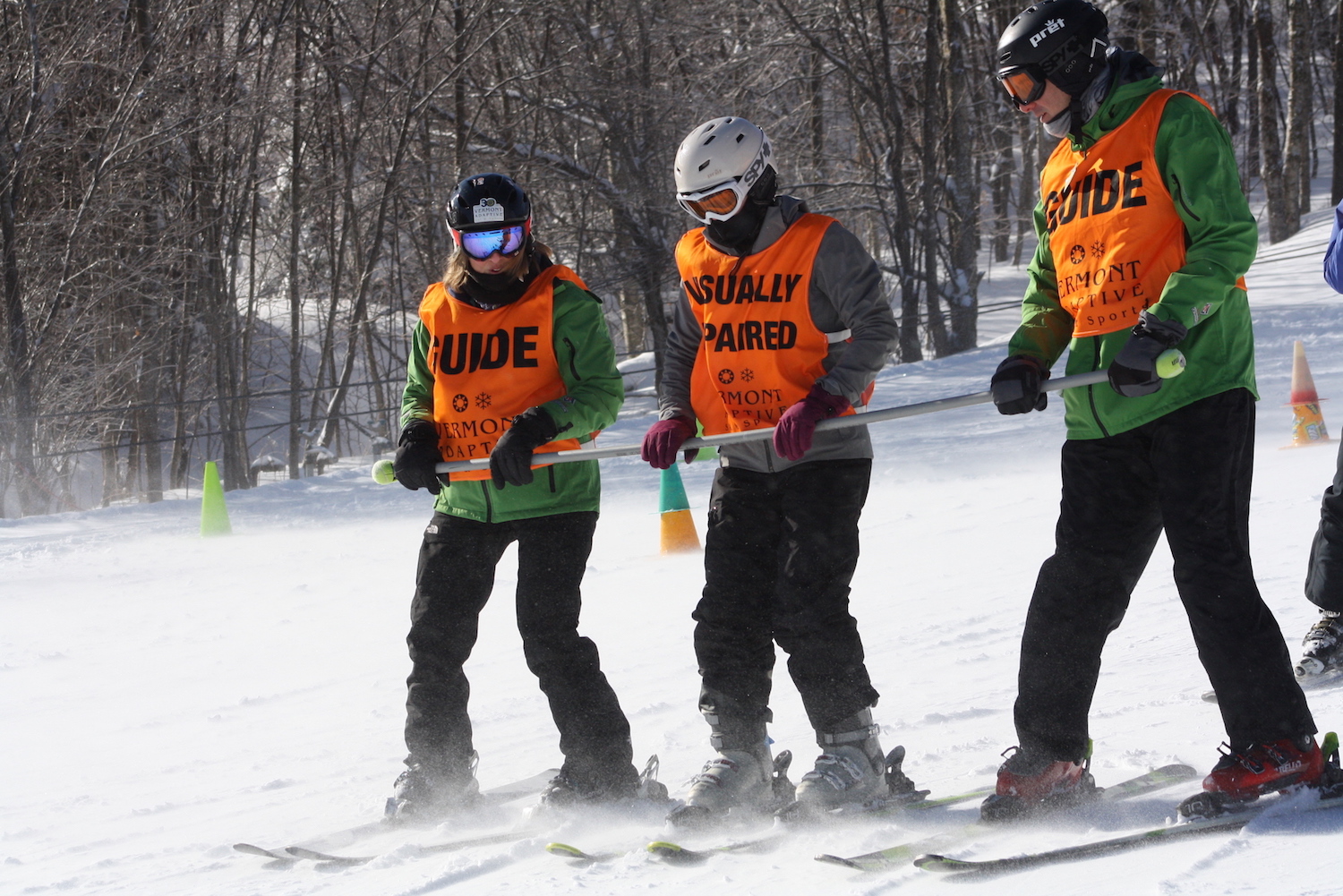
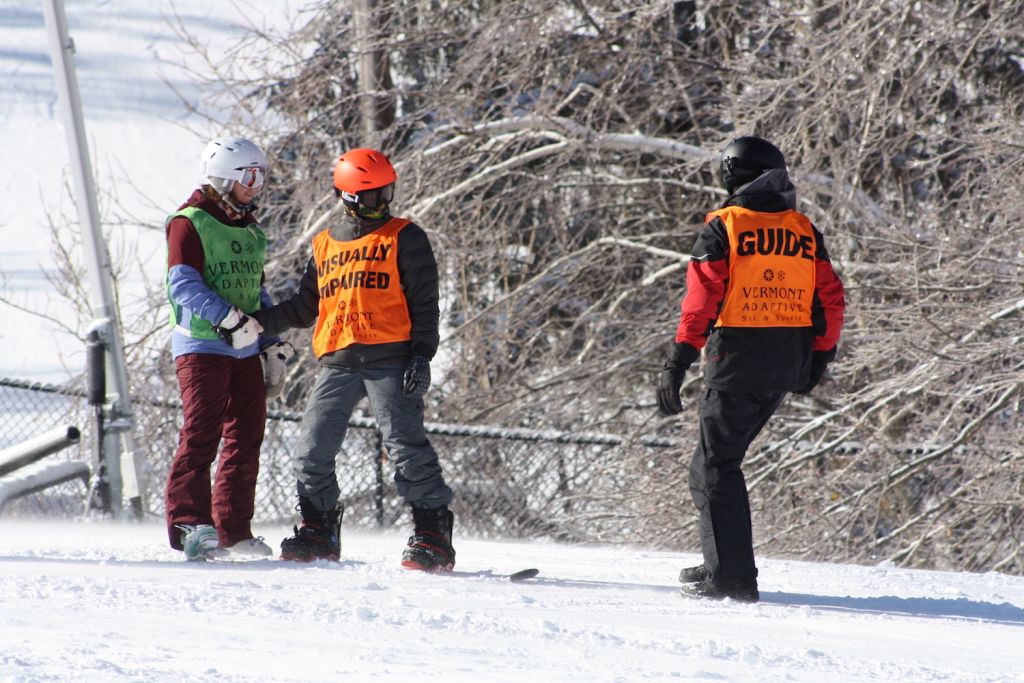
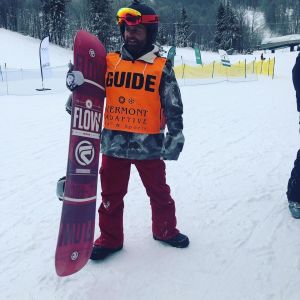
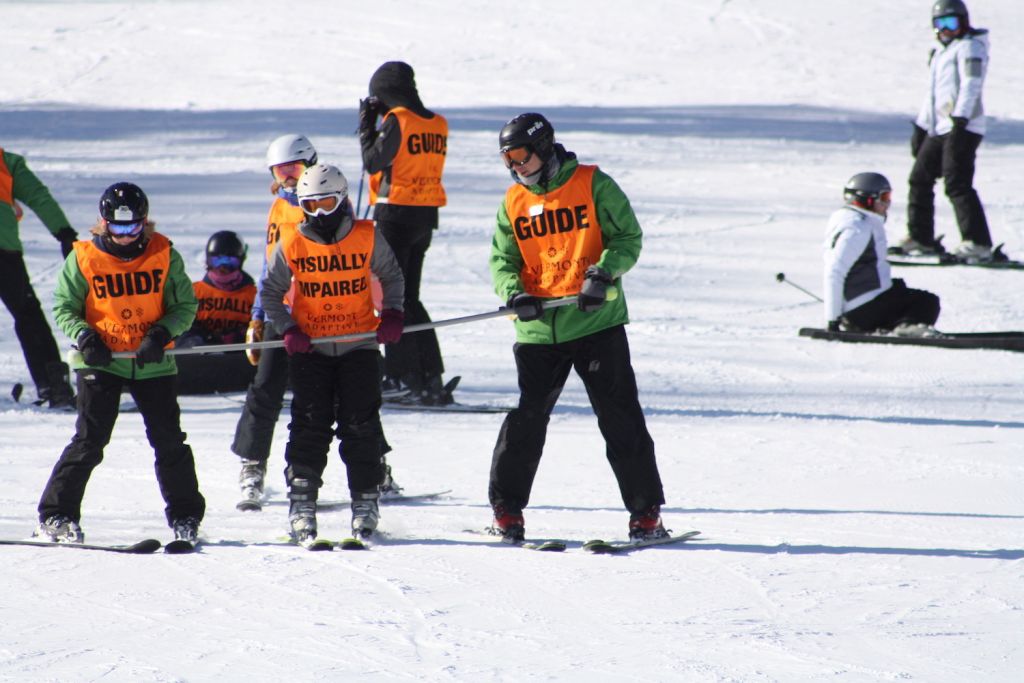
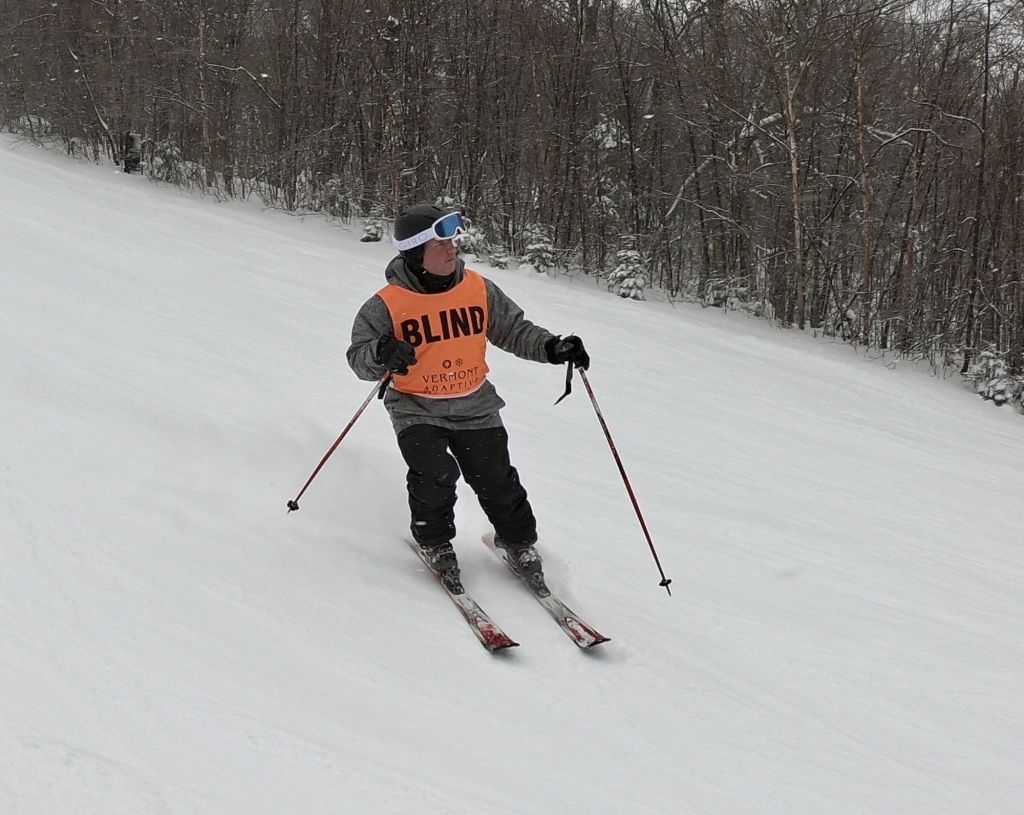
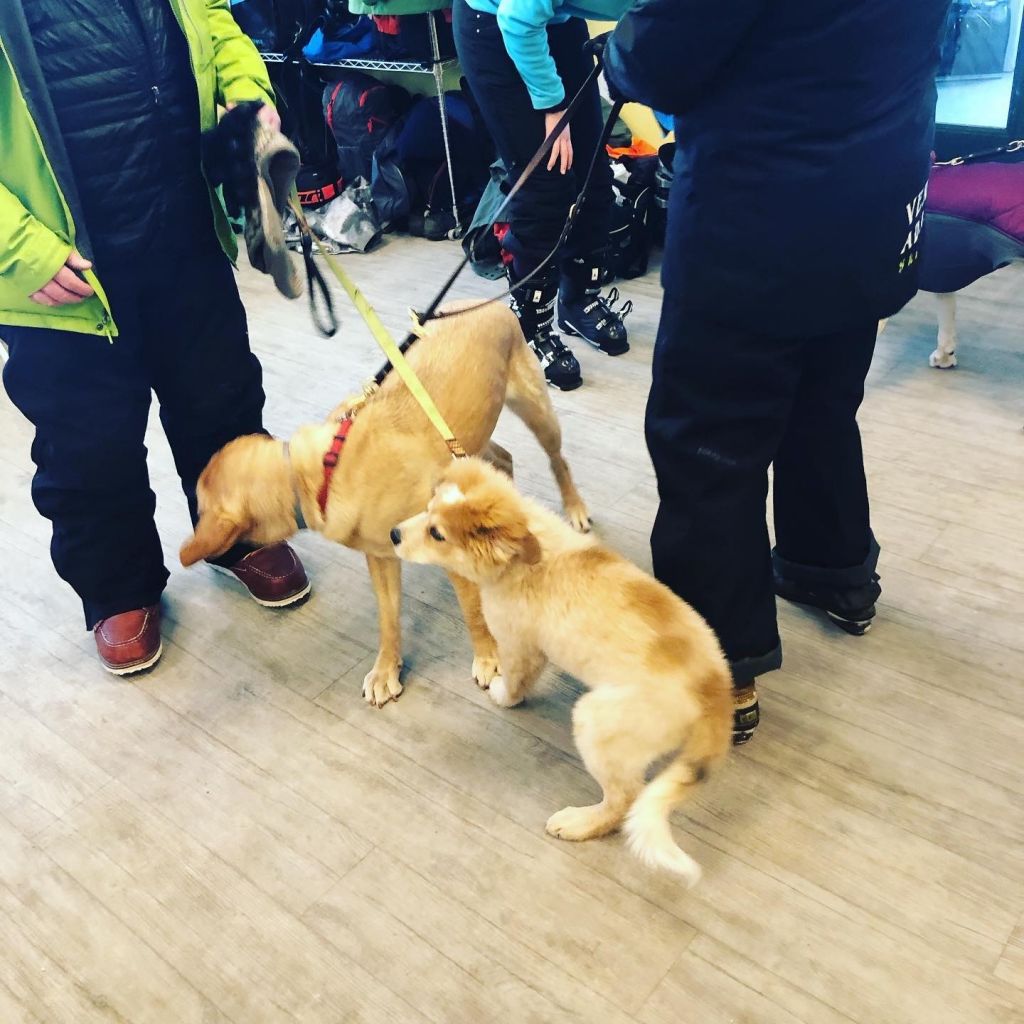
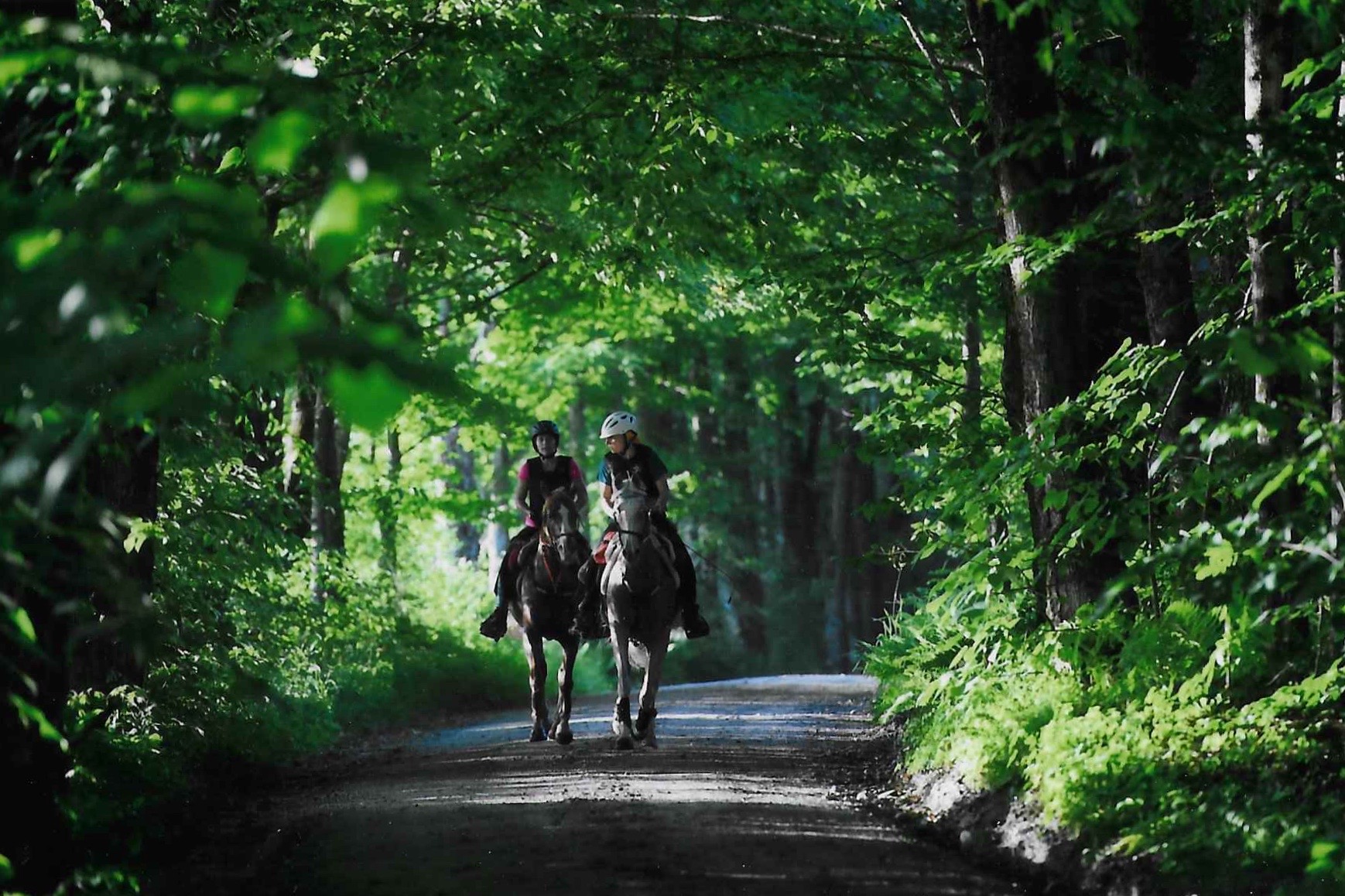
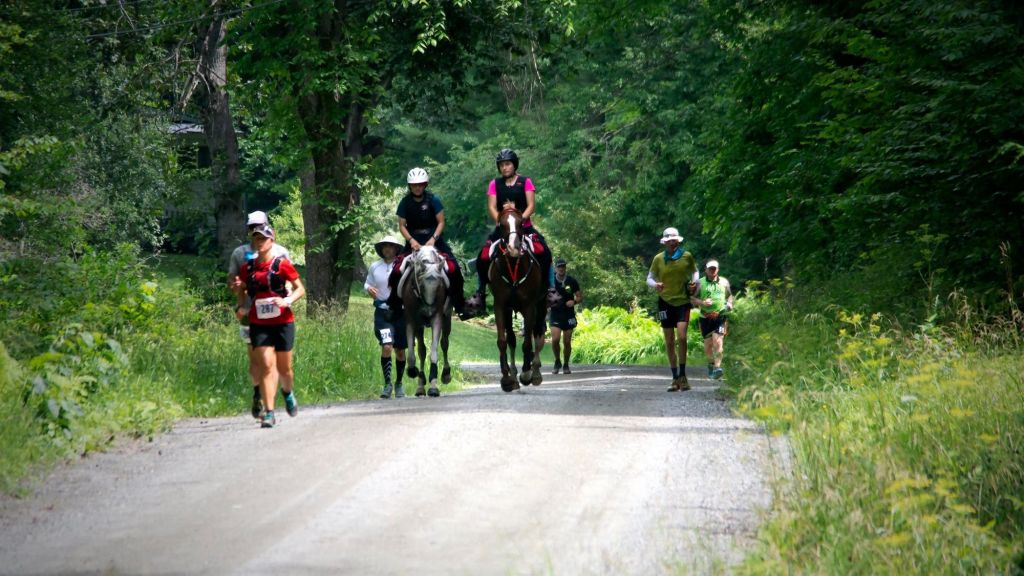
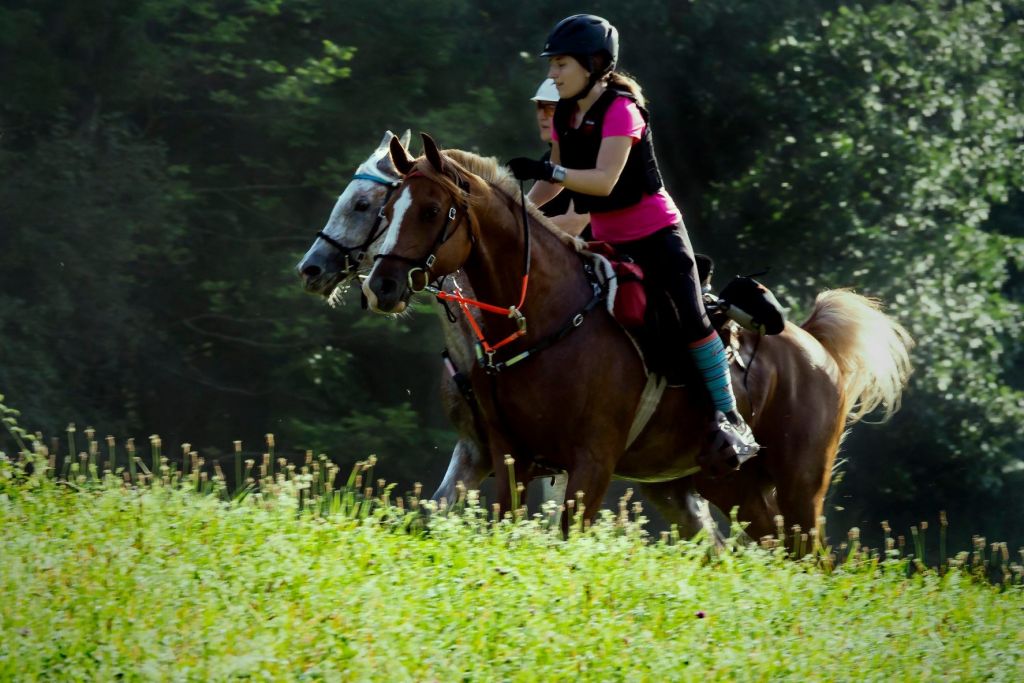
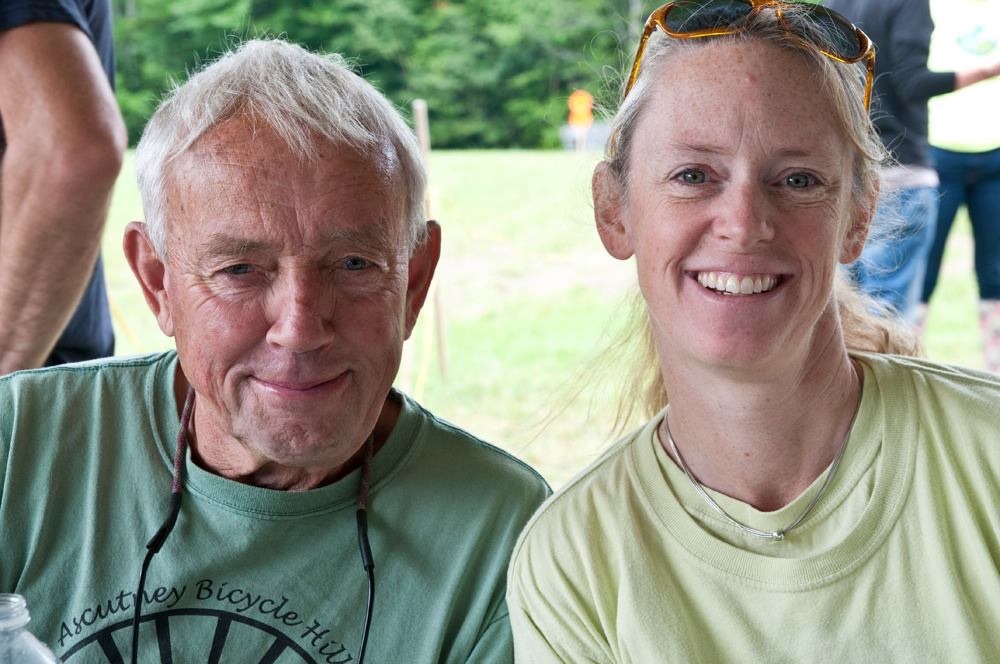
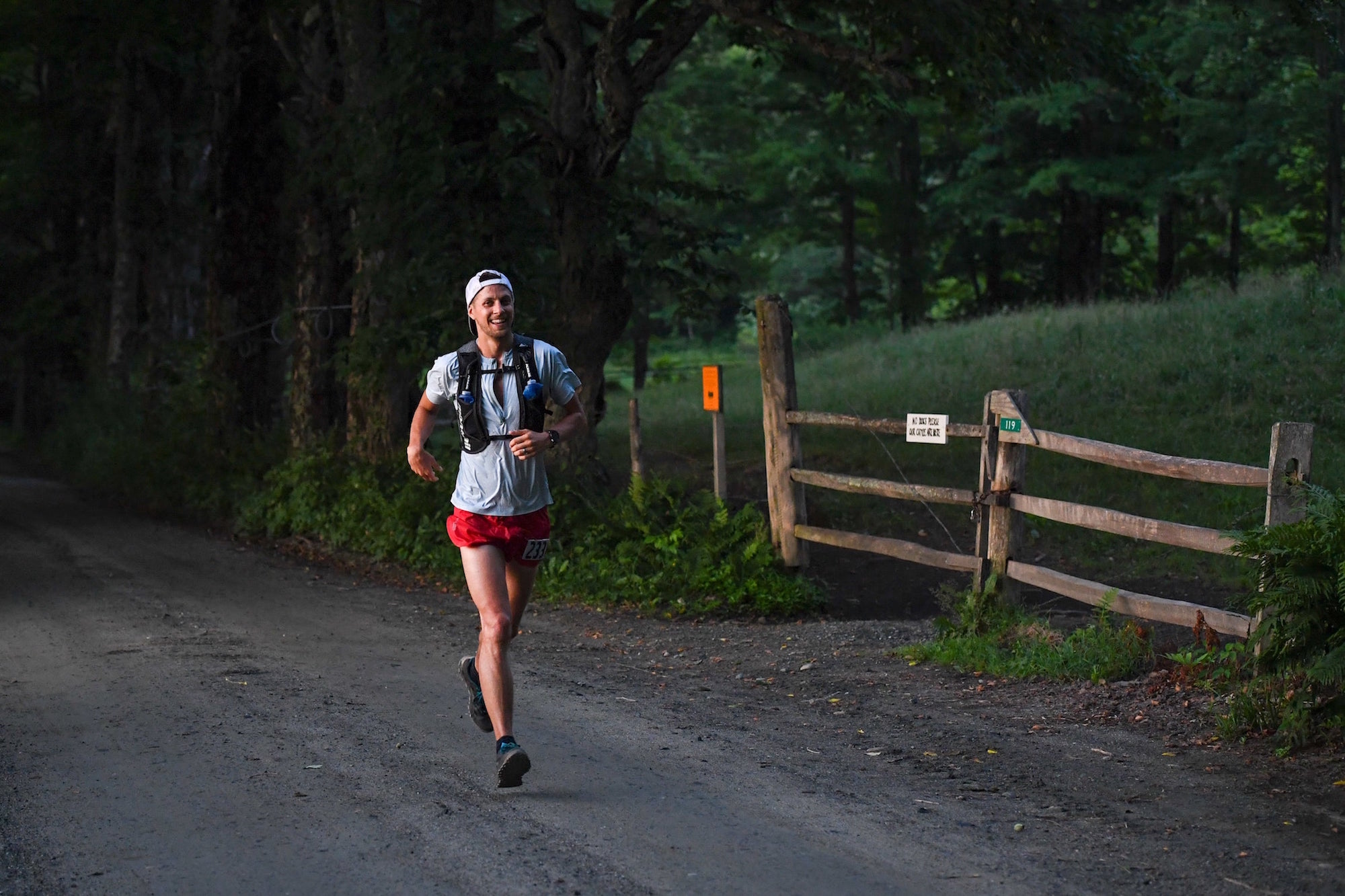
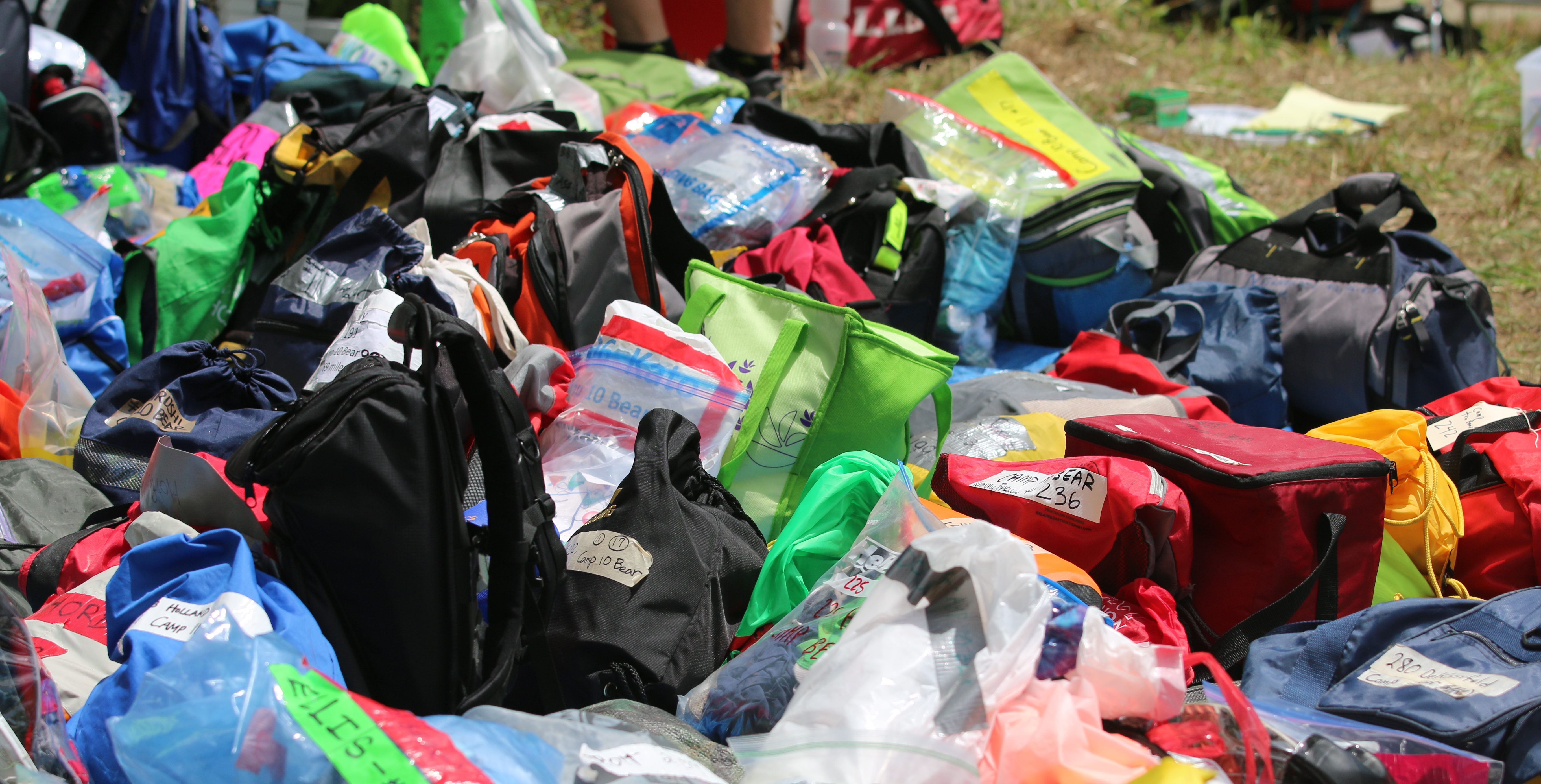
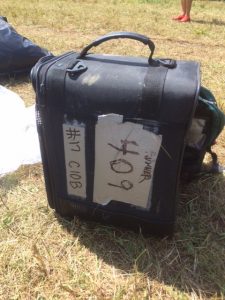 At the end of the day, The Vermont 100 is not responsible for lost, stolen or damaged bags or belongings.
At the end of the day, The Vermont 100 is not responsible for lost, stolen or damaged bags or belongings.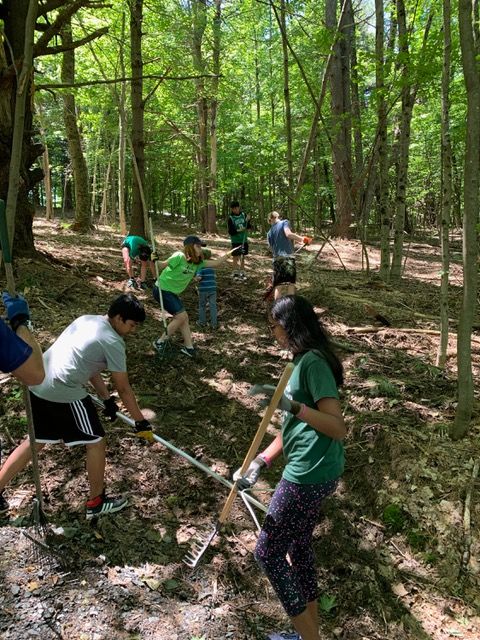
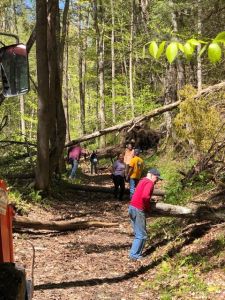
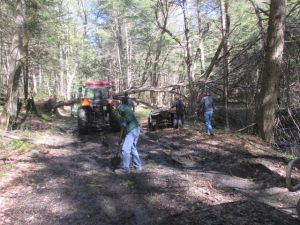
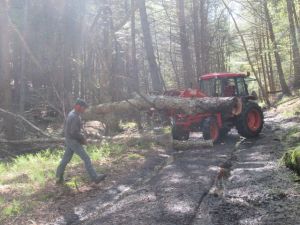
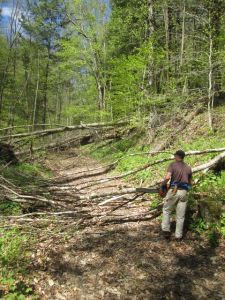
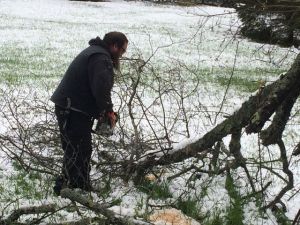
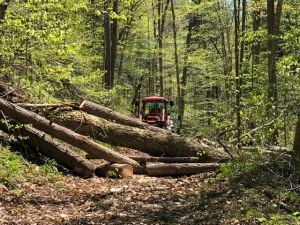
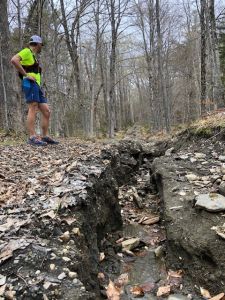
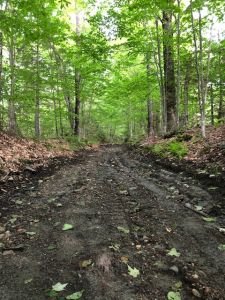
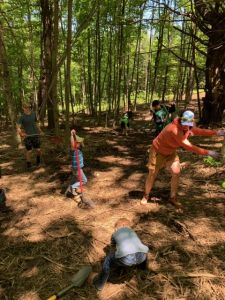

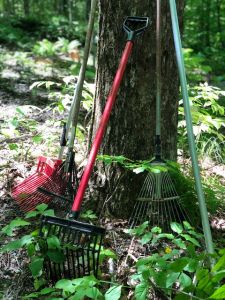
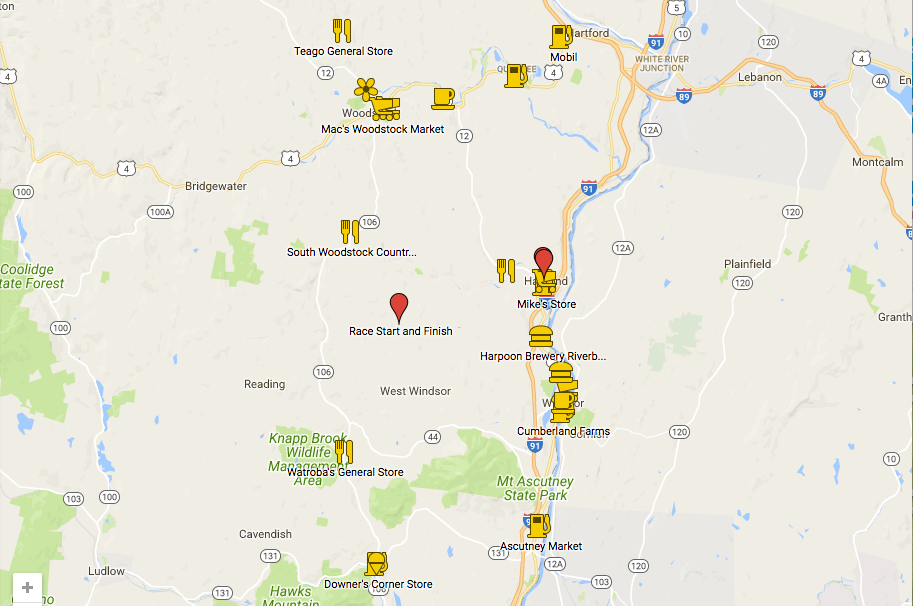

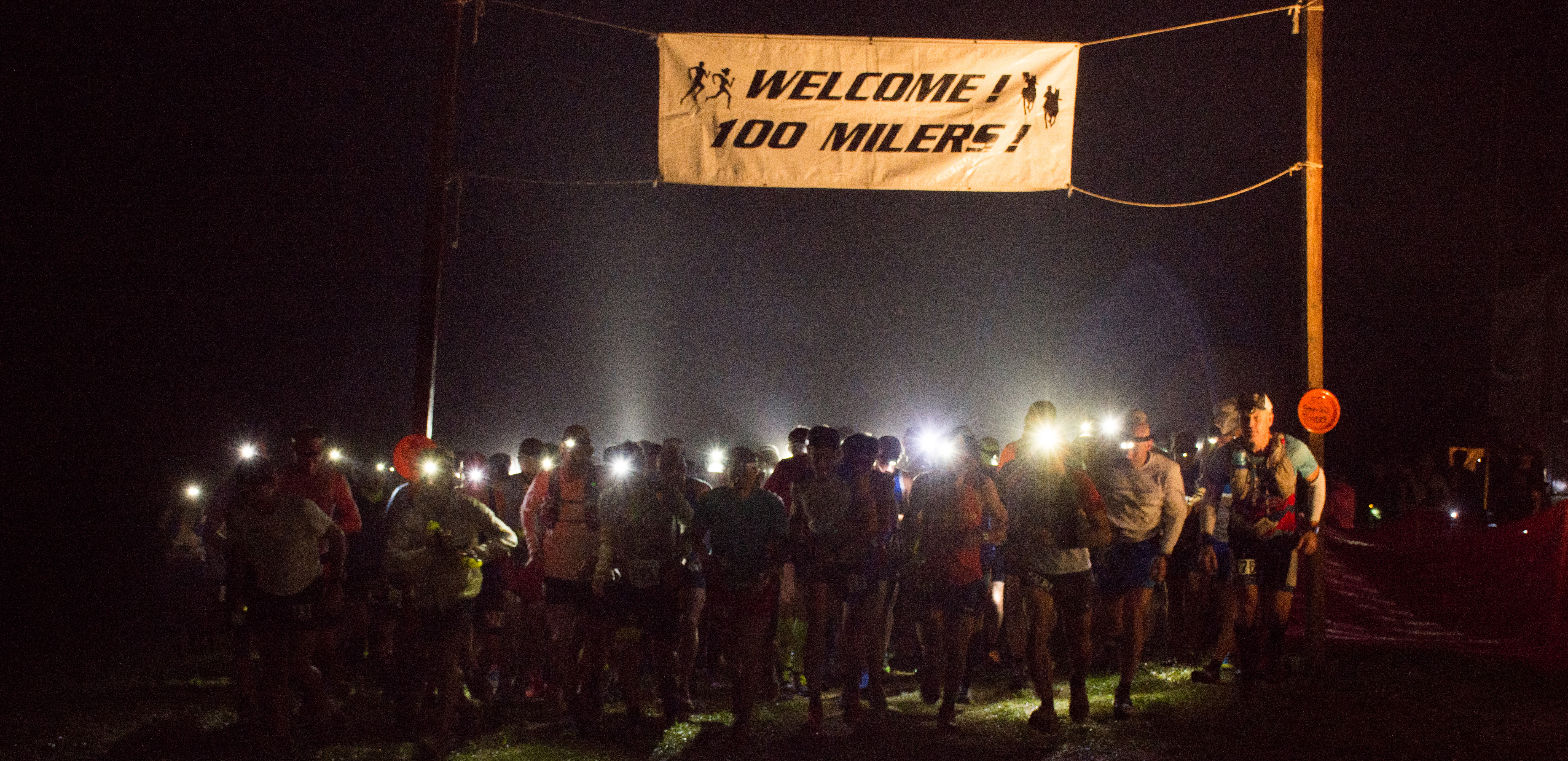

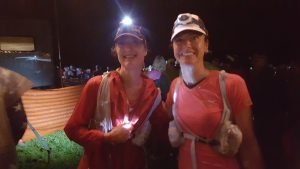
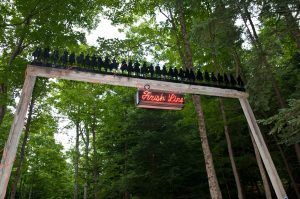
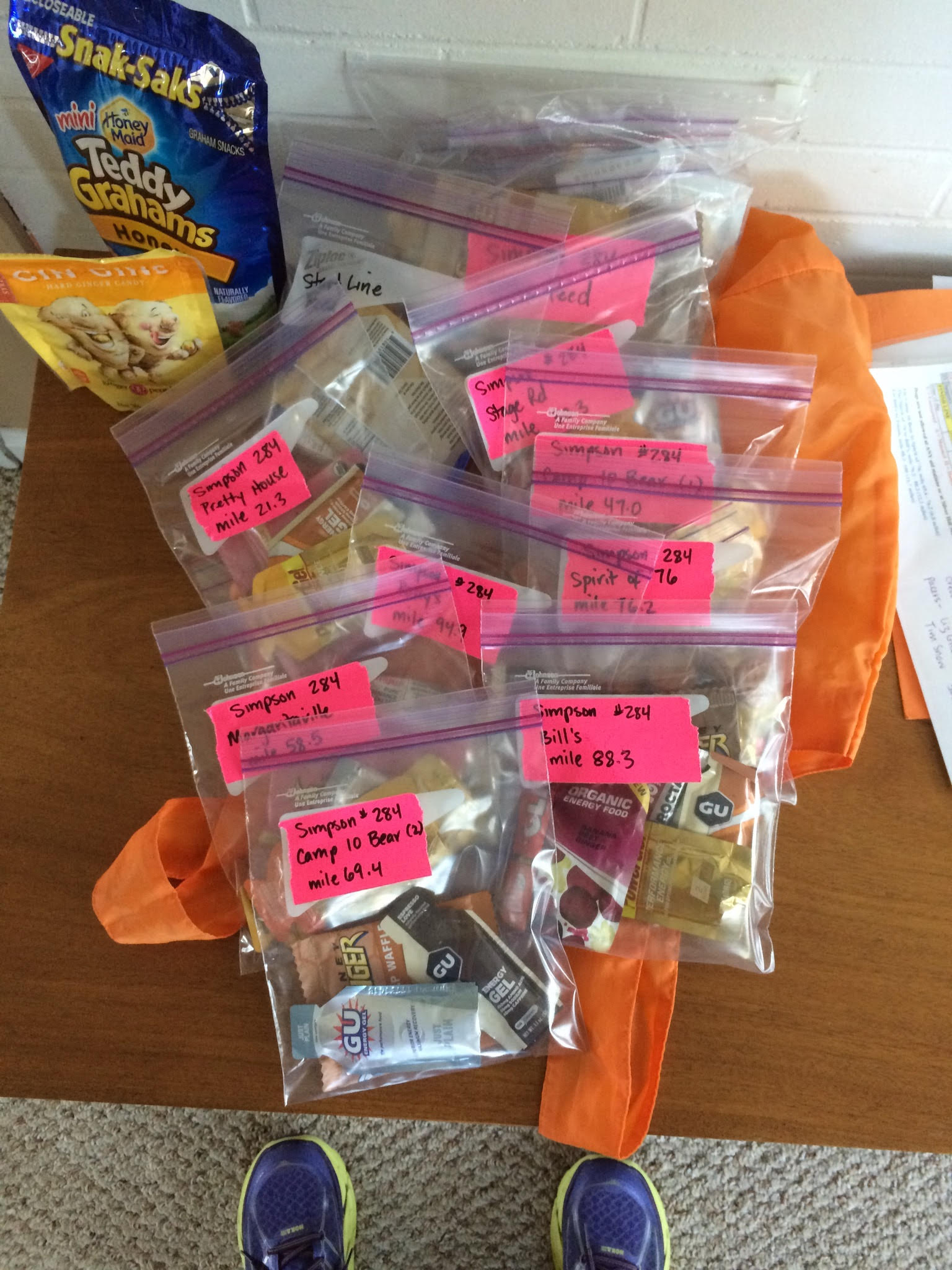
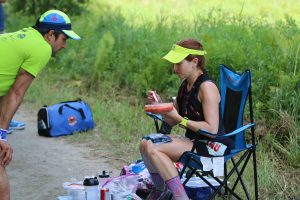
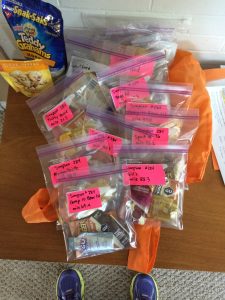

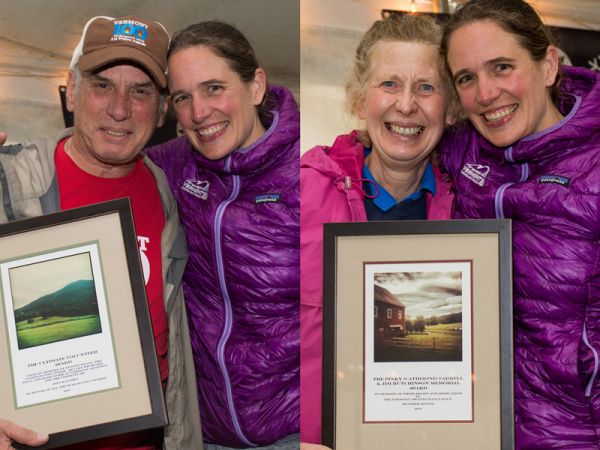
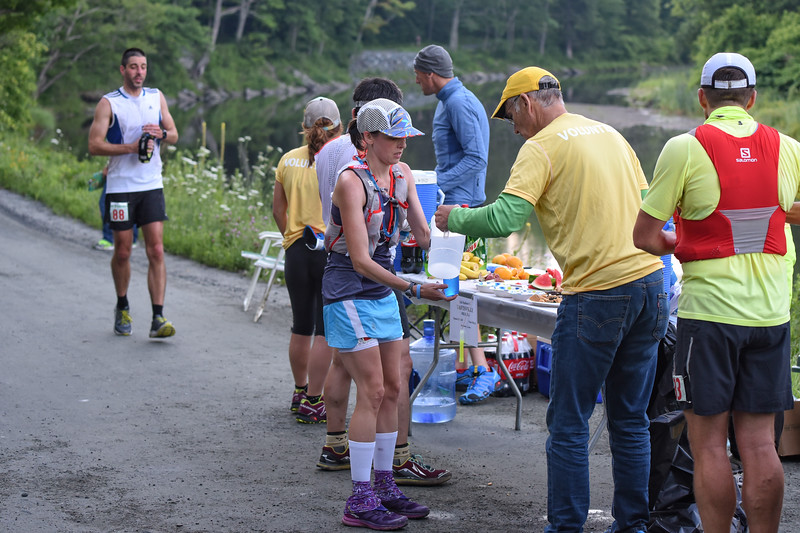
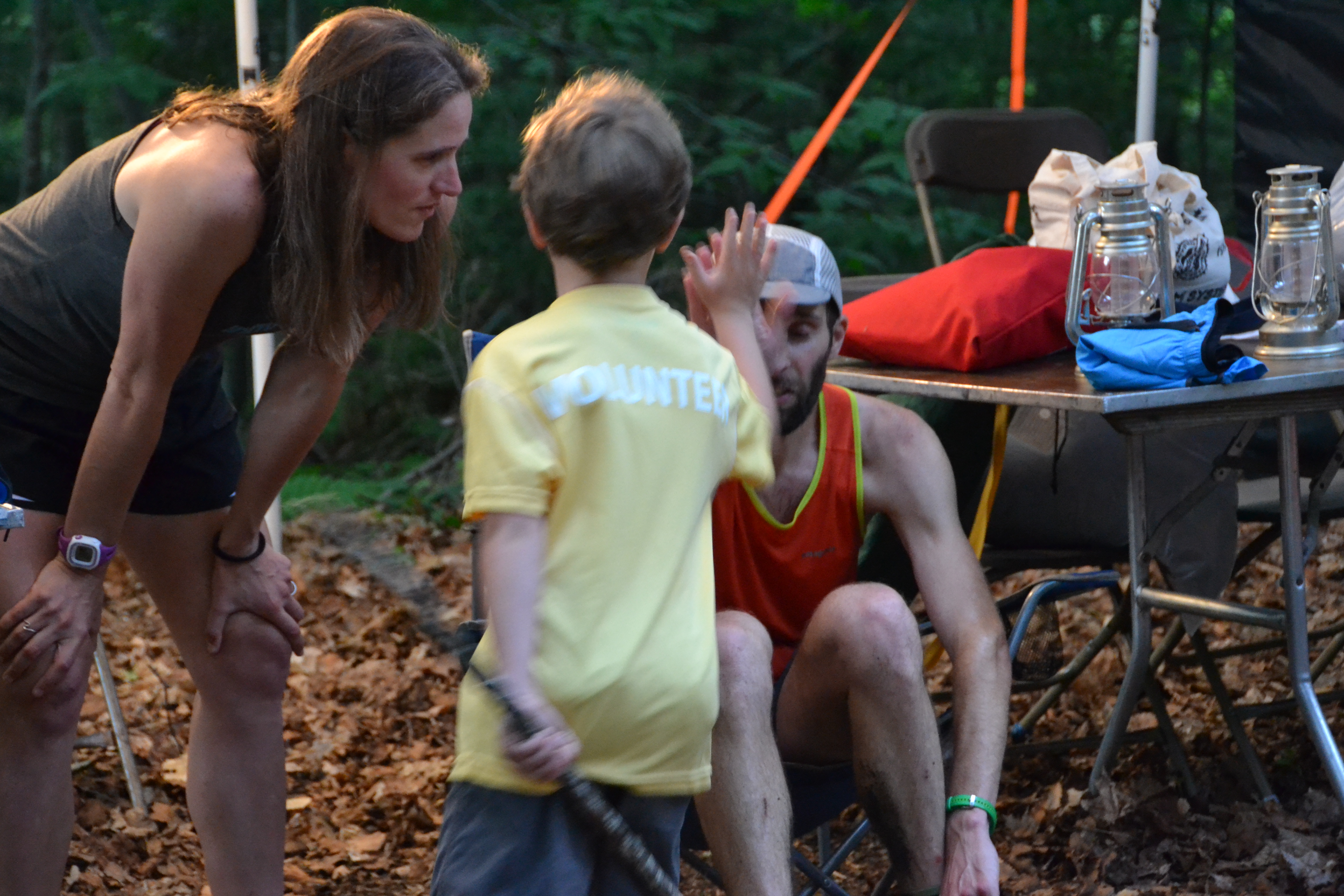

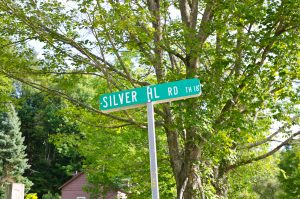
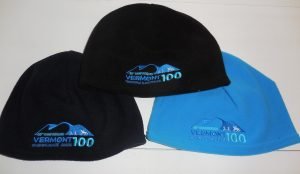
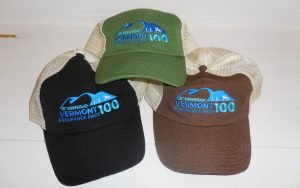
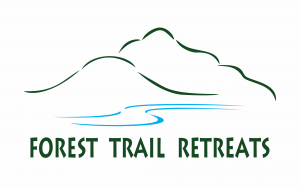
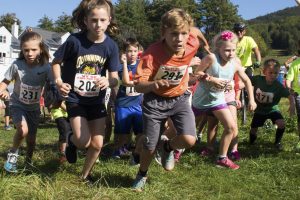
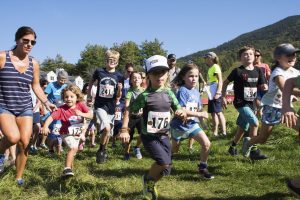



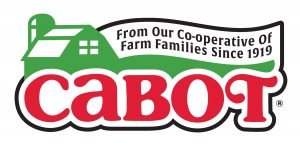




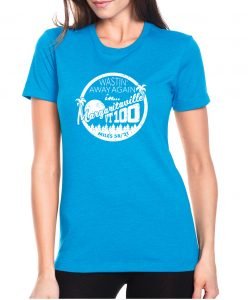

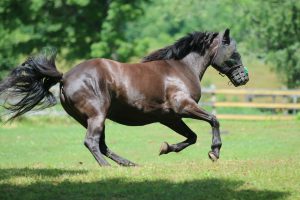
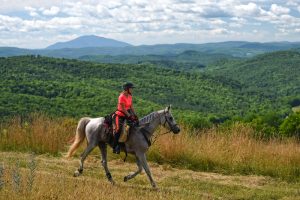
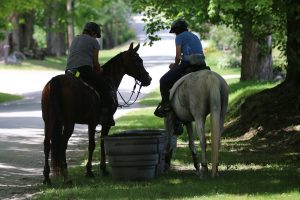
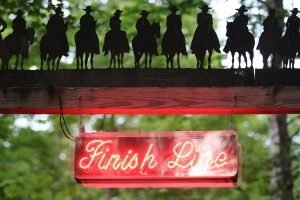

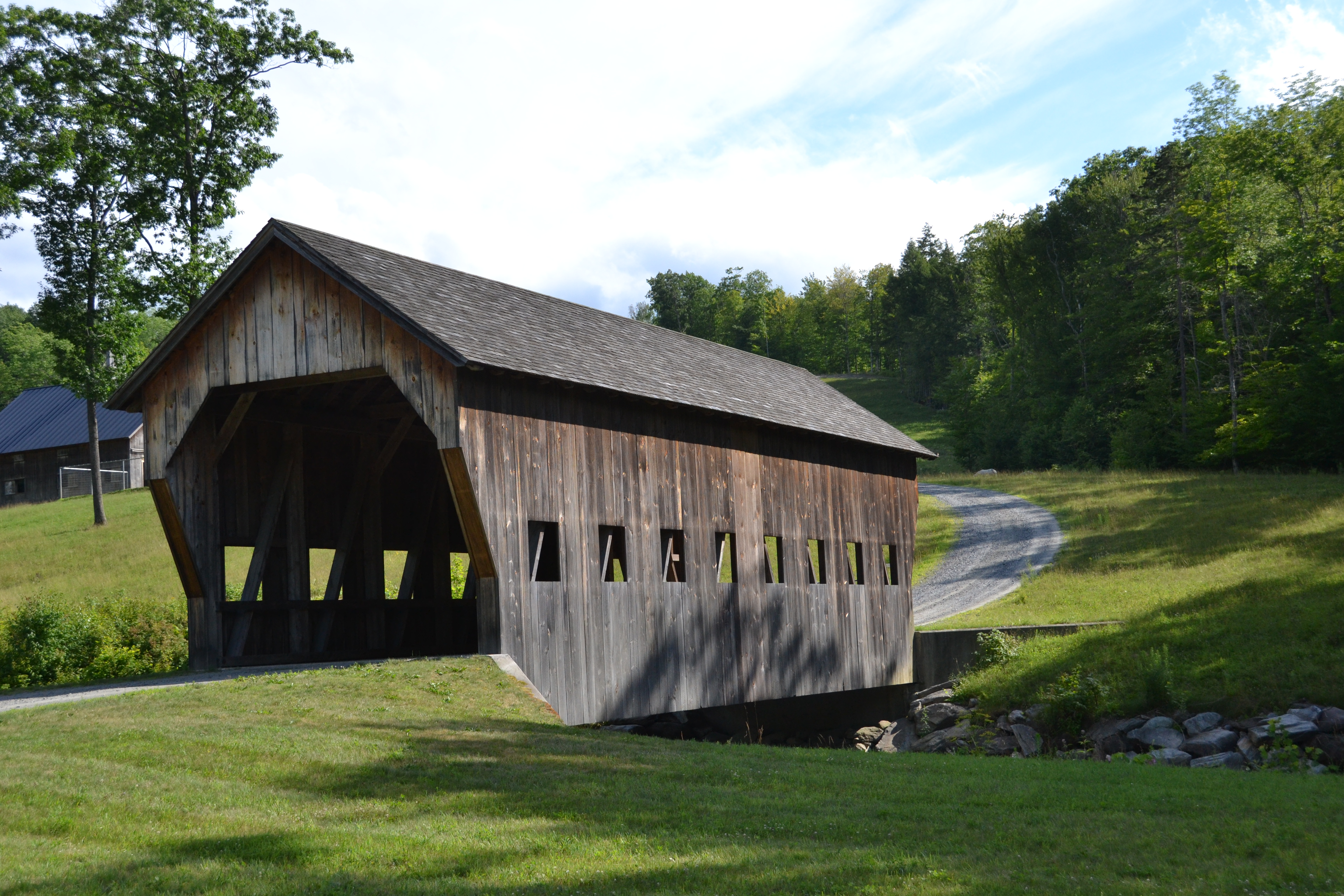
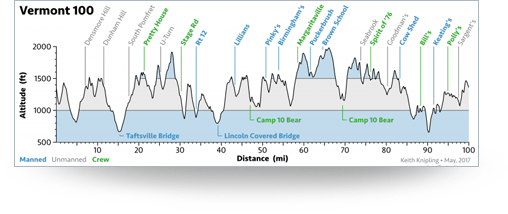
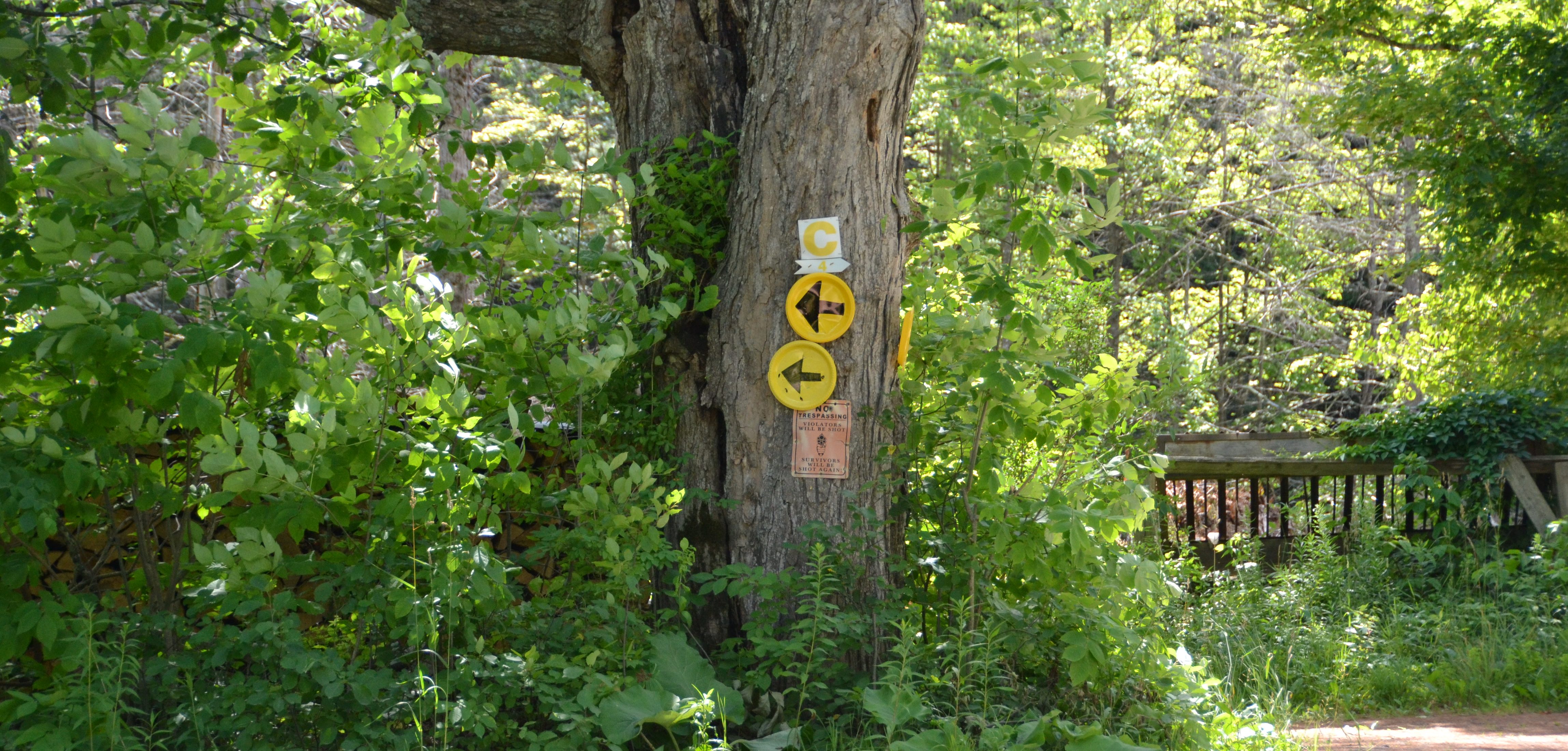
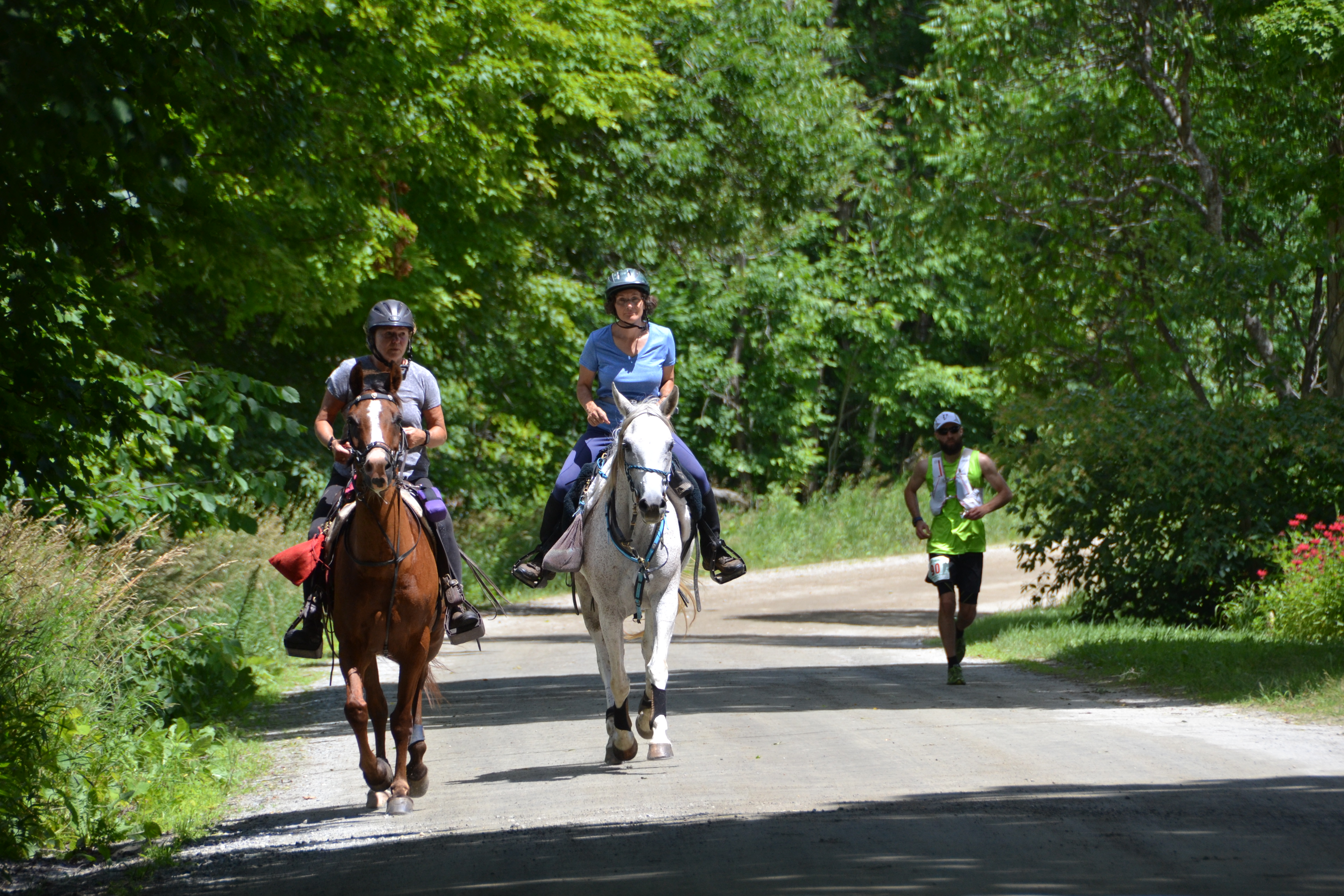
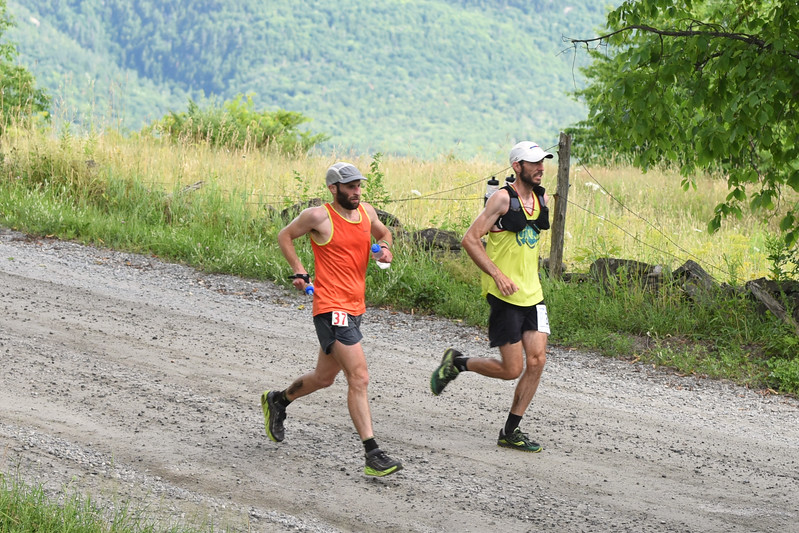
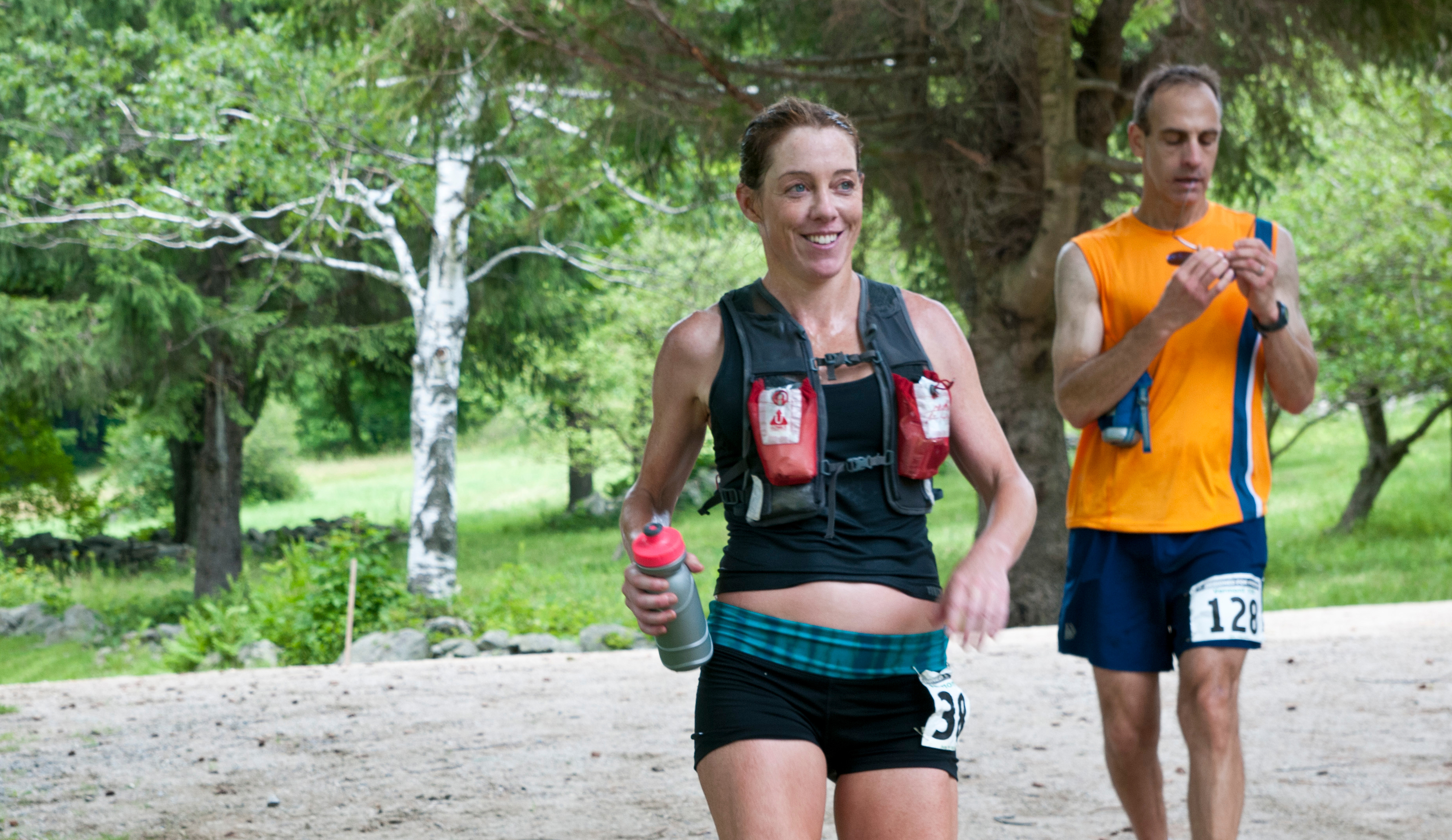
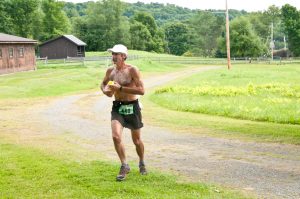
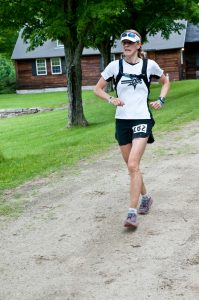
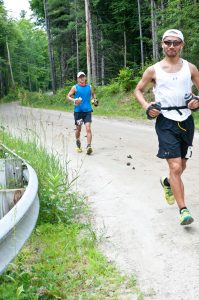
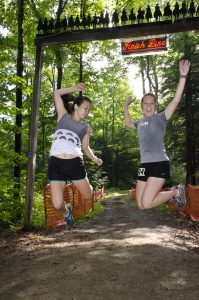
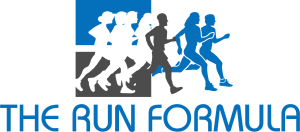
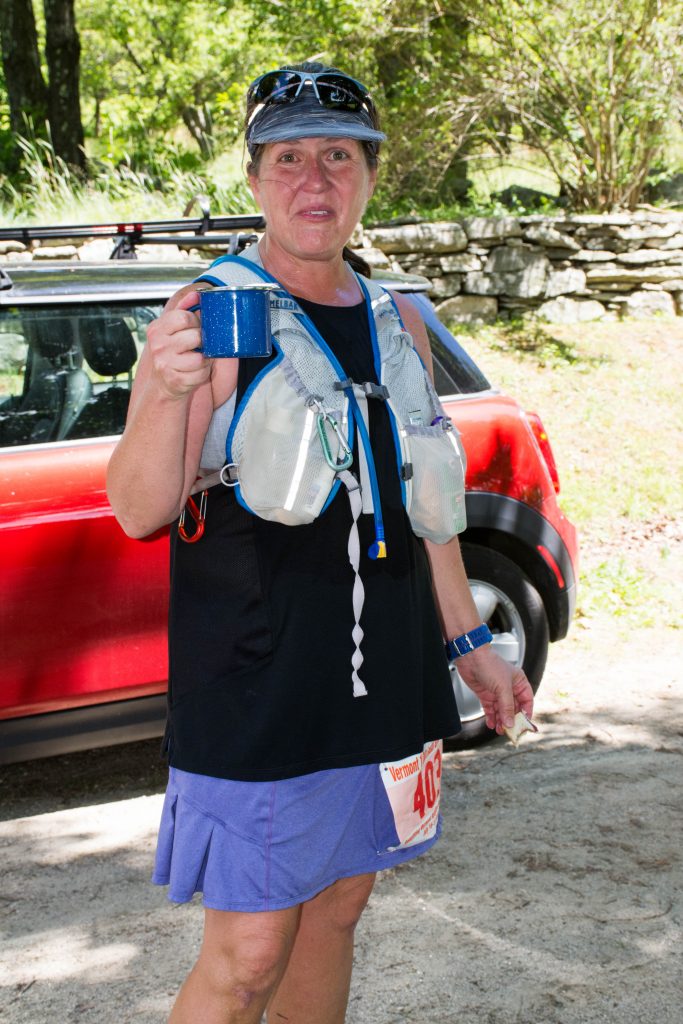
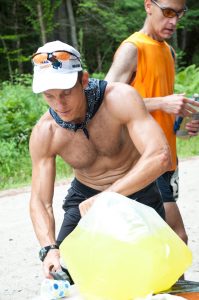 (file photo-our race is now cup-less)
(file photo-our race is now cup-less)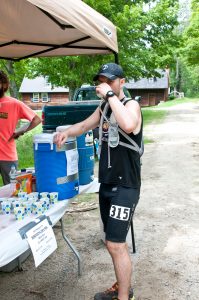 (file photo-our race is now cup-less)
(file photo-our race is now cup-less)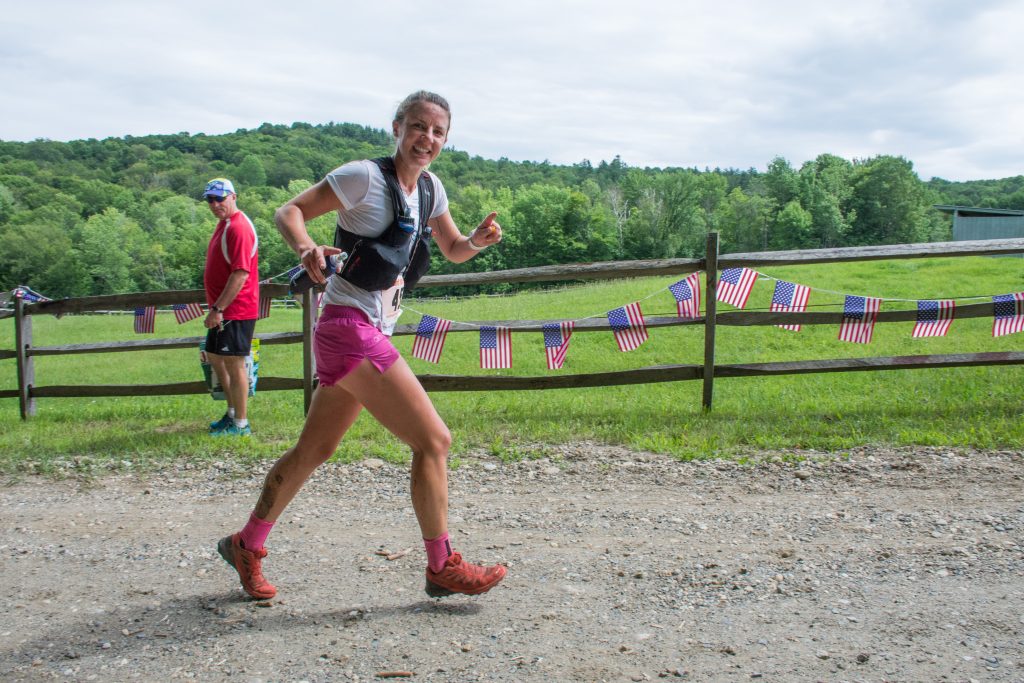
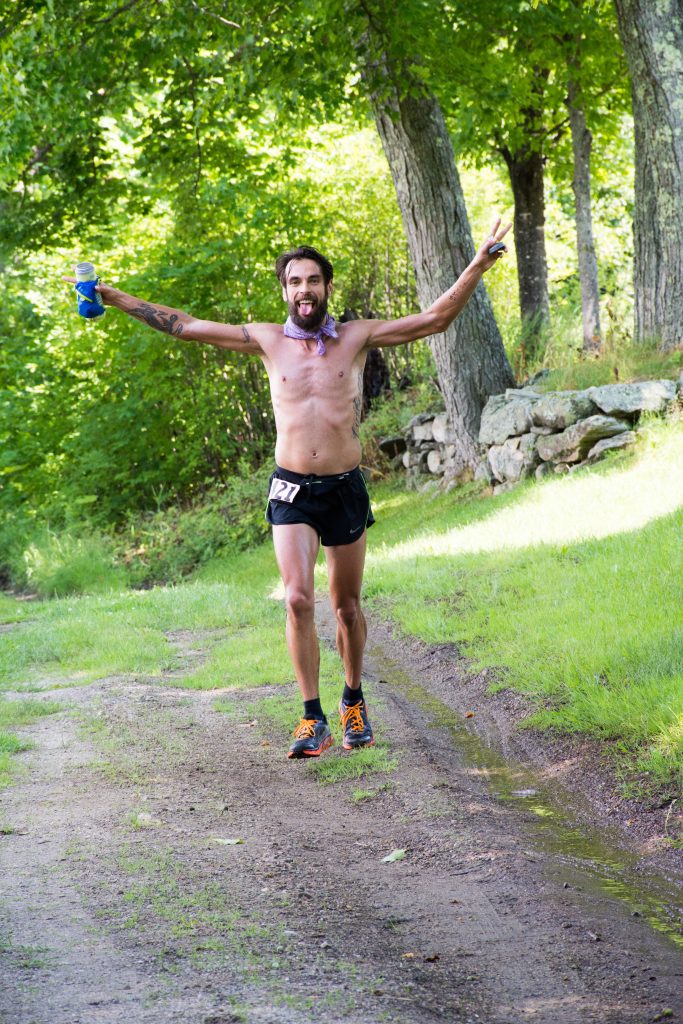

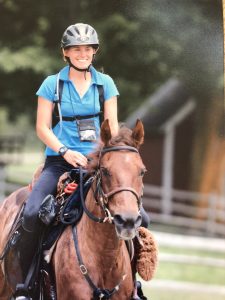
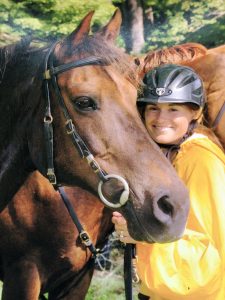
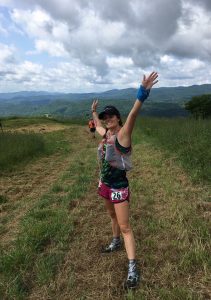

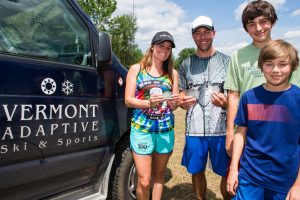
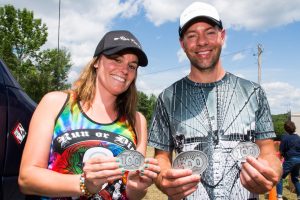

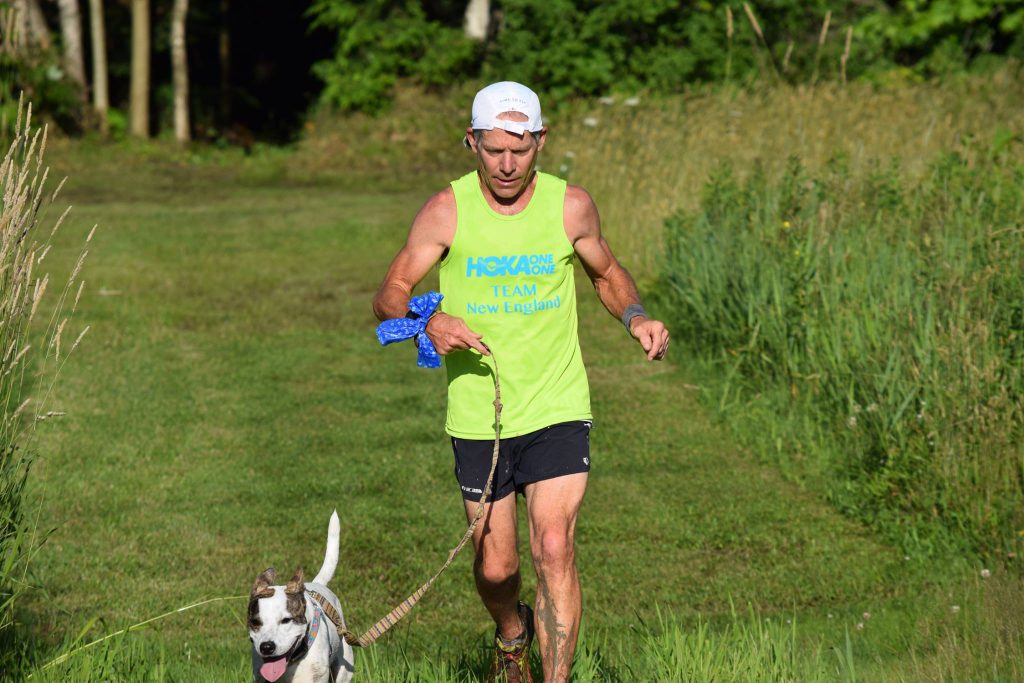

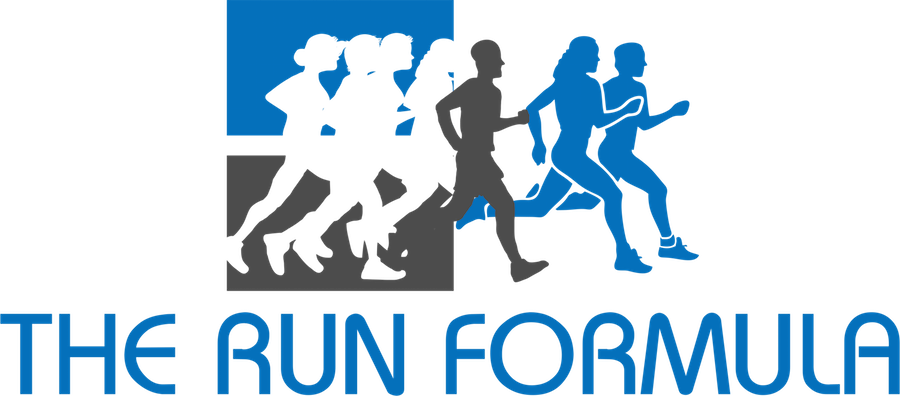
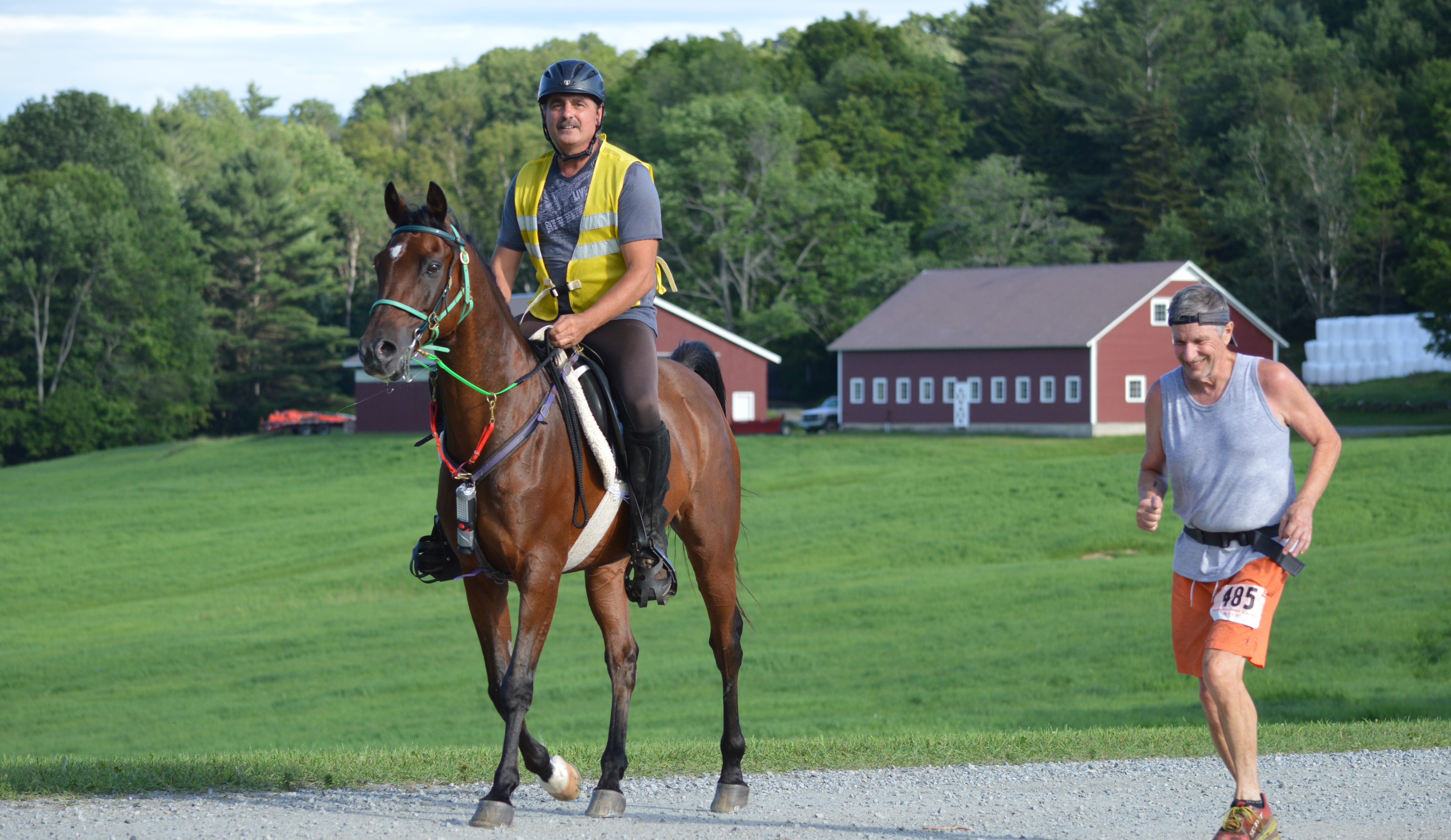

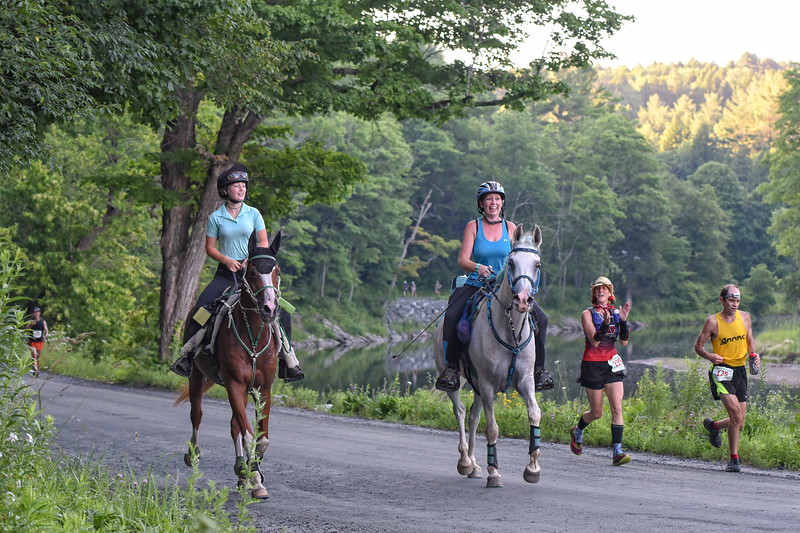
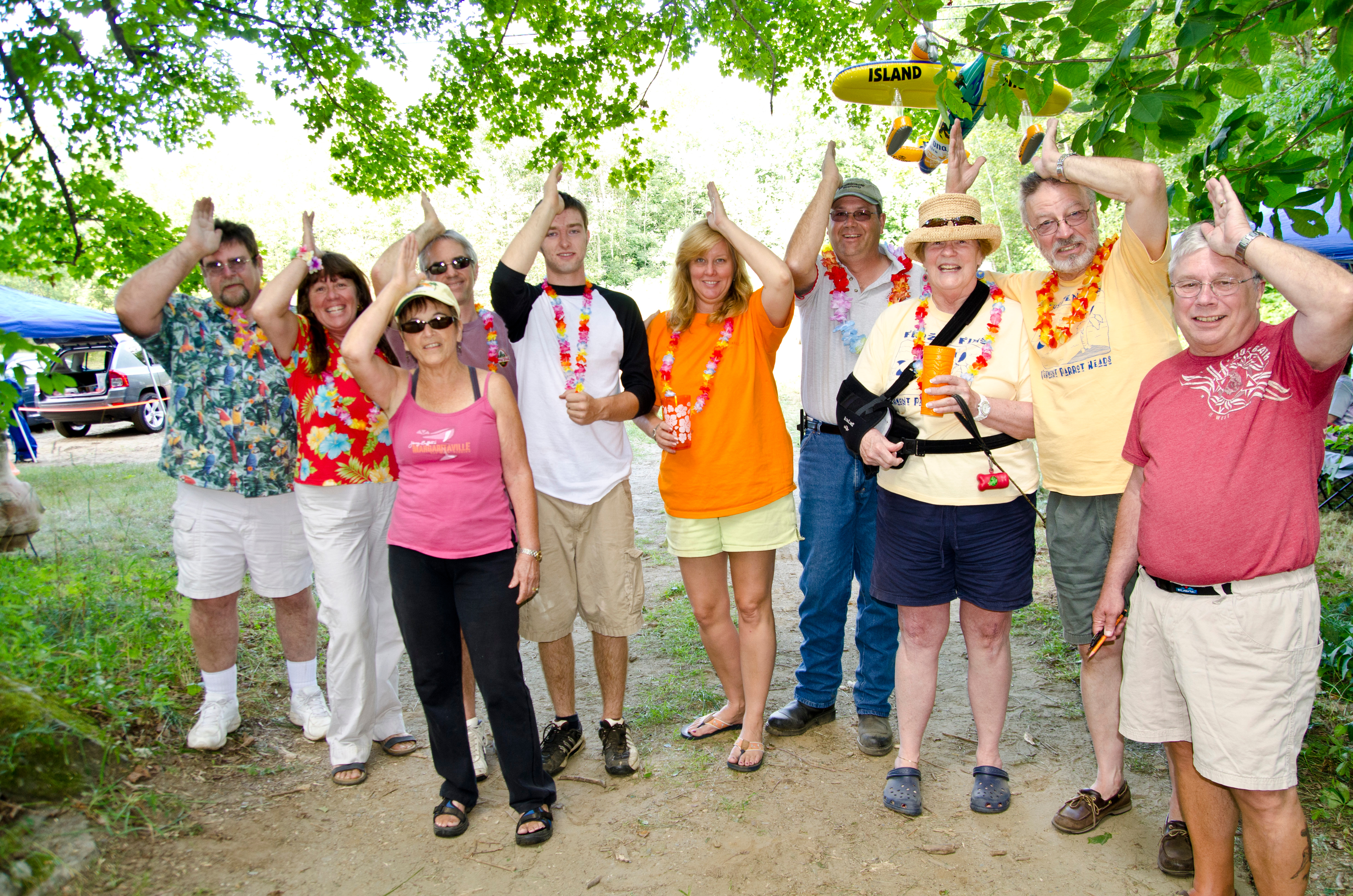
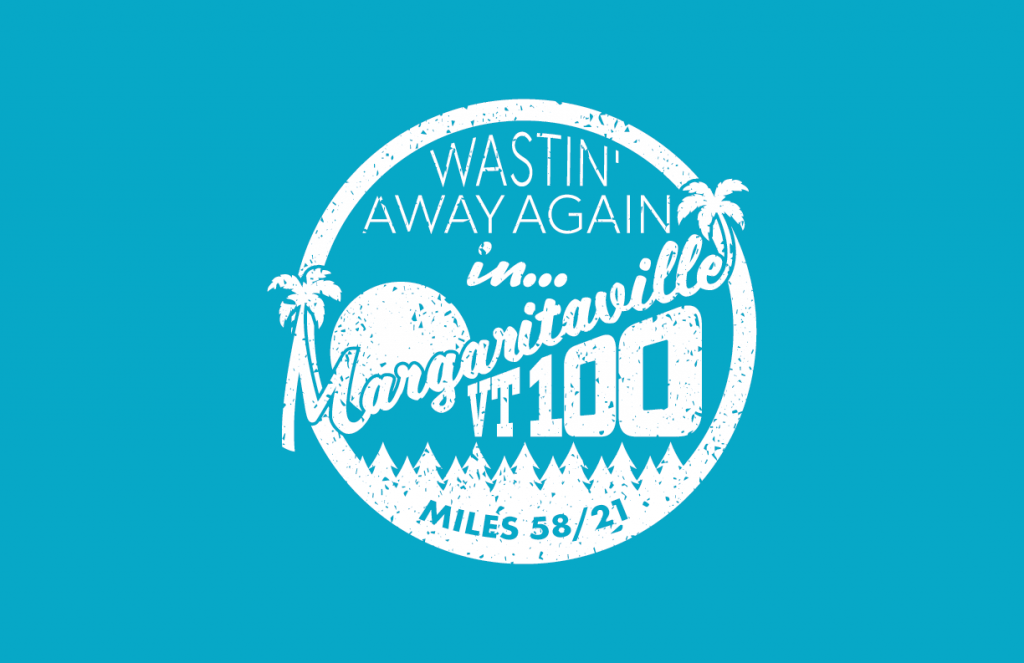
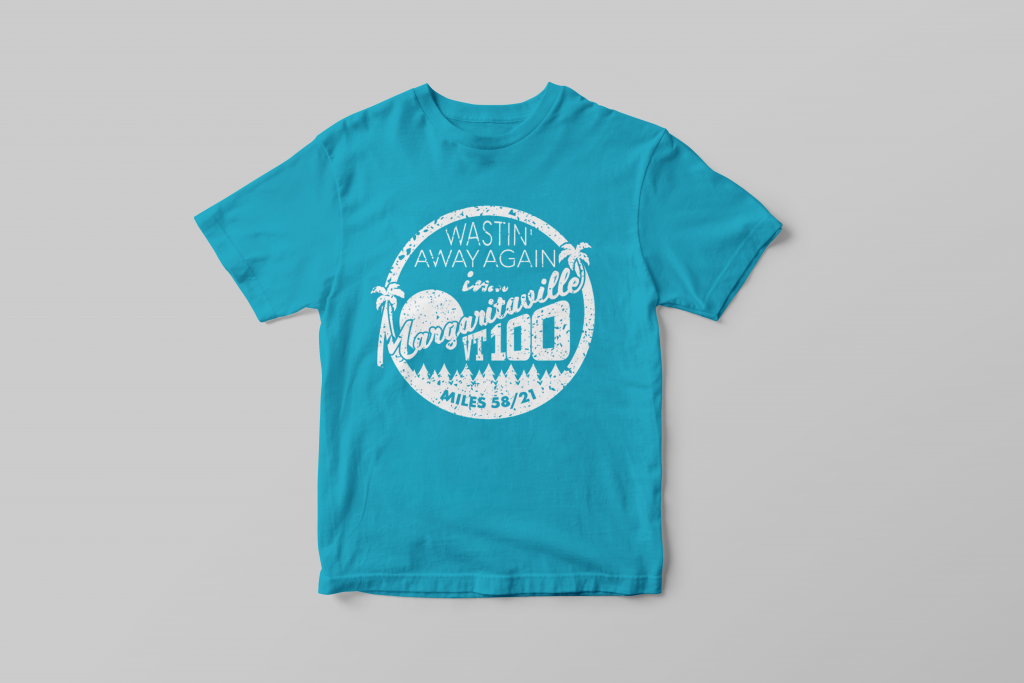
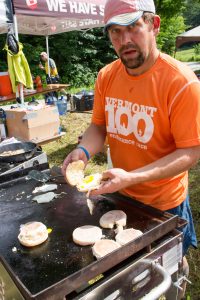
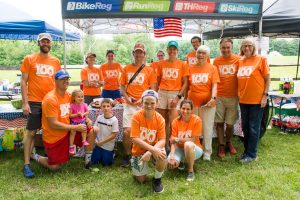
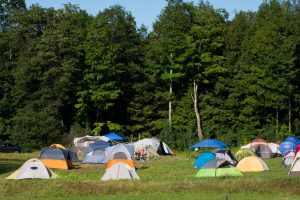
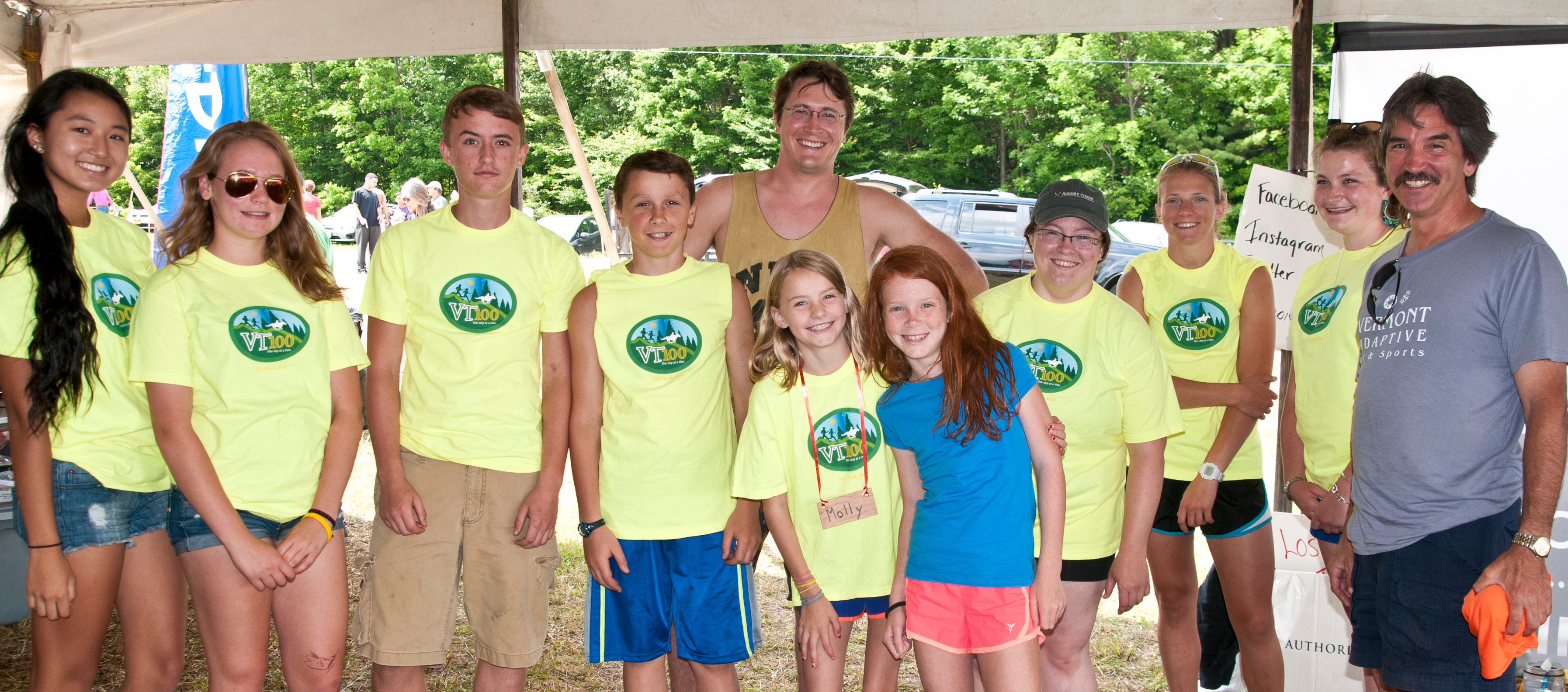

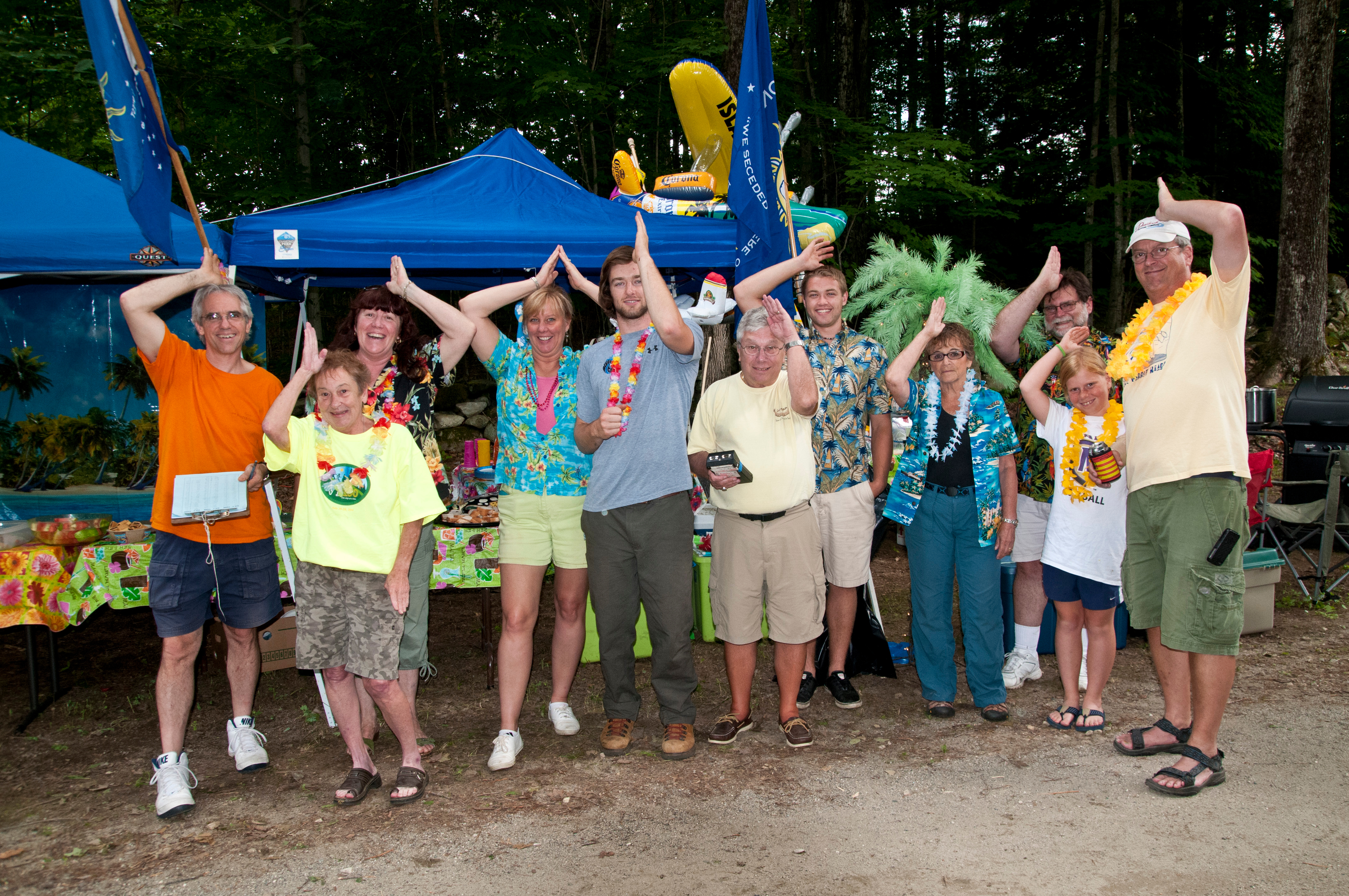
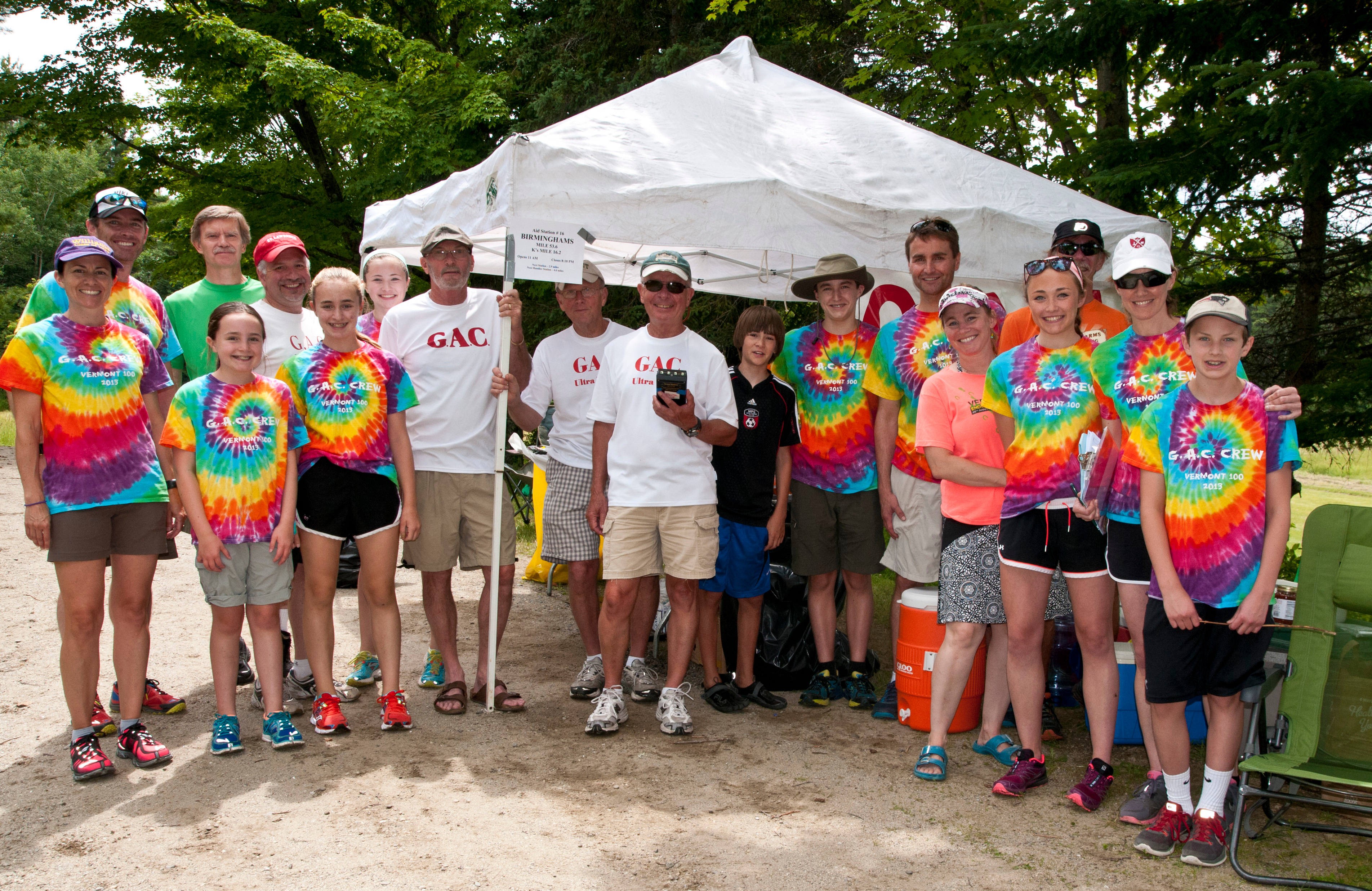
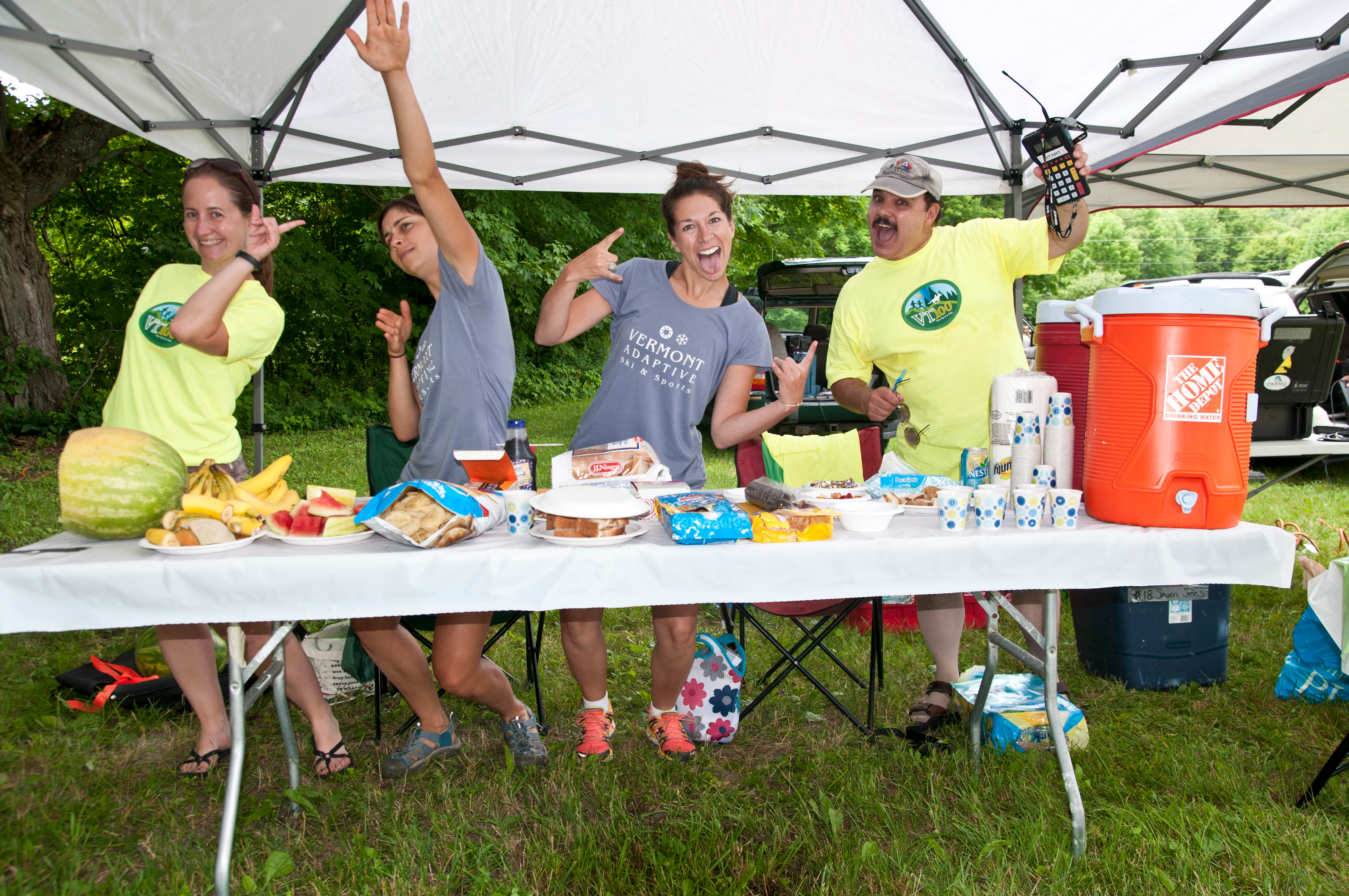
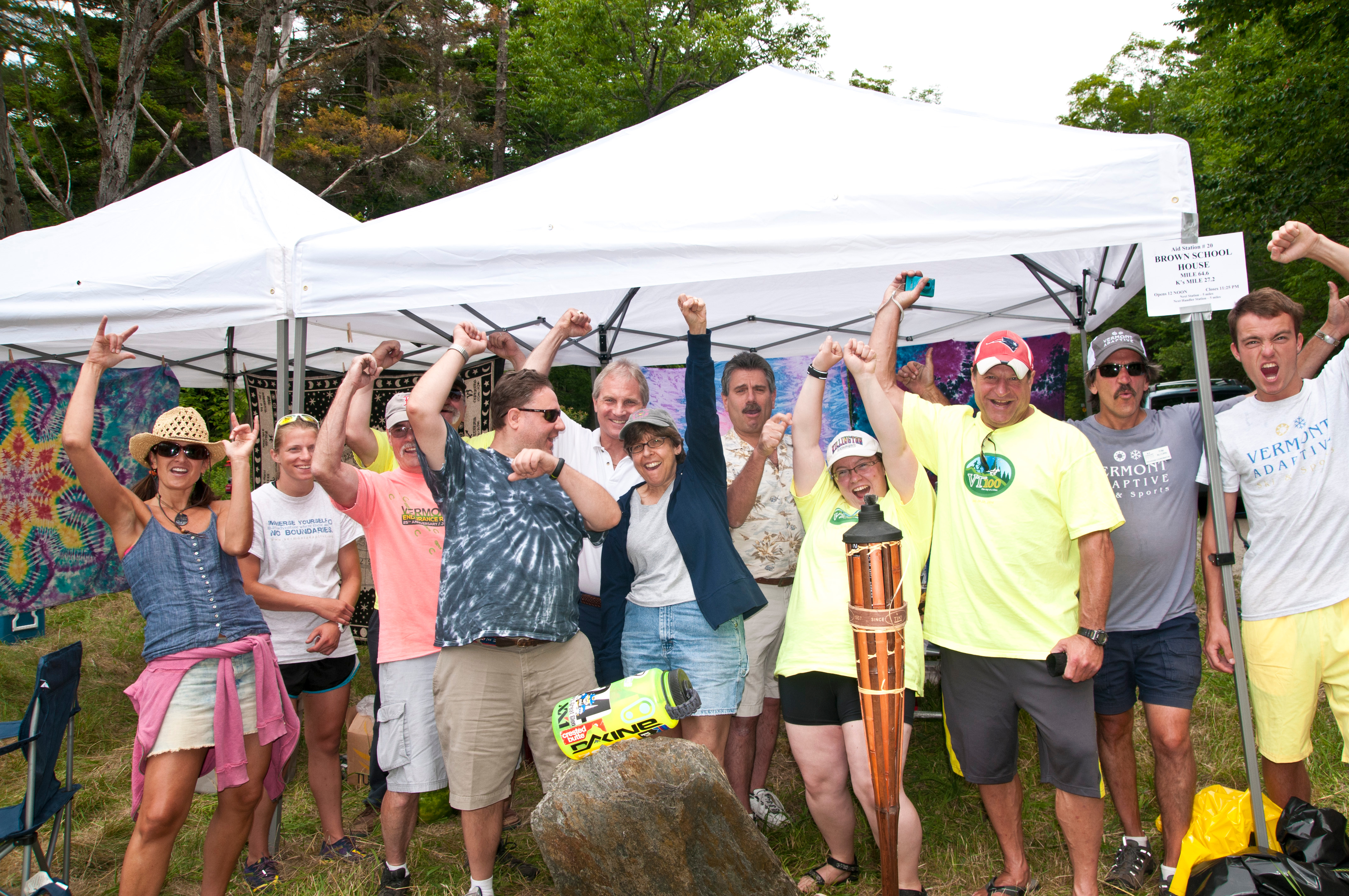

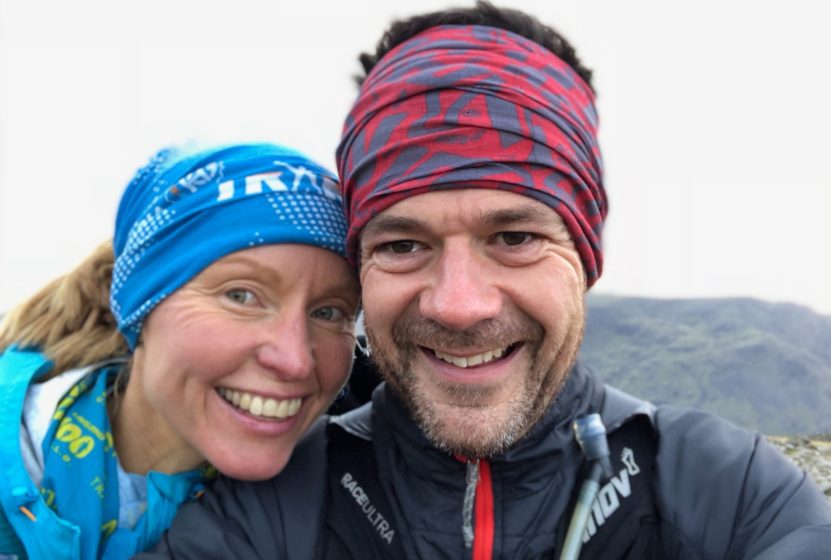


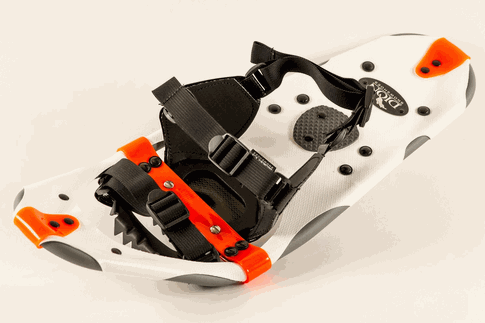
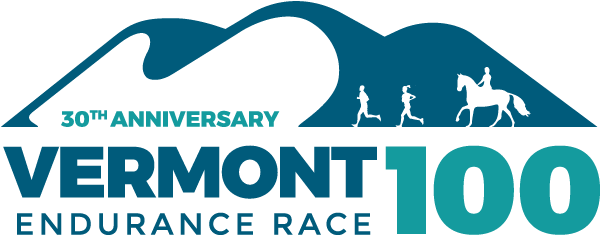
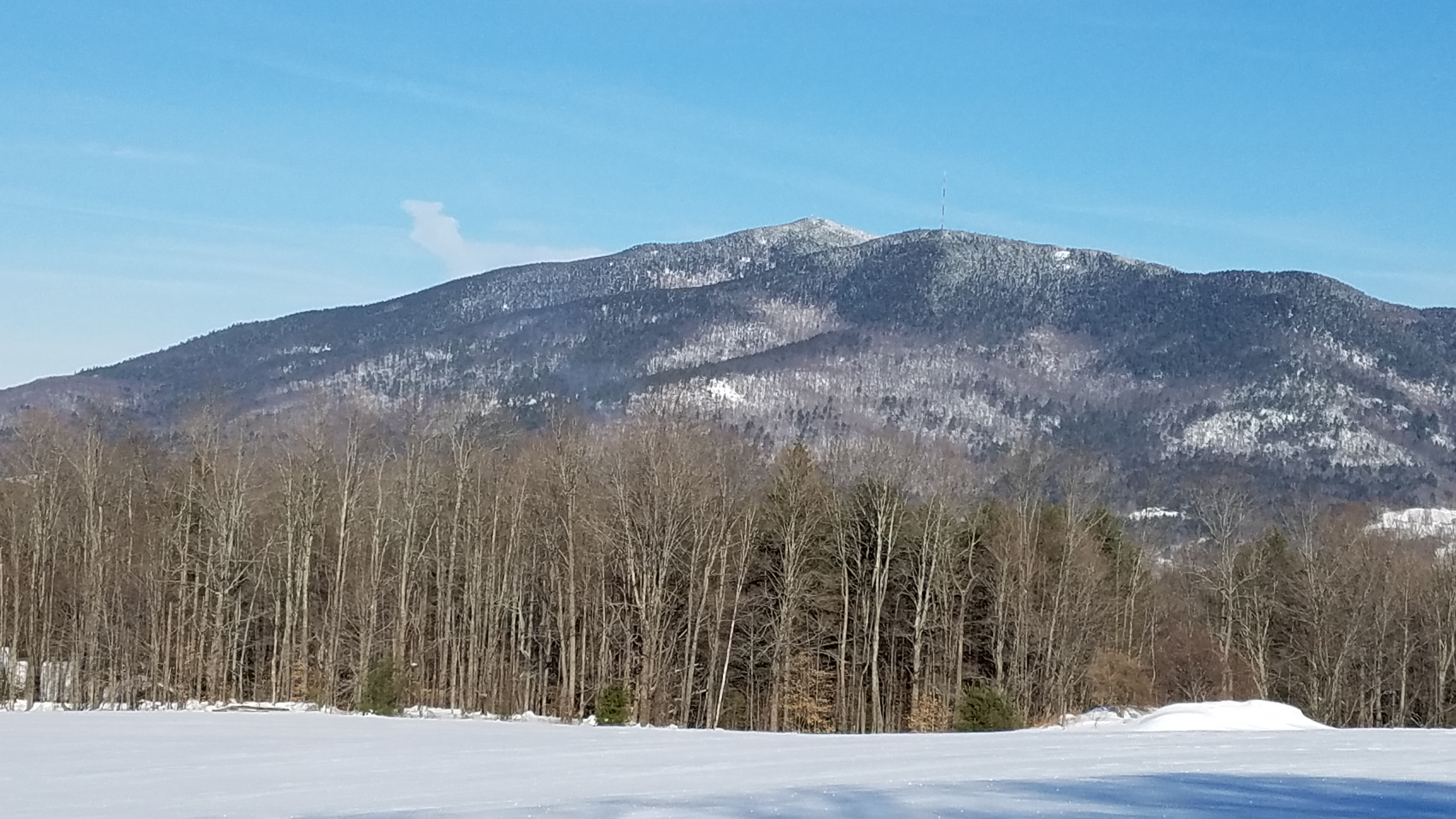
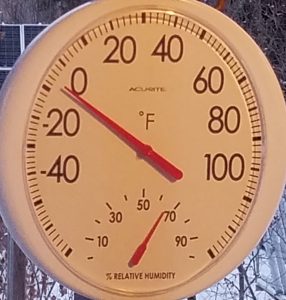
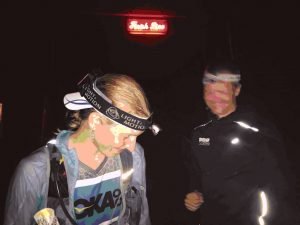
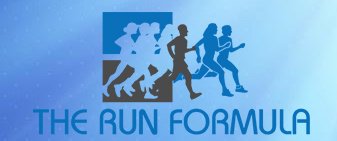
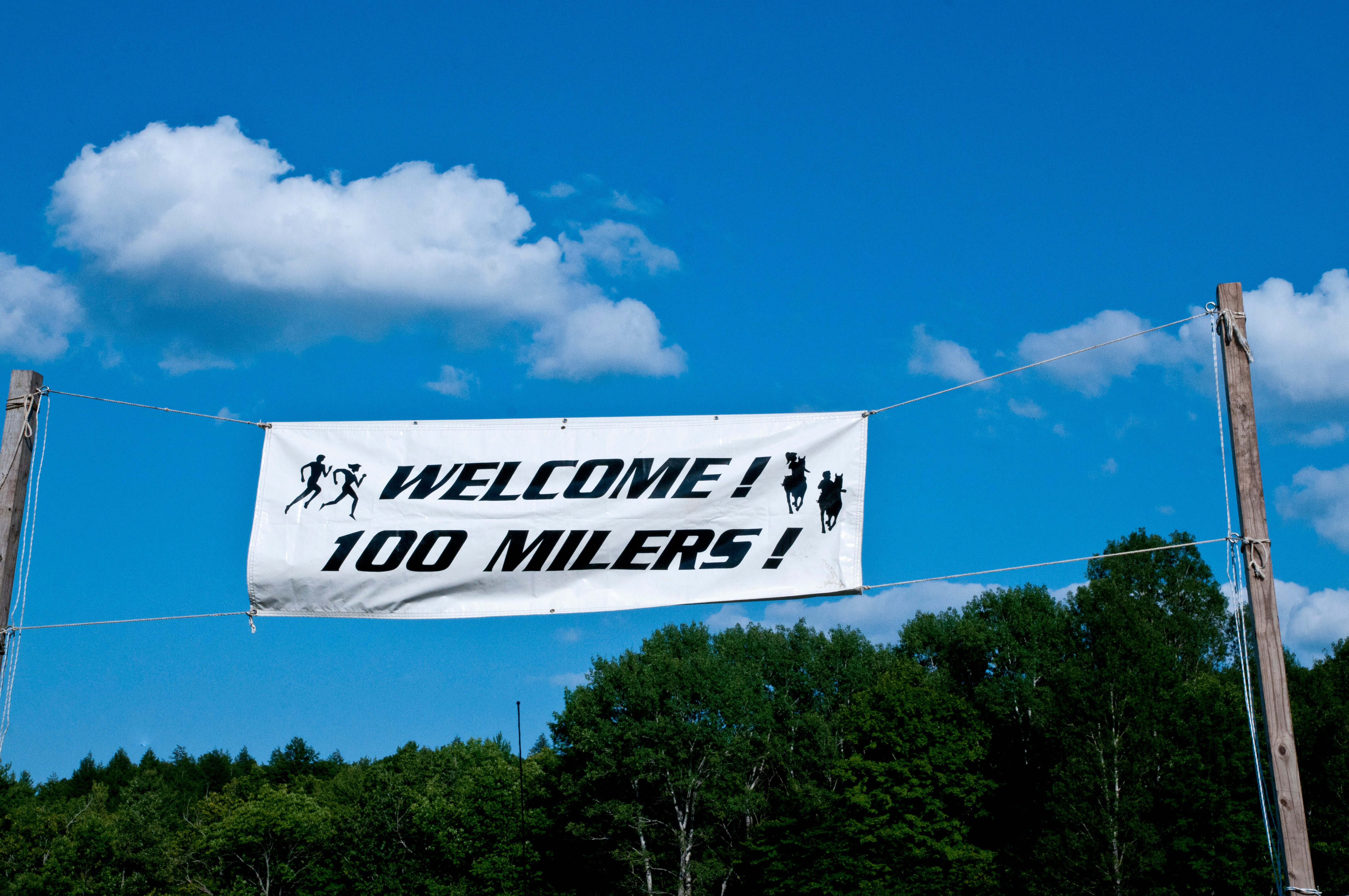
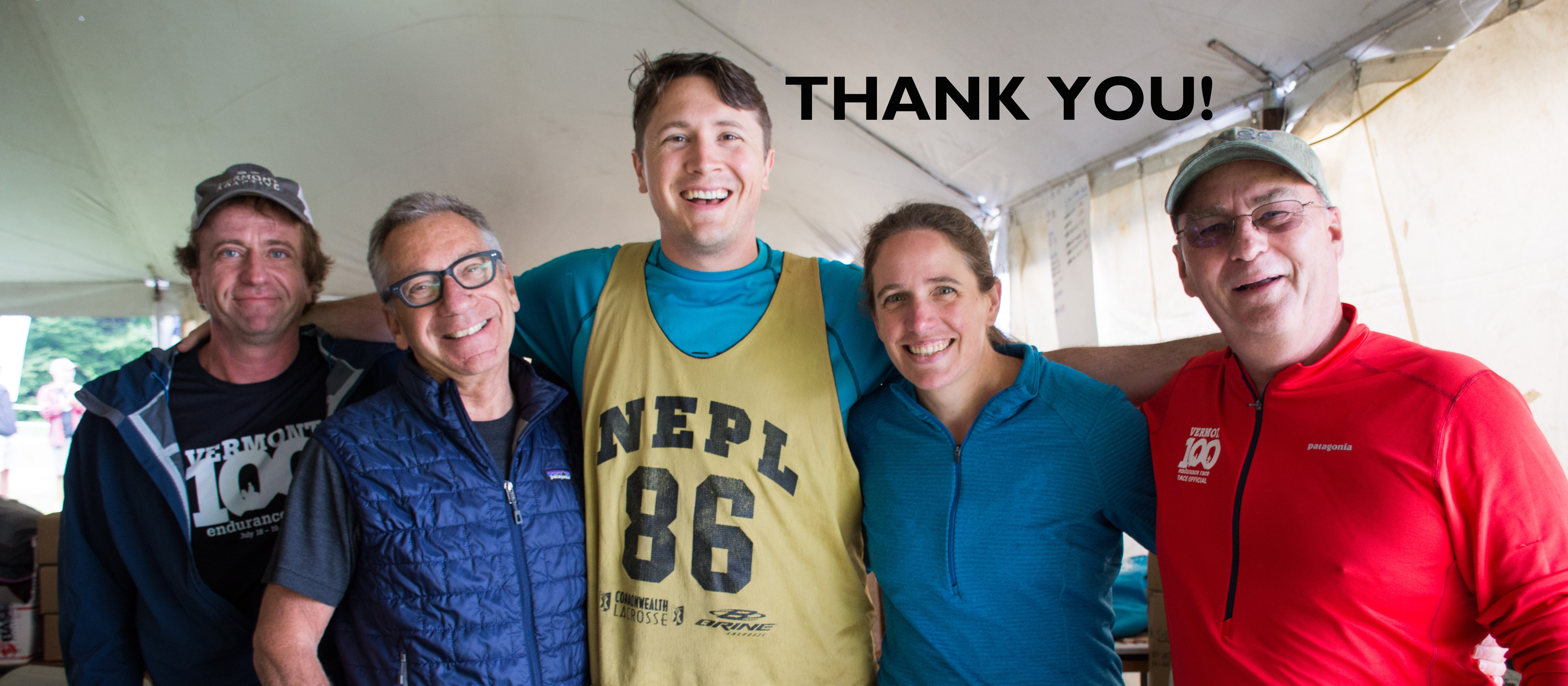

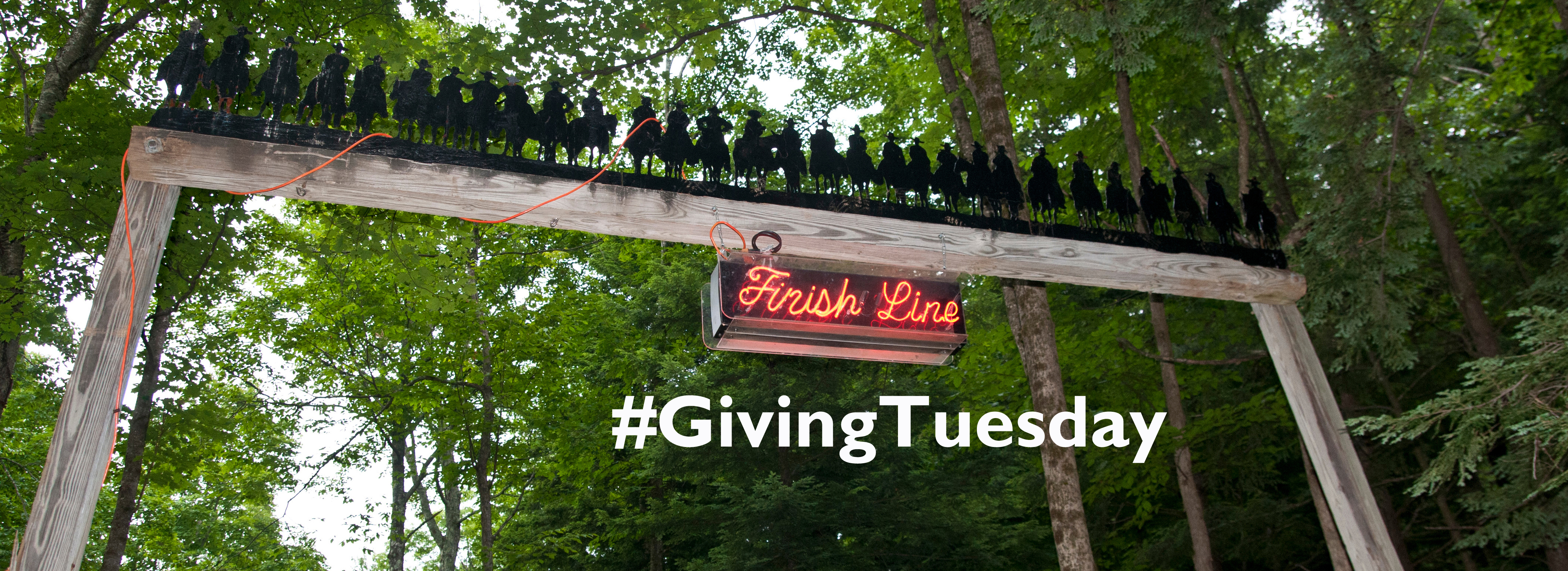
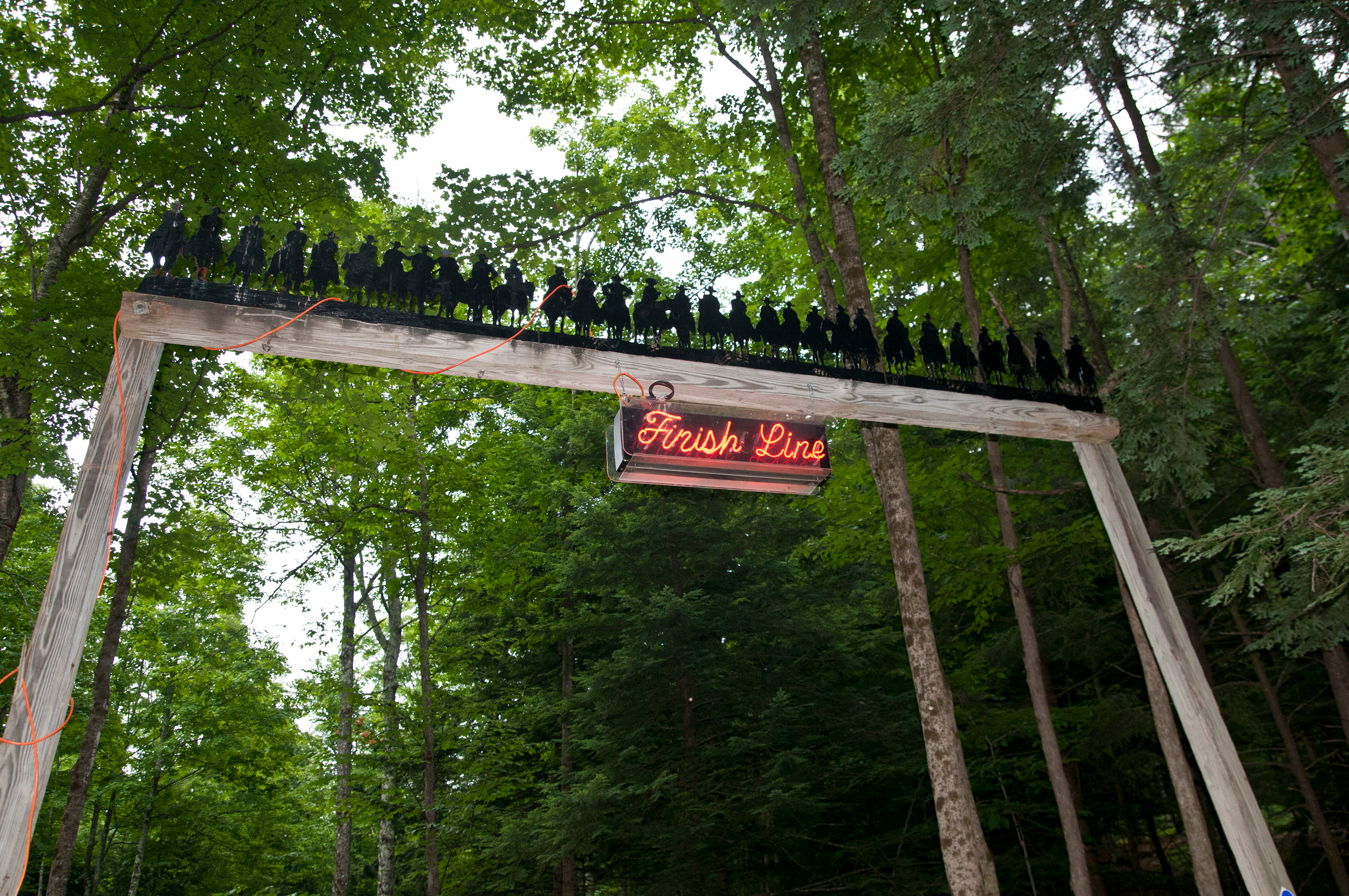

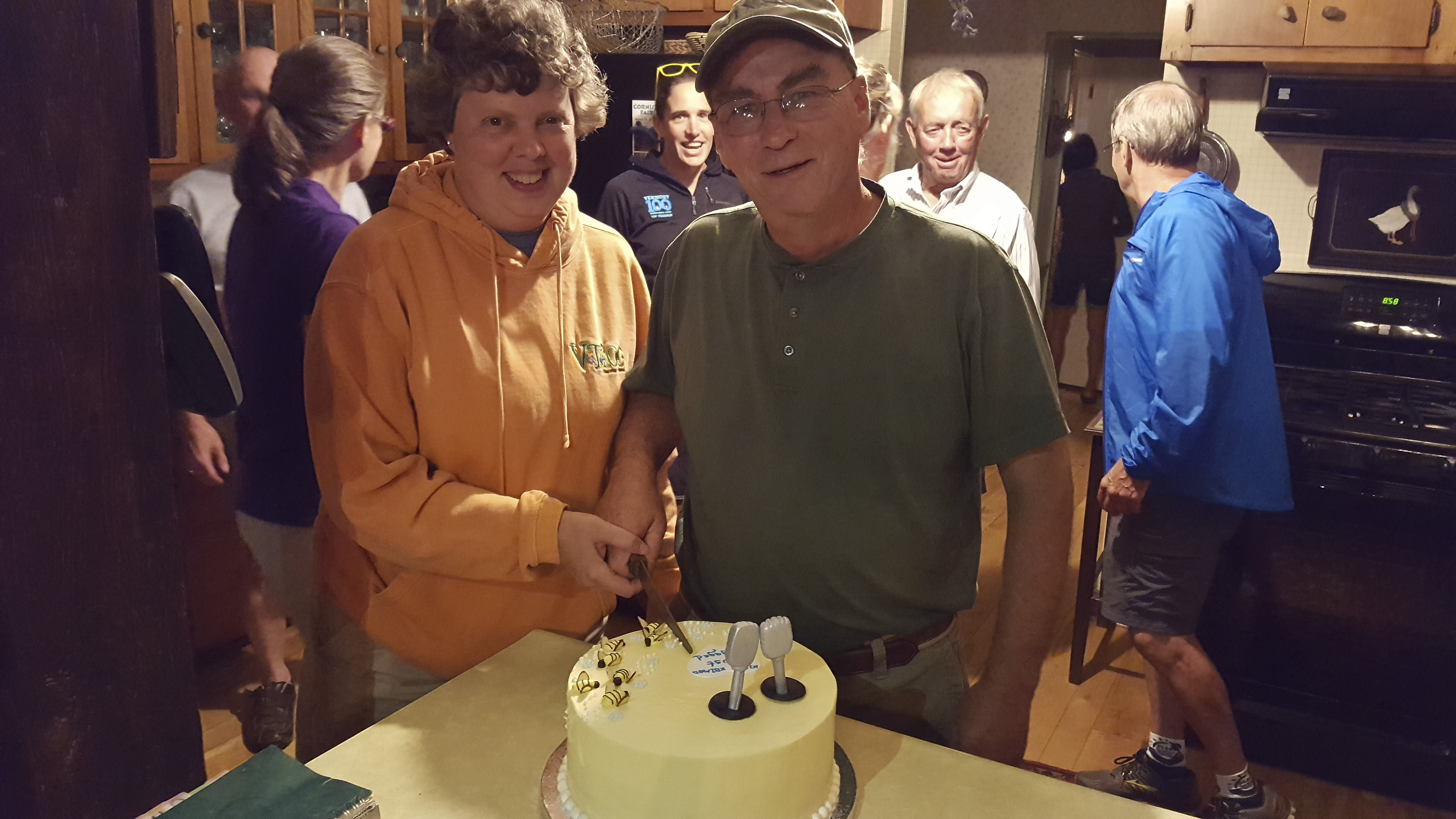
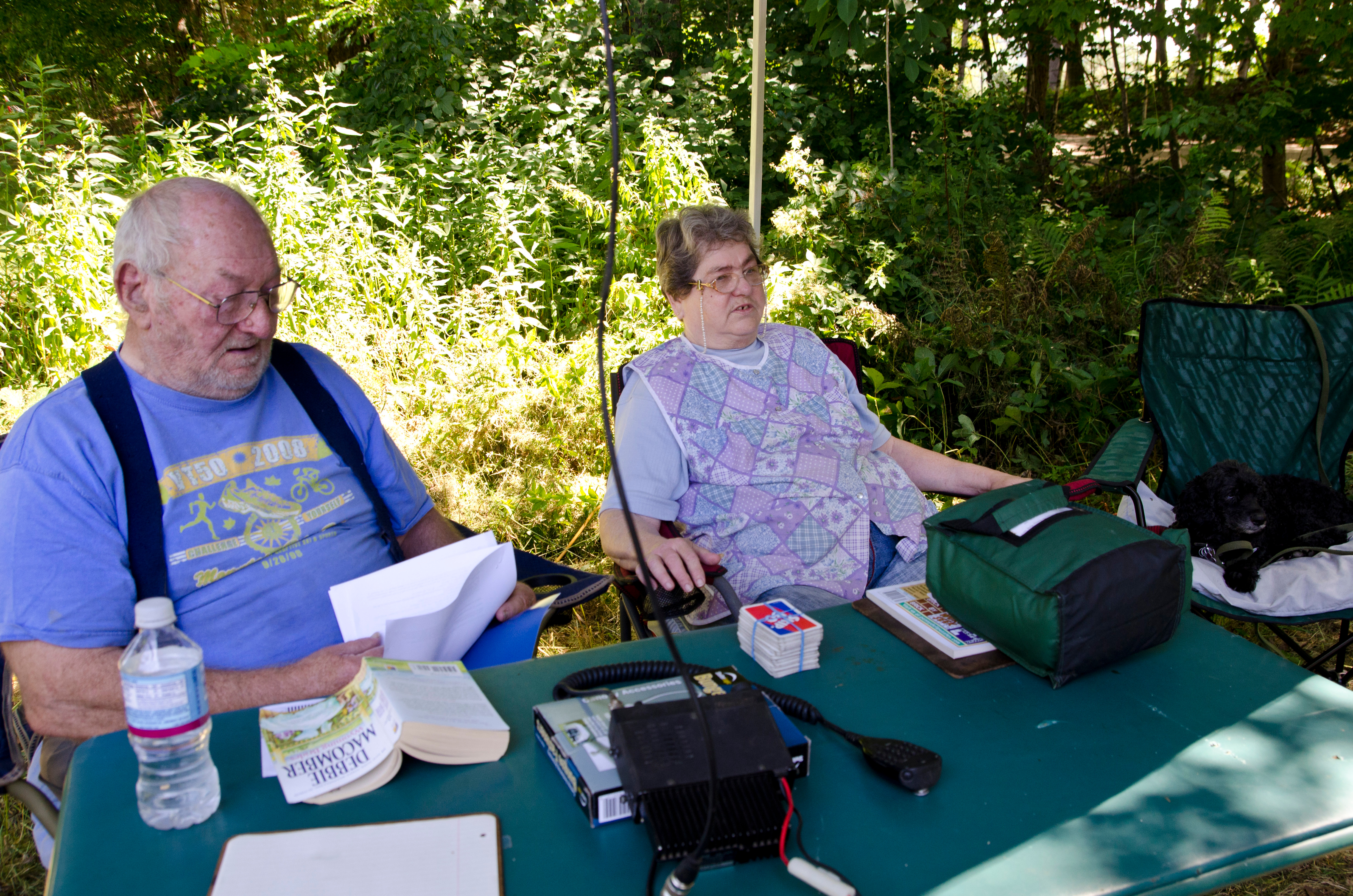
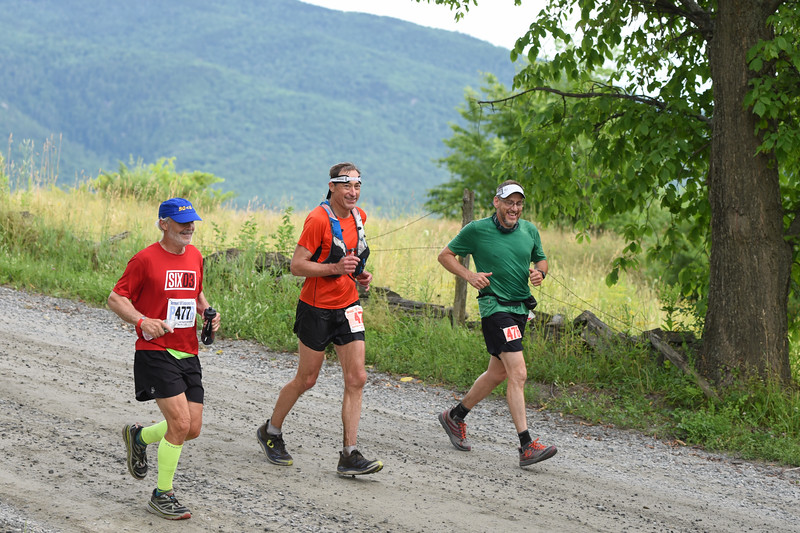
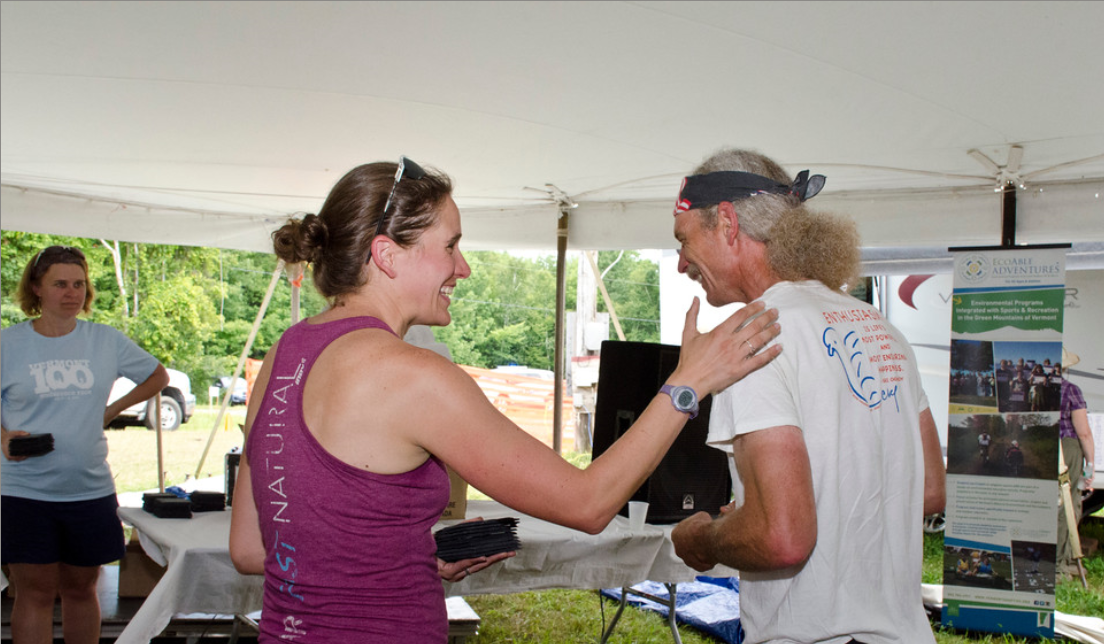
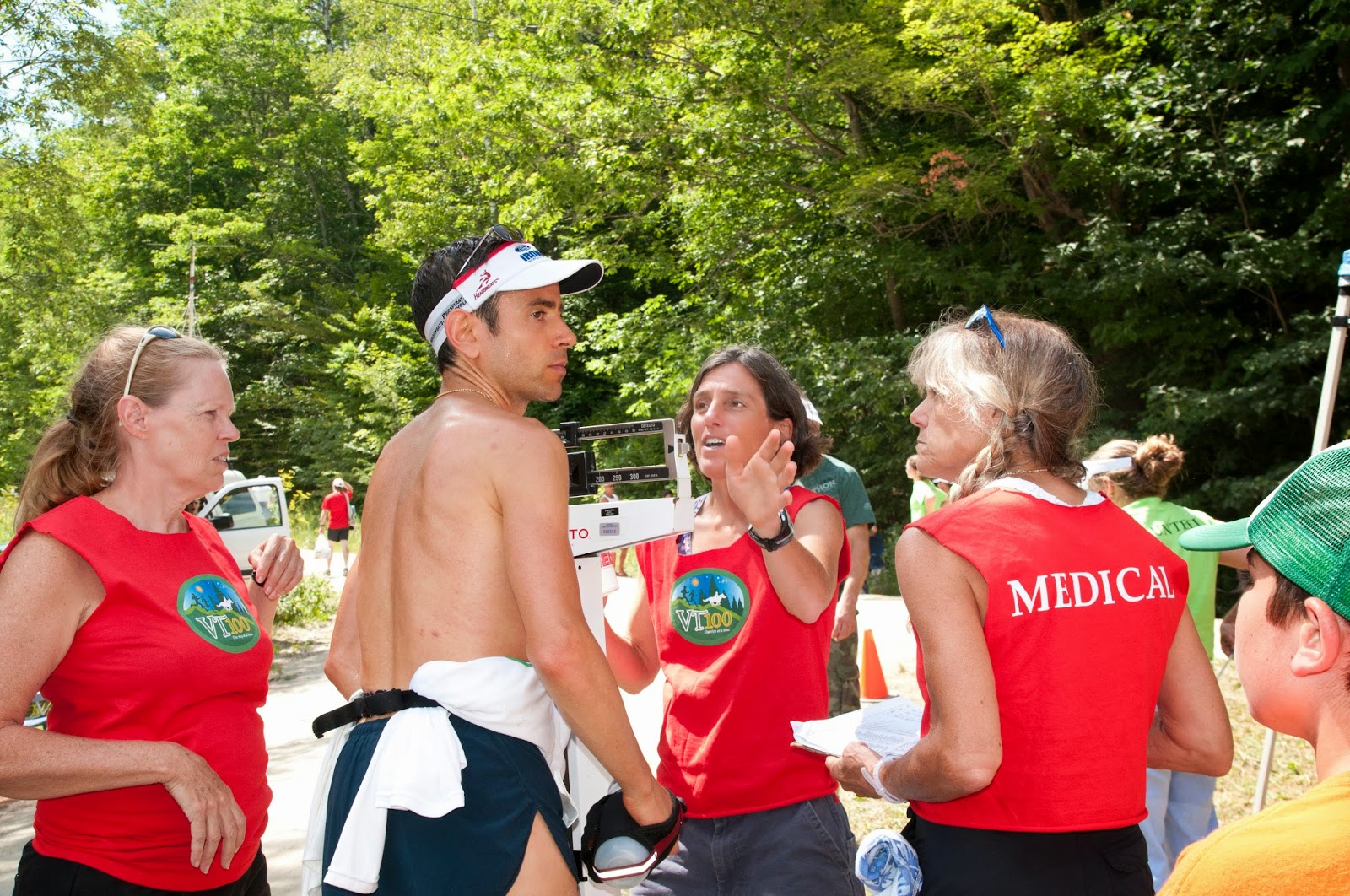
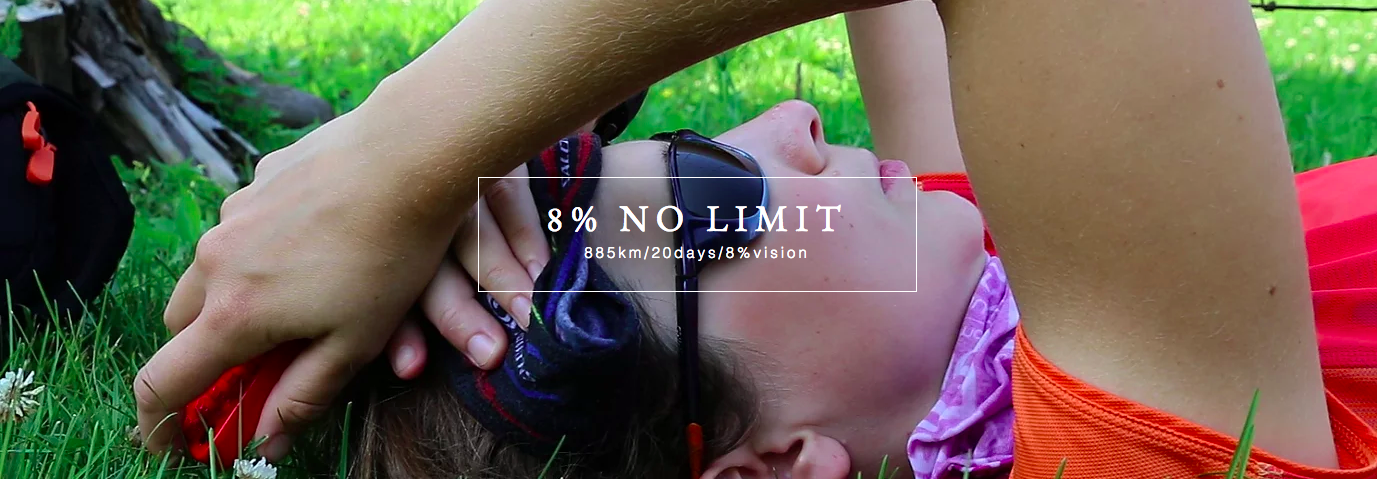
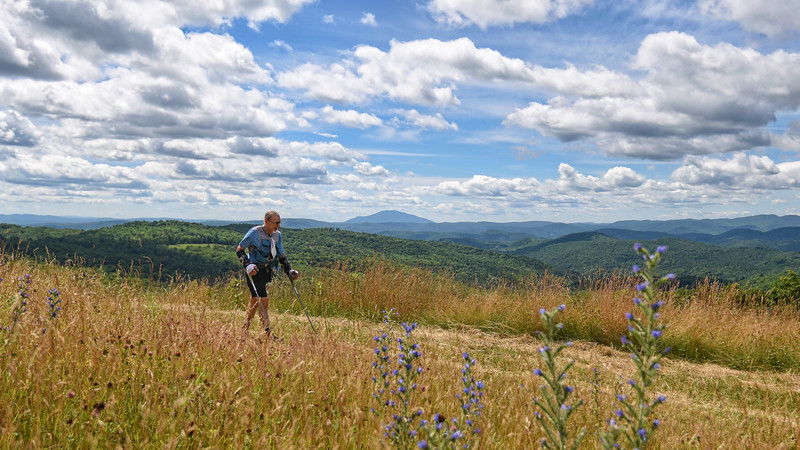
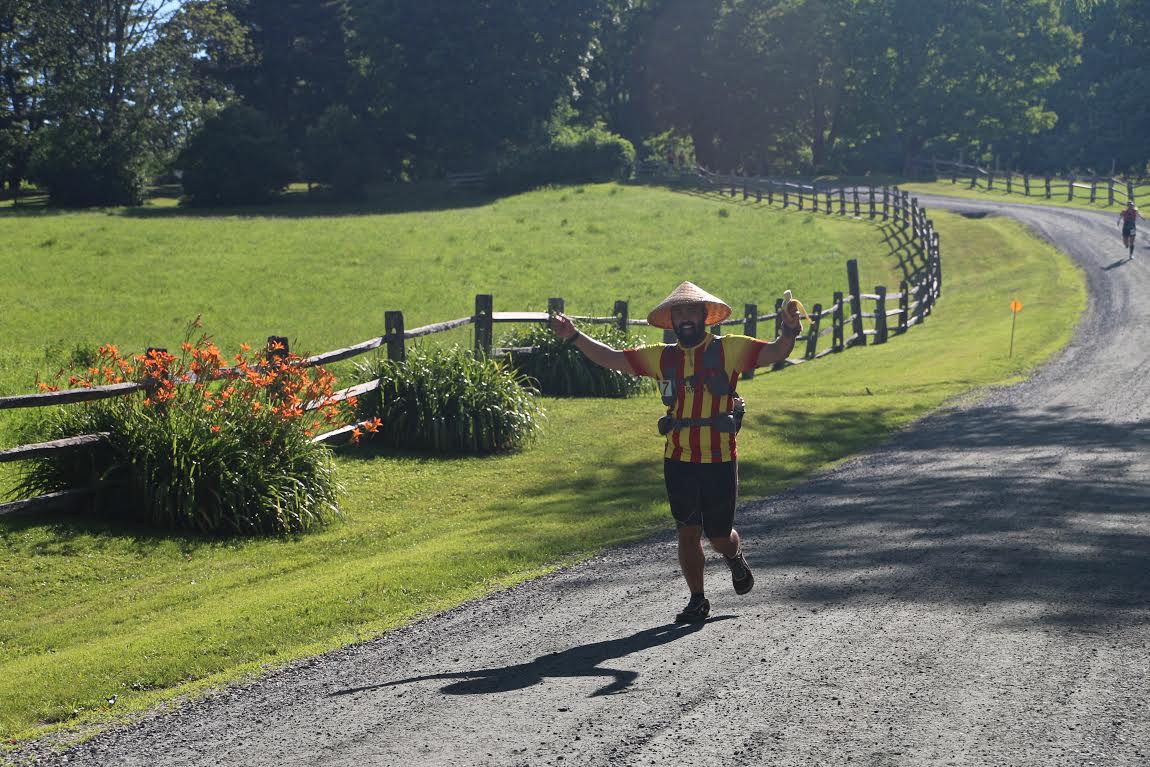
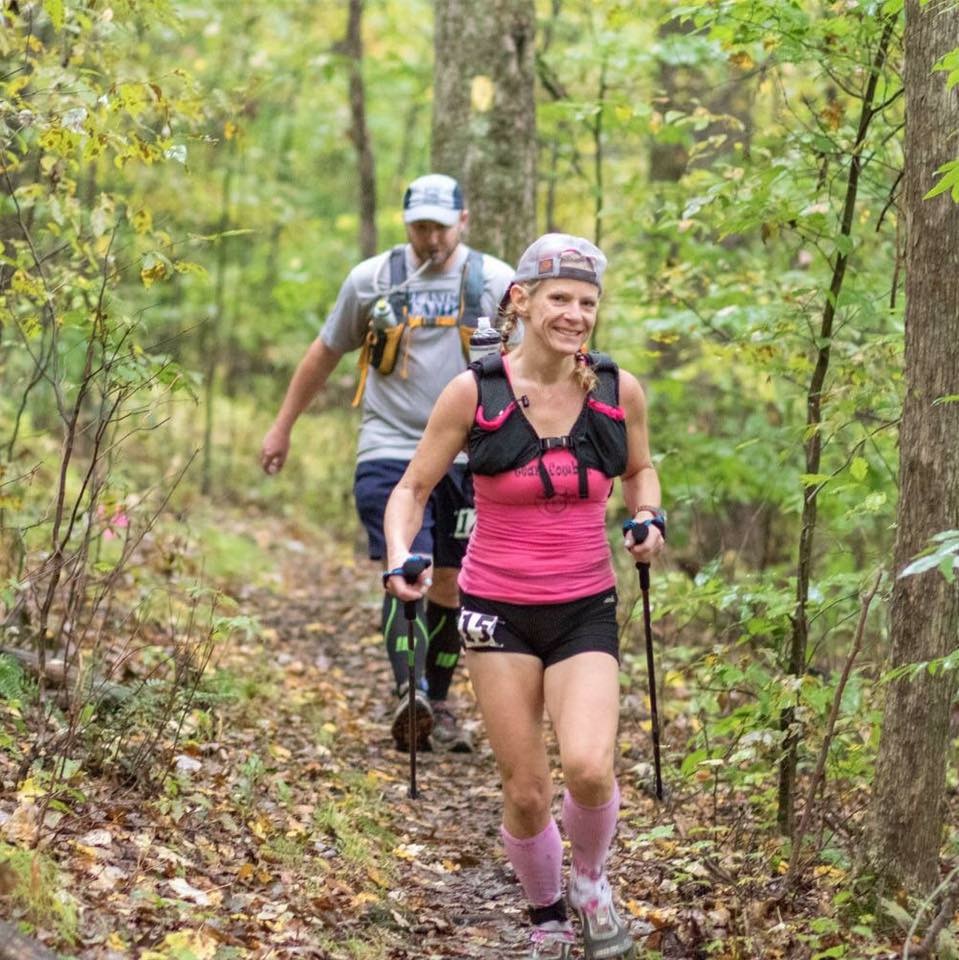 I’m a wife, mom to four, elementary art/phys ed teacher and ultra runner. I love dogs, poetry and photography. This is my second year raising funds for Vermont Adaptive.
I’m a wife, mom to four, elementary art/phys ed teacher and ultra runner. I love dogs, poetry and photography. This is my second year raising funds for Vermont Adaptive. 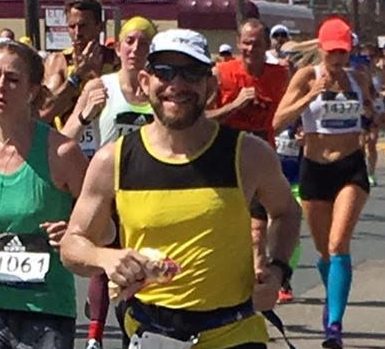 I ran the race in 2010 and that was my 1st intro to Vermont adaptive and ski. It was very cool to see what is being done to help people with disabilities to have more of the life experiences they otherwise may be missing. I raised money for team Hoyt for 3 years even was able to have the privilege of pushing an athlete in a chair during one of the local races. I’ve enjoyed the feeling of supporting a cause beyond my own personal goals. I was going to participate in this years race, and when I saw the team being formed, I jumped at the chance. It’s really an honor to be supporting this program and all of you who dedicate yourselves to improving the lives of others. So thank you!!
I ran the race in 2010 and that was my 1st intro to Vermont adaptive and ski. It was very cool to see what is being done to help people with disabilities to have more of the life experiences they otherwise may be missing. I raised money for team Hoyt for 3 years even was able to have the privilege of pushing an athlete in a chair during one of the local races. I’ve enjoyed the feeling of supporting a cause beyond my own personal goals. I was going to participate in this years race, and when I saw the team being formed, I jumped at the chance. It’s really an honor to be supporting this program and all of you who dedicate yourselves to improving the lives of others. So thank you!!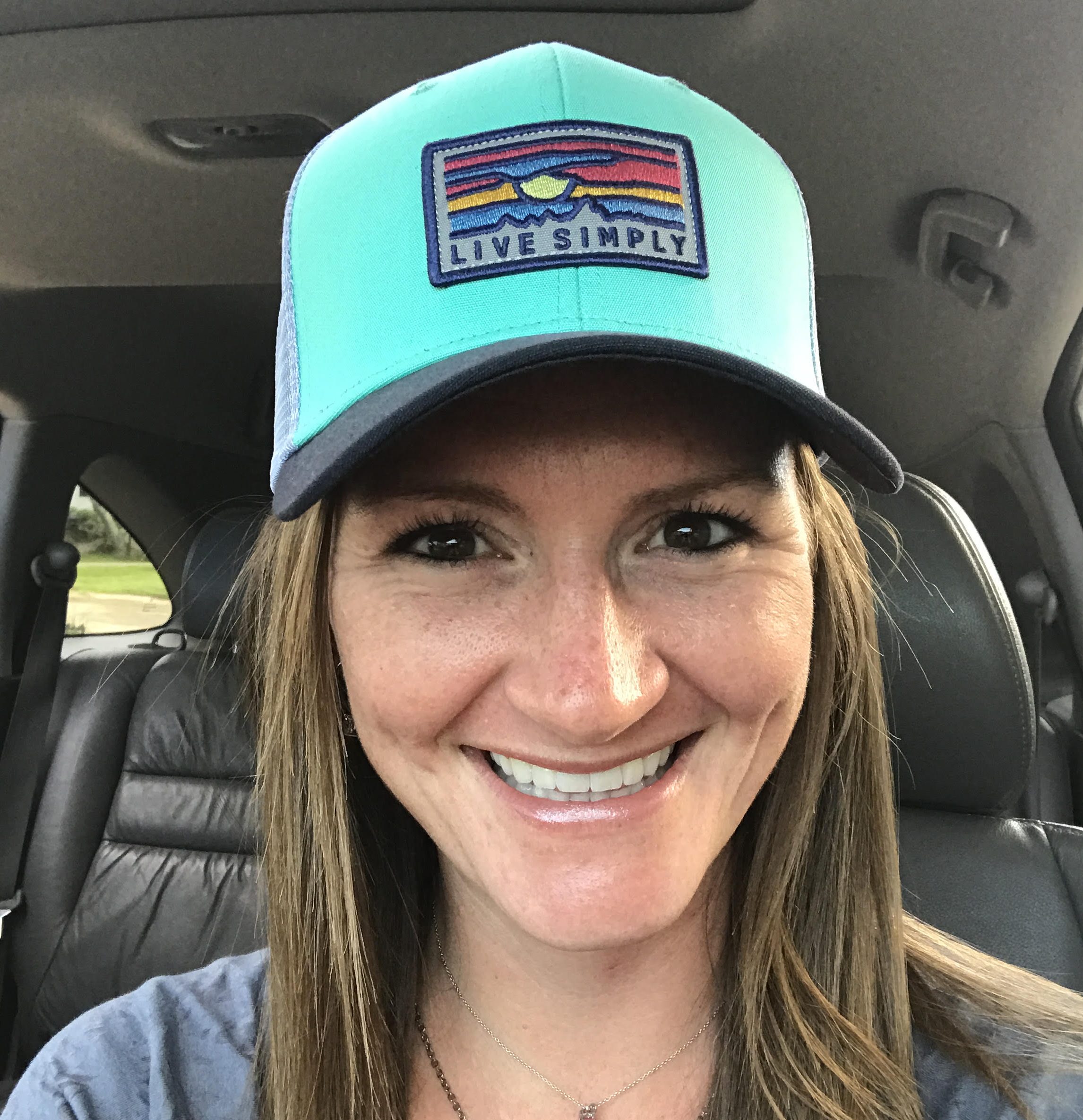 This is my first year raising money for Vermont Adaptive. I have participated in sports and outdoor activities for as long as I can remember, but running is my greatest passion. It would really be impossible for me to describe myself without being able to share how much running is a part of who I am, whether it be out on the road or trails, or supporting and spectating others. At the same time, I have loved ones who have been sidelined due to lifelong disability, who dream of being able to join in with their friends and family. I also have loved ones who have lost, through illness or injury, their ability to participate in what they are passionate about, and while a few of those people were able to redirect their passions elsewhere, others still struggle. Being physical active provides an immeasurable value to one’s life not easily replaced by anything else. I wanted to run to raise money for Vermont Adaptive because they work so hard to provide equal opportunities for people of all abilities to participate in sports and recreational activities, giving them the experiences they would not otherwise have. I feel honored to be able to share my passion for running with others in this way, so that they may know the same joy and wellness through physical activity.
This is my first year raising money for Vermont Adaptive. I have participated in sports and outdoor activities for as long as I can remember, but running is my greatest passion. It would really be impossible for me to describe myself without being able to share how much running is a part of who I am, whether it be out on the road or trails, or supporting and spectating others. At the same time, I have loved ones who have been sidelined due to lifelong disability, who dream of being able to join in with their friends and family. I also have loved ones who have lost, through illness or injury, their ability to participate in what they are passionate about, and while a few of those people were able to redirect their passions elsewhere, others still struggle. Being physical active provides an immeasurable value to one’s life not easily replaced by anything else. I wanted to run to raise money for Vermont Adaptive because they work so hard to provide equal opportunities for people of all abilities to participate in sports and recreational activities, giving them the experiences they would not otherwise have. I feel honored to be able to share my passion for running with others in this way, so that they may know the same joy and wellness through physical activity. 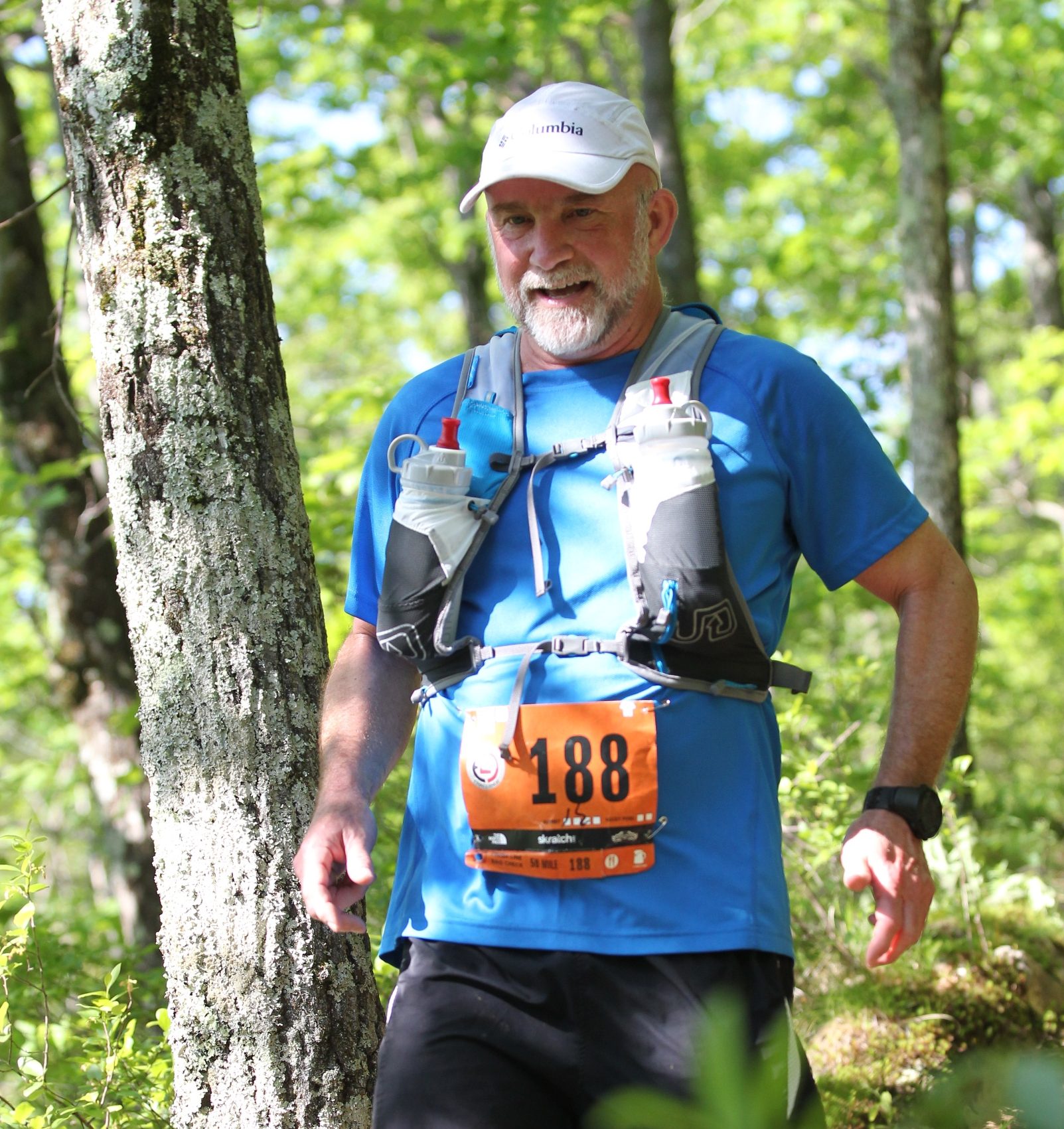 I decided to run to raise money for Vermont Adaptive because it allows me to do two things I enjoy at the same time, run and help people.
I decided to run to raise money for Vermont Adaptive because it allows me to do two things I enjoy at the same time, run and help people. I need to run a 100 miler…a year ago I choose to raise money as a way to insure my entry into VT100…not much of a statement about Vermont Adaptive but I can say this…I’ve been on the board of the Krempels Center in Portsmouth, NH for 7 or 8 years where we help people with acquired brain injuries regain meaning and purpose in their lives. This includes connecting some of the members with adaptive bikes so that they can ride in an annual fundraiser called the King of the Road Challenge. I have learned how these folks struggle each day dealing with their issues…yet they don’t complain or give up…and they’re always ready to aid others. It’s pretty motivating for me as I’m in a perpetual training cycle and I imagine that Vermont Adaptive is also providing folks with an opportunity to push themselves beyond their current injuries…I’m very happy to be part of Team Run 2 Empower and support the efforts of Vermont Adaptive.
I need to run a 100 miler…a year ago I choose to raise money as a way to insure my entry into VT100…not much of a statement about Vermont Adaptive but I can say this…I’ve been on the board of the Krempels Center in Portsmouth, NH for 7 or 8 years where we help people with acquired brain injuries regain meaning and purpose in their lives. This includes connecting some of the members with adaptive bikes so that they can ride in an annual fundraiser called the King of the Road Challenge. I have learned how these folks struggle each day dealing with their issues…yet they don’t complain or give up…and they’re always ready to aid others. It’s pretty motivating for me as I’m in a perpetual training cycle and I imagine that Vermont Adaptive is also providing folks with an opportunity to push themselves beyond their current injuries…I’m very happy to be part of Team Run 2 Empower and support the efforts of Vermont Adaptive.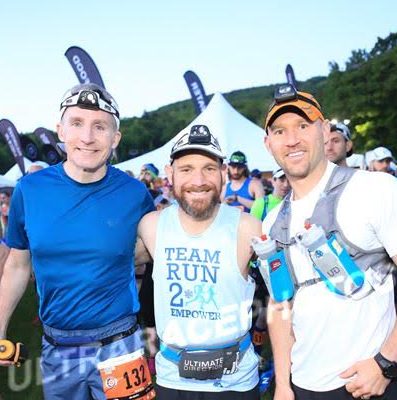
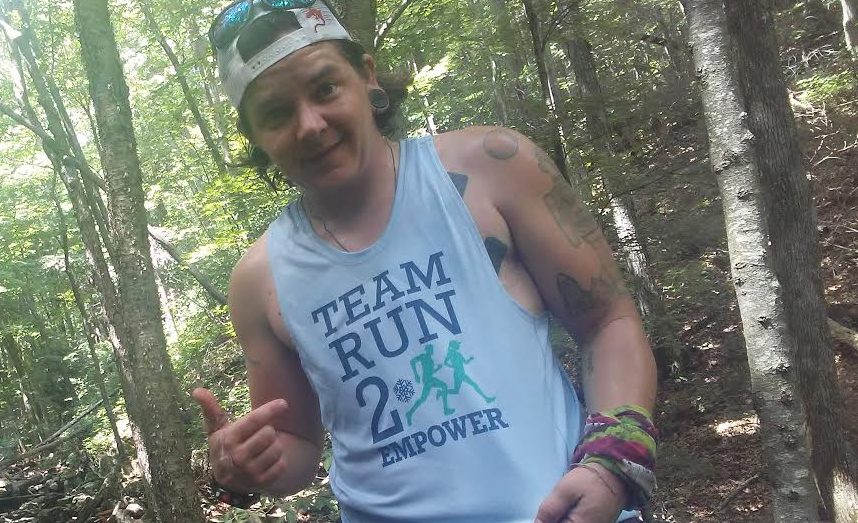
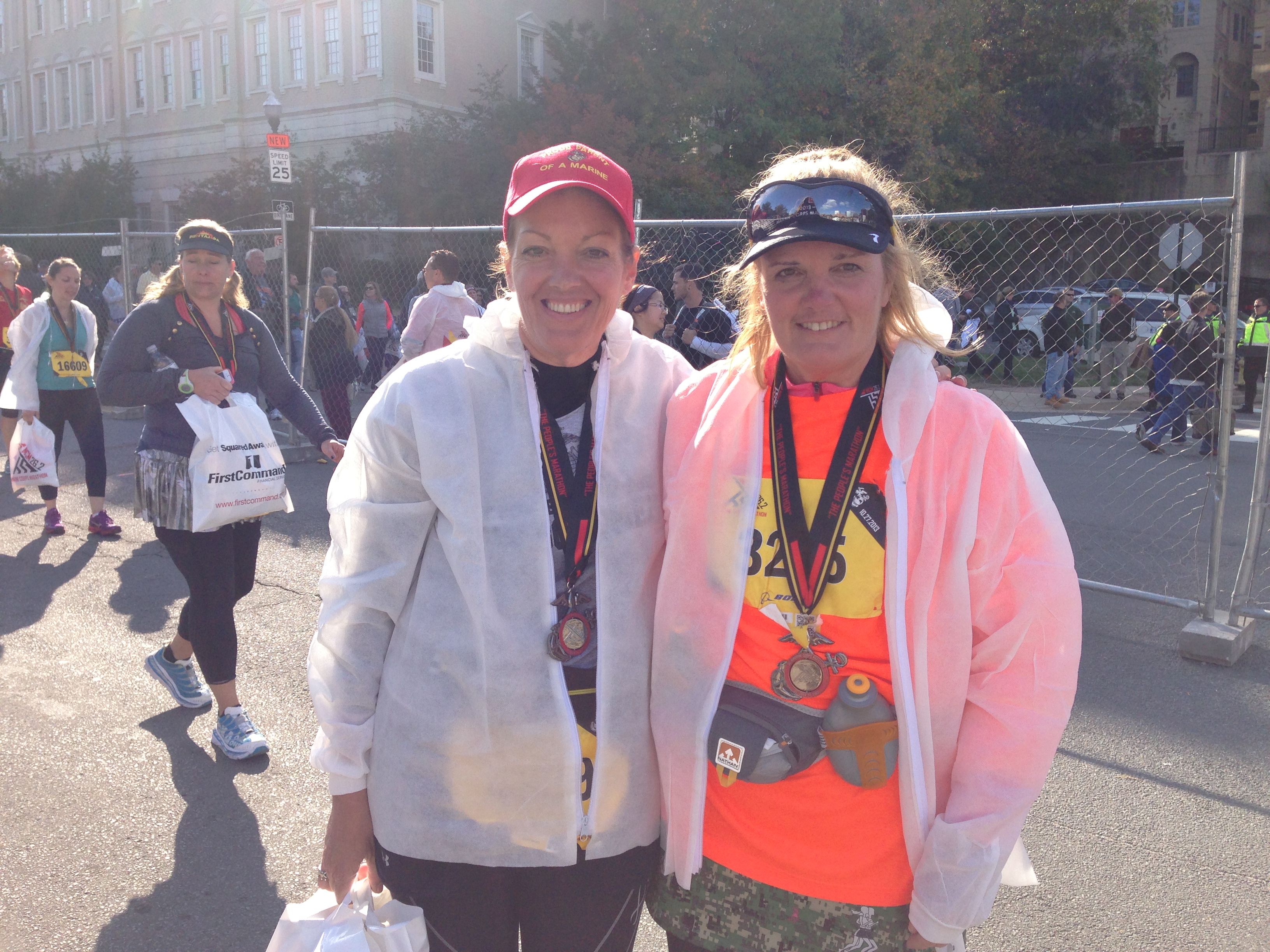 Running cross country and track was an absolute lifesaver when we moved as my twin sister and I were starting 7th grade. It gave me goals; a “rabbit” ahead of me to chase; a rivals time; a hill; laps on the track;or the clock itself-to challenge myself. The sights and sounds of a trail race or a track meet were inviting and I felt “at home” and like I belonged. The move was full of challenges but gave me the biggest “gift” in finding running.
Running cross country and track was an absolute lifesaver when we moved as my twin sister and I were starting 7th grade. It gave me goals; a “rabbit” ahead of me to chase; a rivals time; a hill; laps on the track;or the clock itself-to challenge myself. The sights and sounds of a trail race or a track meet were inviting and I felt “at home” and like I belonged. The move was full of challenges but gave me the biggest “gift” in finding running.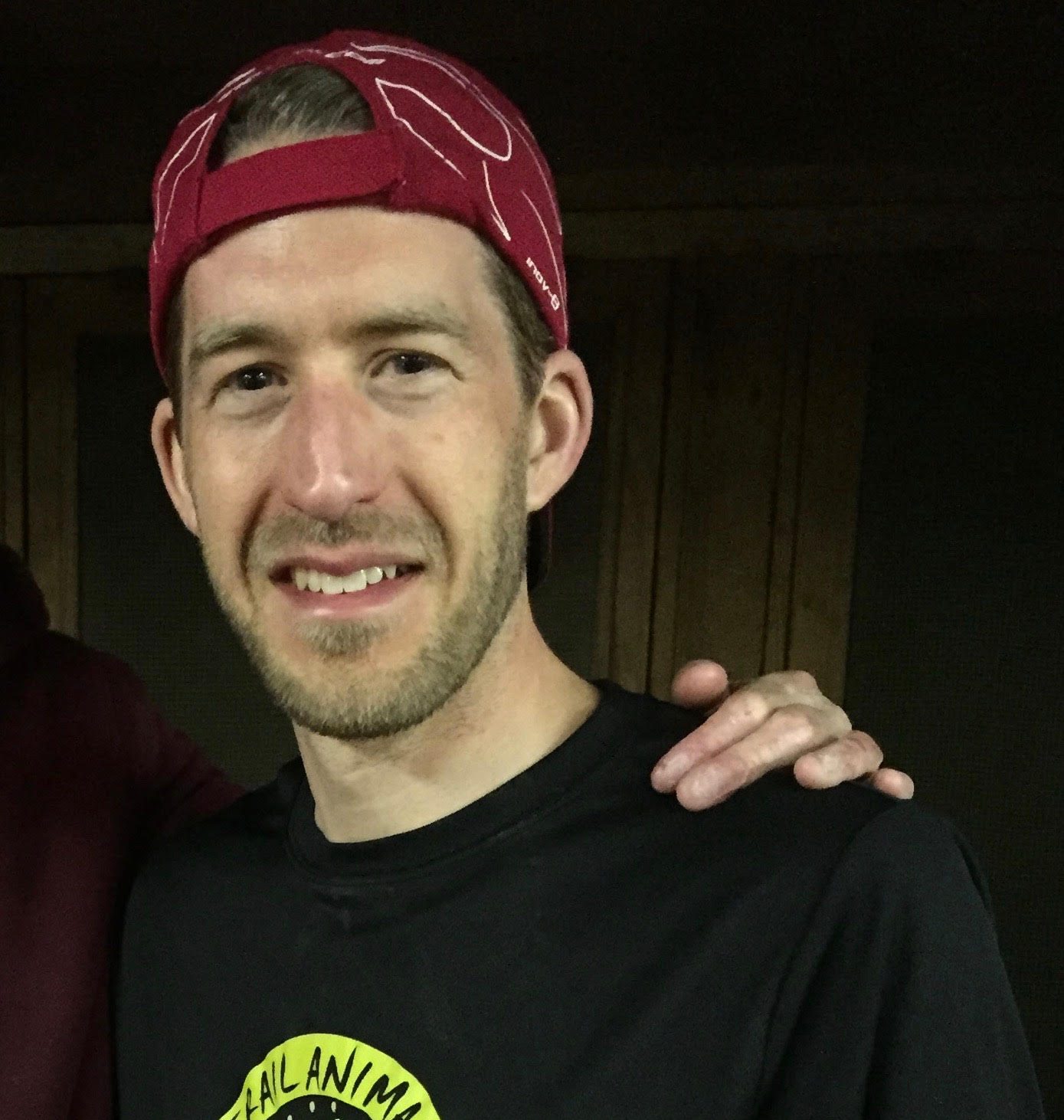 This year is my fourth time participating in the Vermont 100, but the first time I’ve ever raised money for Vermont Adaptive. It has been through my participation in VT100 that I’ve learned about Vermont Adaptive and I’ve always admired their work ever since first learning about them. I have a background in sports medicine and once worked for an orthotics and prosthetics company where I gained a first-hand appreciation for crafting assistive devices for people to stay active. I feel blessed to have my health and the enjoyment I get from being active through running, so this year I decided to put my time and talents to use for a worthy cause, and I couldn’t have chosen a better organization than Vermont Adaptive! It is so motivating to see the determination, and enjoyment
This year is my fourth time participating in the Vermont 100, but the first time I’ve ever raised money for Vermont Adaptive. It has been through my participation in VT100 that I’ve learned about Vermont Adaptive and I’ve always admired their work ever since first learning about them. I have a background in sports medicine and once worked for an orthotics and prosthetics company where I gained a first-hand appreciation for crafting assistive devices for people to stay active. I feel blessed to have my health and the enjoyment I get from being active through running, so this year I decided to put my time and talents to use for a worthy cause, and I couldn’t have chosen a better organization than Vermont Adaptive! It is so motivating to see the determination, and enjoyment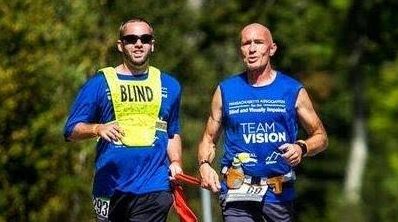 Mark Ryder
Mark Ryder I was matched with a little guy named Nick about 3 years ago. Nick, my WingMan, suffered a brain injury at birth and does not have mobility in one whole side. His parents have never given up on the hope that he might be able walk, and even run someday. He is excelling in school, very dedicated to all of his different therapies and loved by everyone he meets…his energy is infectious! He participates in a local adaptive sports camp where he lives, much like VASS, and largely in part thanks to the kindness of donors who support such an amazing opportunity.
I was matched with a little guy named Nick about 3 years ago. Nick, my WingMan, suffered a brain injury at birth and does not have mobility in one whole side. His parents have never given up on the hope that he might be able walk, and even run someday. He is excelling in school, very dedicated to all of his different therapies and loved by everyone he meets…his energy is infectious! He participates in a local adaptive sports camp where he lives, much like VASS, and largely in part thanks to the kindness of donors who support such an amazing opportunity. 

